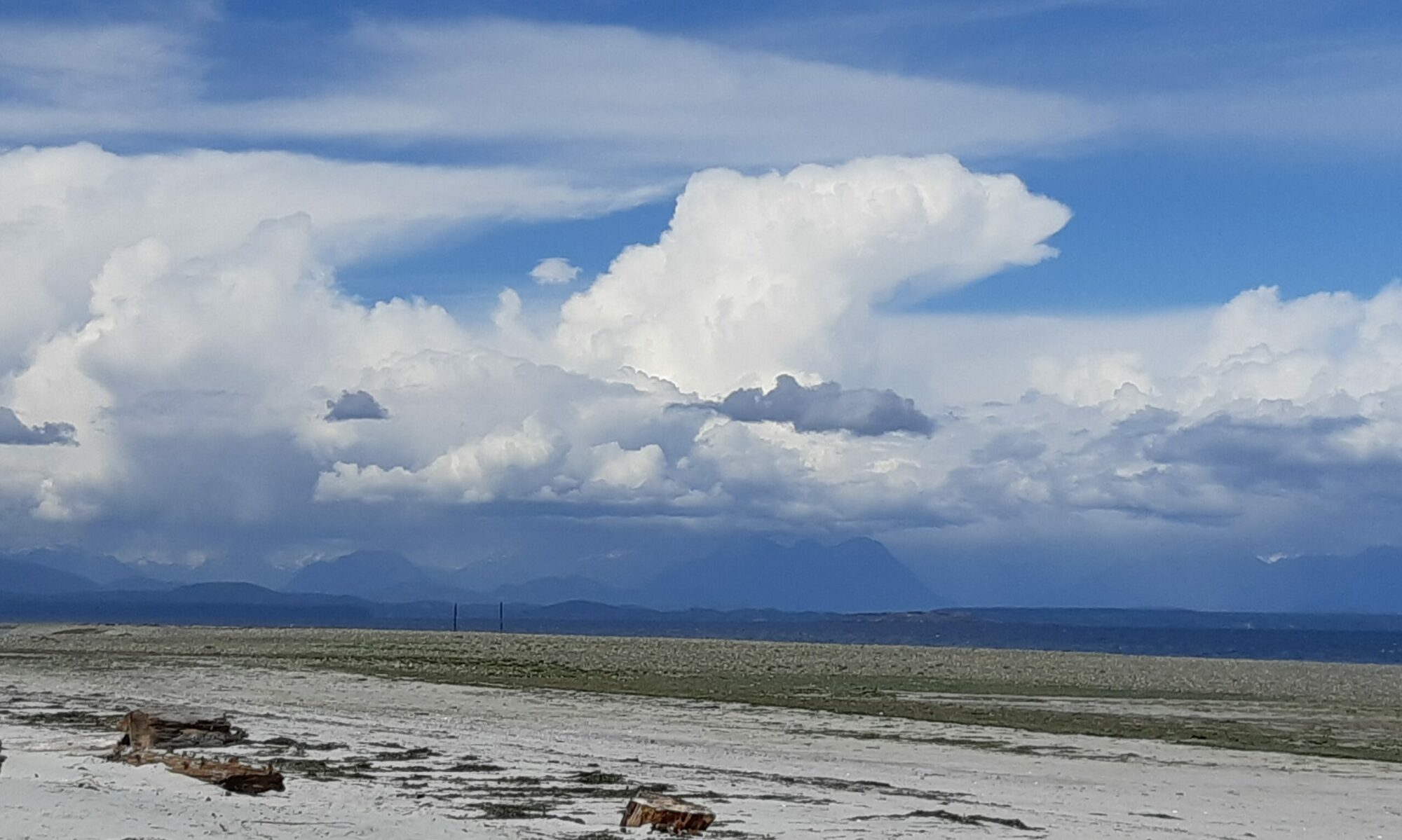FIN 135 Unit 3
FIN 135 Unit 2
FIN 131 Unit 3
FIN 131 Unit 2
Project 3 Make a Monster
My ideas:
When I thought about the them of make a monster, I was put off by the thought of creating something dark. Since I grapple with dark dreams in my life, I don’t feel inspired to delve inwards at this time. Instead I decided to go to the deep sea doe inspiration and, having seen a number of videos about deep sea creatures in general and angler fish in particular, I decided to sketch a fish from my imagination.
I thought about how a fish with massive teeth and unusual appendages, like the angler fish, can be thought of as monstrous yet are simply adapted to their living conditions. It’s a reminder that standards of beauty can be artificial and that qualities beyond appearances may be considered beautiful.
Artist Research:
Jean Tinguely
Was interested in the notion of art and created machines that were deliberately ‘messy’ and even unfinished in appearance. He made machines that moved like other machines but produced or ‘achieved’ nothing, beyond movement. It was a way of challenging notions of art and either amusing or irriatating the audience, depending on personal response.
One of his machines was built to auto-destruct during an exhibition by bursting into flames. Only he and a select few knew this would occur. A small part of the machine survived the fire and is on display at MoMA.
I adore this style of challenging perceptions. It puts me in mind of Andy Kaufman who would play quite serious pranks in order to get peoples’ attention. It’s something I have even done with a friend when we were teaching on a staff of rather uptight colleagues…we shocked them and it was hilarious!
But back to Jean T. – he is quoted as saying “The world has been experiencing a whole pattern of auto-destruction. Whether in environmental disasters like Chernobyl or health disasters like AIDS”
Some of Jean T’s machines and sculptures were very playful while others were extremely morbid- especially towards the end of his life when he had been very ill, such as his ‘Mengele Totentanz’ (Mengele Deathdance).
My Project
Before deciding what to create, we had an orientation in the metal shop to give us the all important safety messages and also to get an idea of the materials and processes that would be available.
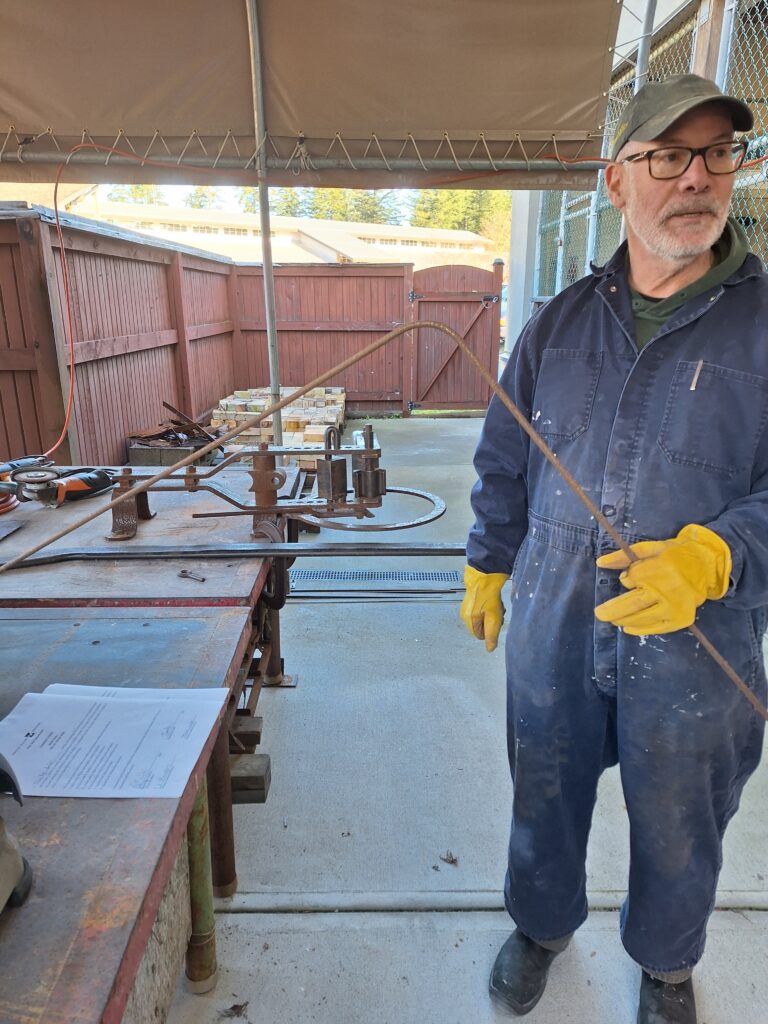
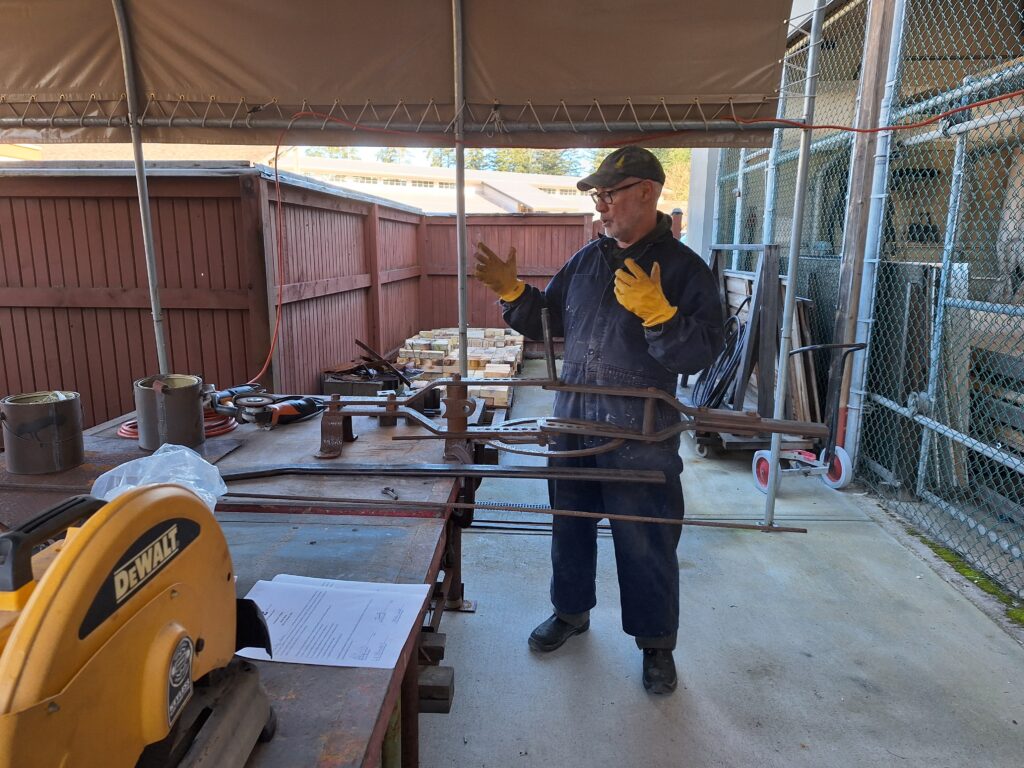
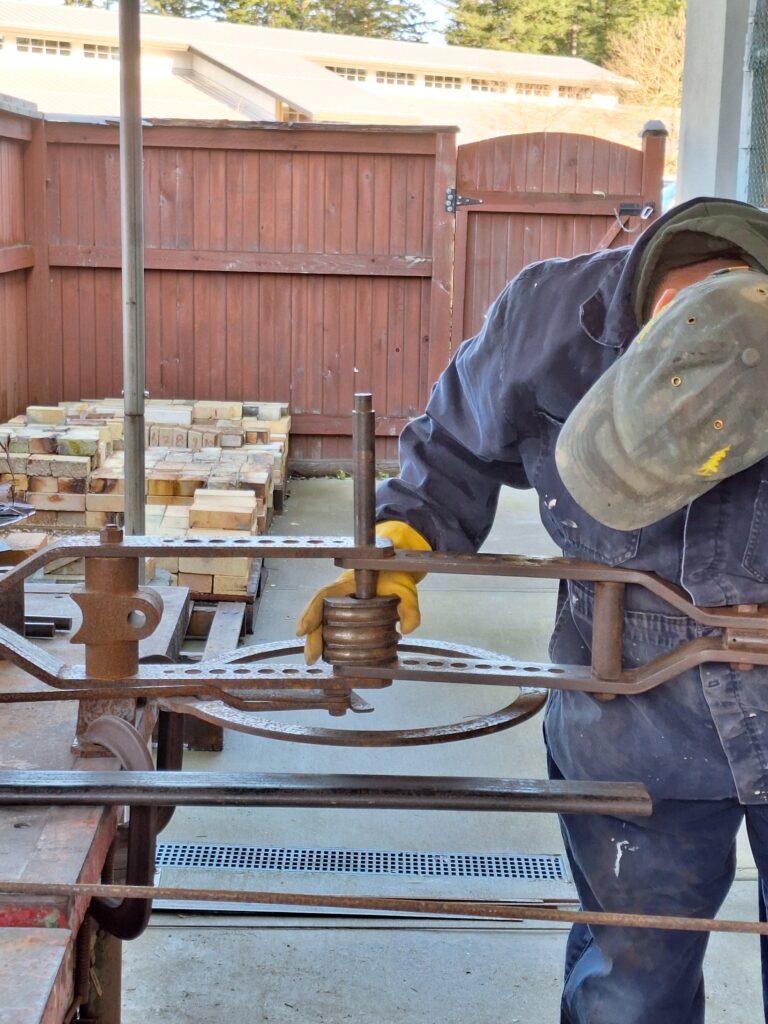
As well as this device to bend metal rods , we were shown various power tools, the plasma cutter and had a description of welding. We were also shown how to work with aluminum flashing to cut, bend and attach pieces.
Deep Sea Fish
I drew a deep sea fish from my imagination and envisaged cutting it from one piece of metal with cut-outs for the details. I gave my fish one large central eye as I figured it would help it see in the deep dark ocean and could be considered beautiful in its own way.
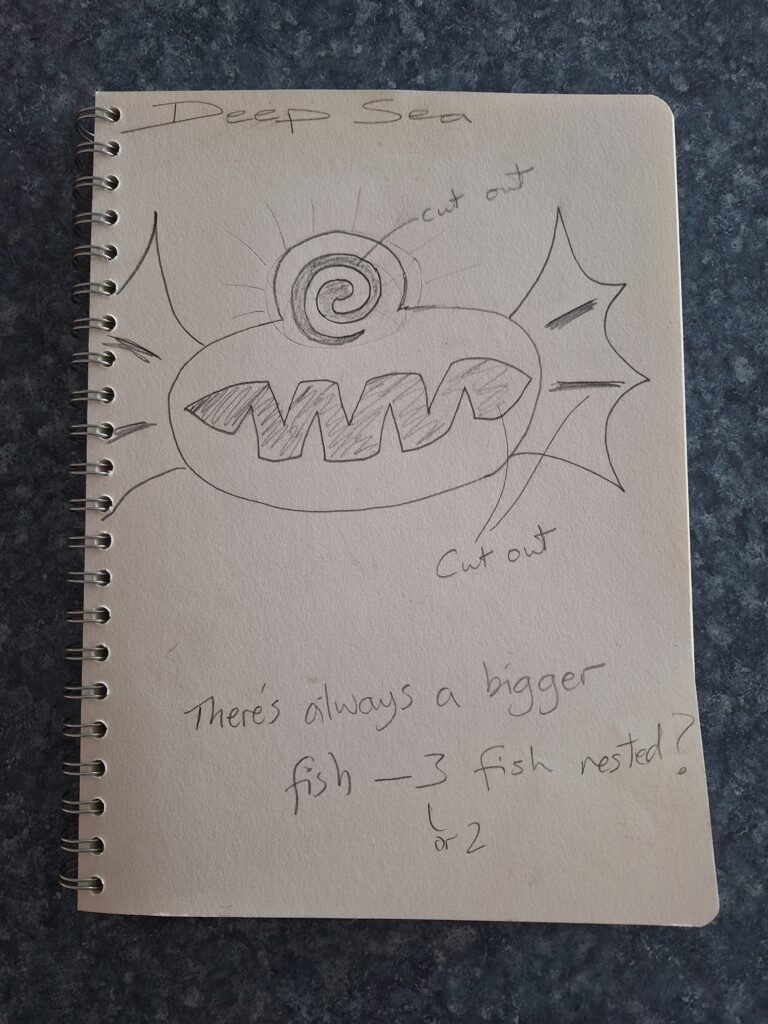
I also had the saying ‘There’s always a bigger fish!’ in my imagination. This line was in one of the Star Wars films that I watched with my kids many years ago. I thought about making the bigger fish than a suggestions was made that I project a bigger fish on the wall. Finally I settled on the suggestion to set up a light source to cast a shadow of the fish I make- to be the bigger fish. I also plan to suspend my fish from fishing line so it looks like it is swimming in the air/ shadows.
My next step was to cut out a prototype from aluminum:
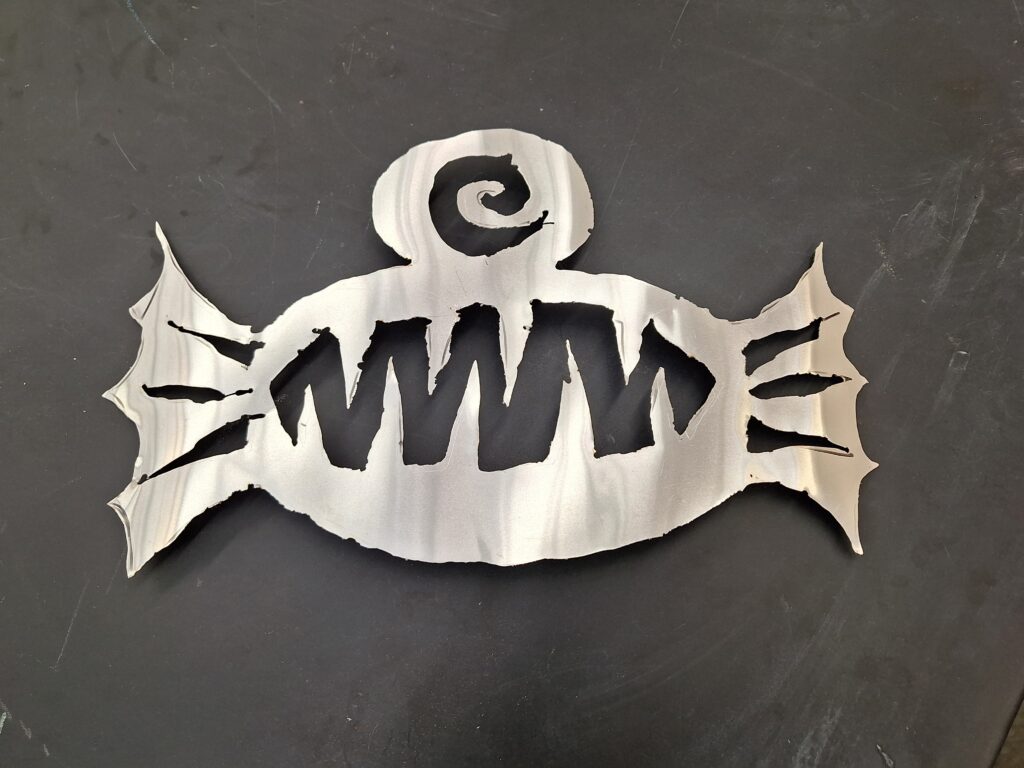
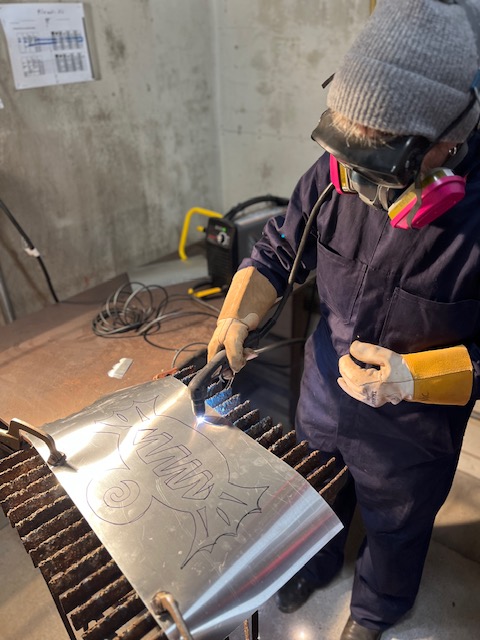
I was generally pleased with my first ever metal work project. Although the lines were not ‘supposed’ to be jagged, I decided I like them that way.
Having seen some amazing corten steel sculptures, I was inspired to fabricate my fish in steel next. I had to prep one side of the reclaimed steel with a wire power brush in order to create a surface for the plasma cutter to react with. I then set to cutting my fish out of steel:
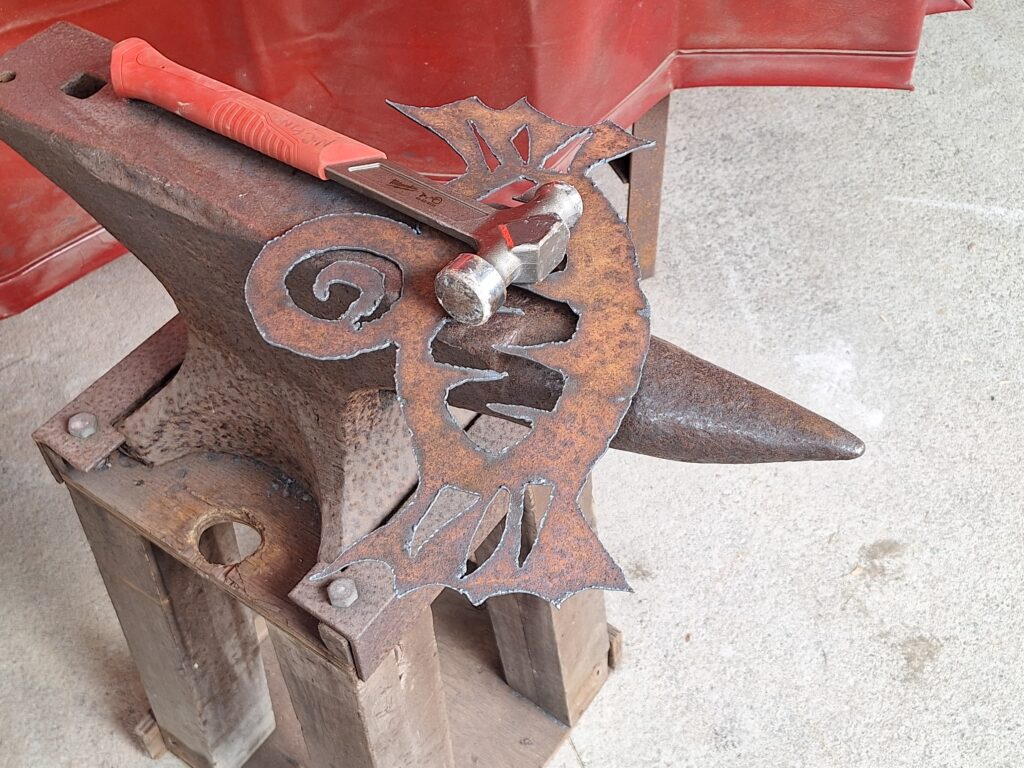
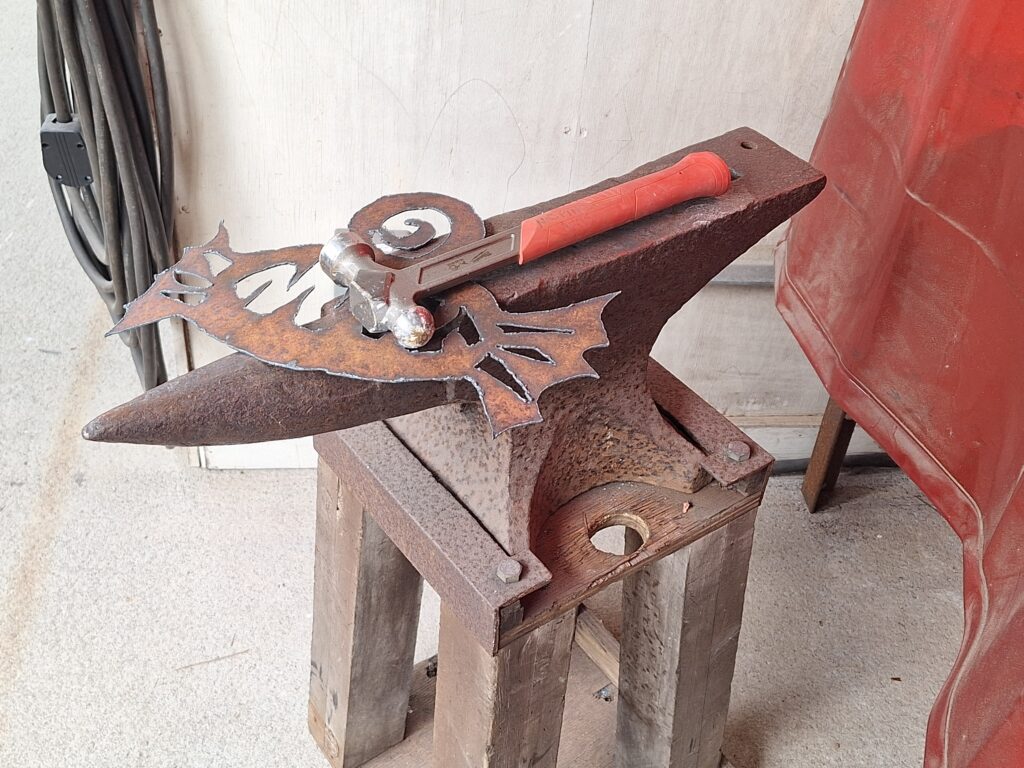
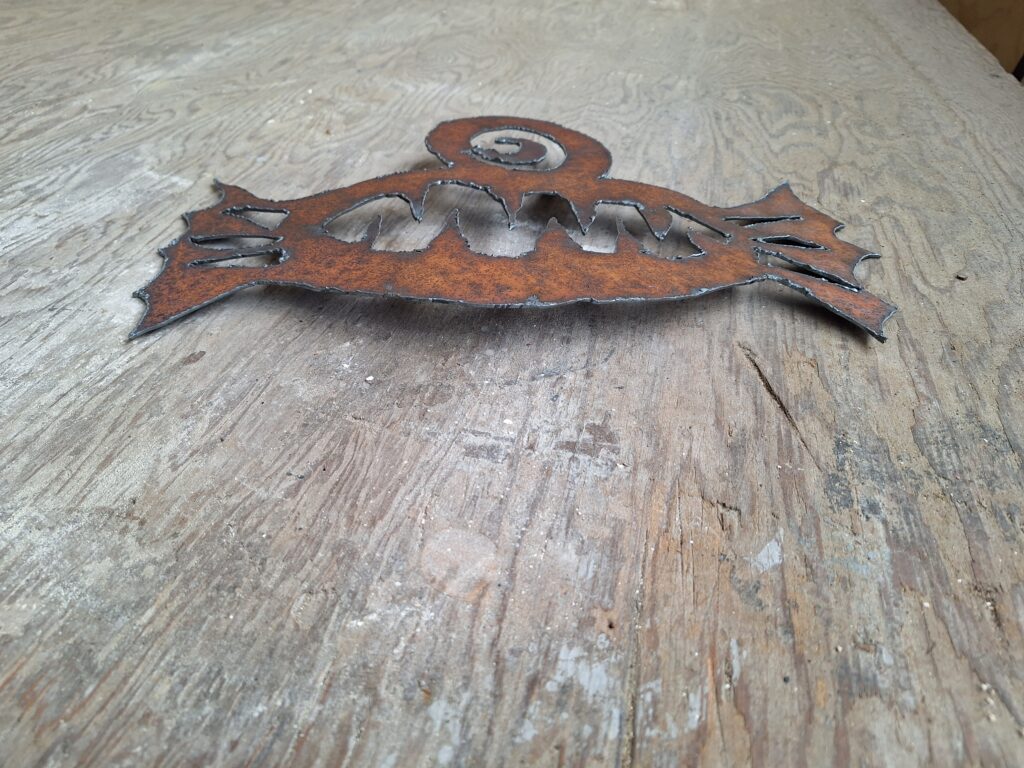
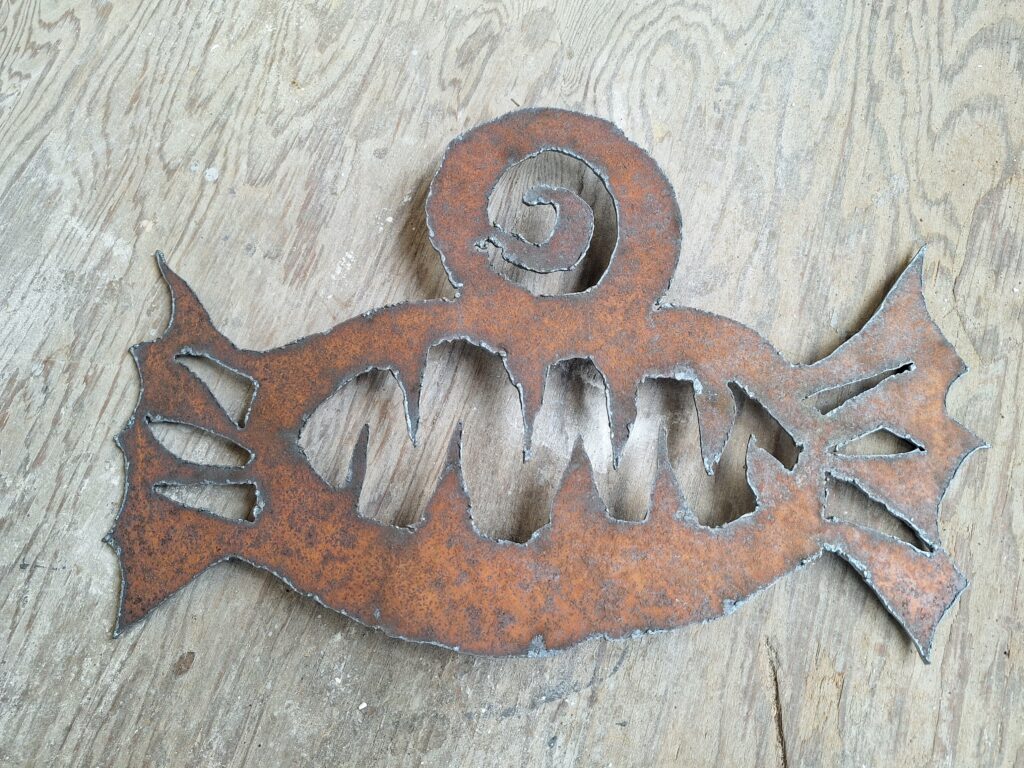
Once I had cut the fish out, I flipped it over to reveal the remaining rust and the slag from the cutting. I really liked both of these things so decided to make this the front of the sculpture. I curved it very slightly on the anvil, using the edge and gentle pressure. Then I drilled a hole in the middle at the top from which to hang it.
It wasn’t until I’d made my fish that I looked up angler fish on the internet to remind myself of their appearance and was surprised by how much my creation resembles them:
https://en.wikipedia.org/wiki/Anglerfish
Deep
.
In the deep
monsters lurk
spiny fins
pointy teeth
sunken eyes
scaly backs
all the things
we’re taught to fear
.
In the deep
monsters lurk
gaping mouths
slimy skin
slashing tails
grasping arms
devouring hope
haunting dreams
.
By Carys Owen
Reflections
I really enjoyed working in metal, especially in steel. It felt empowering to create something that has the potential to last a long time and that will weather along the way. With regards to the theme of making a monster, I found that process of designing and making this fish gave me a connection to deep sea creatures and only made me admire them more.
I have a deep love of nature and am very interested in how creatures can be characterized as dangerous, ferocious, deadly and so on. These are human value judgments and don’t relate to the animal’s need to survive and thrive. Most of the time creatures such as bears, lions, cougars etc. are going about their business (of hunting, eating, breeding, socializing) and conflict with humans occurs when we go into their habitat, take away their habitat, get too close to their babies and so on.
Within the animal kingdom animals are sometimes portrayed as being evil – like the great white shark- when they are simply occupying their place in the food chain. Closer observation of species most often reveals sensitivities and nuances in their behaviour that might surprise some humans- such as the grandmother orcas who live beyond menopause and lead their pods, often to the benefit of their sons.
Metal shop experience:
On a personal note, I’m of a generation where girls were not allowed to take woodwork and metalwork in high school and so making this fish was significant for me as it fulfilled a long held dream.
I am looking forward to seeing the shadows that it casts and to setting it up for exhibition.
Inspiration
Ray Lonsdale sculptures, North Shields, UK. Fiddlers Green (lone fisherman) and a Herring Girl.
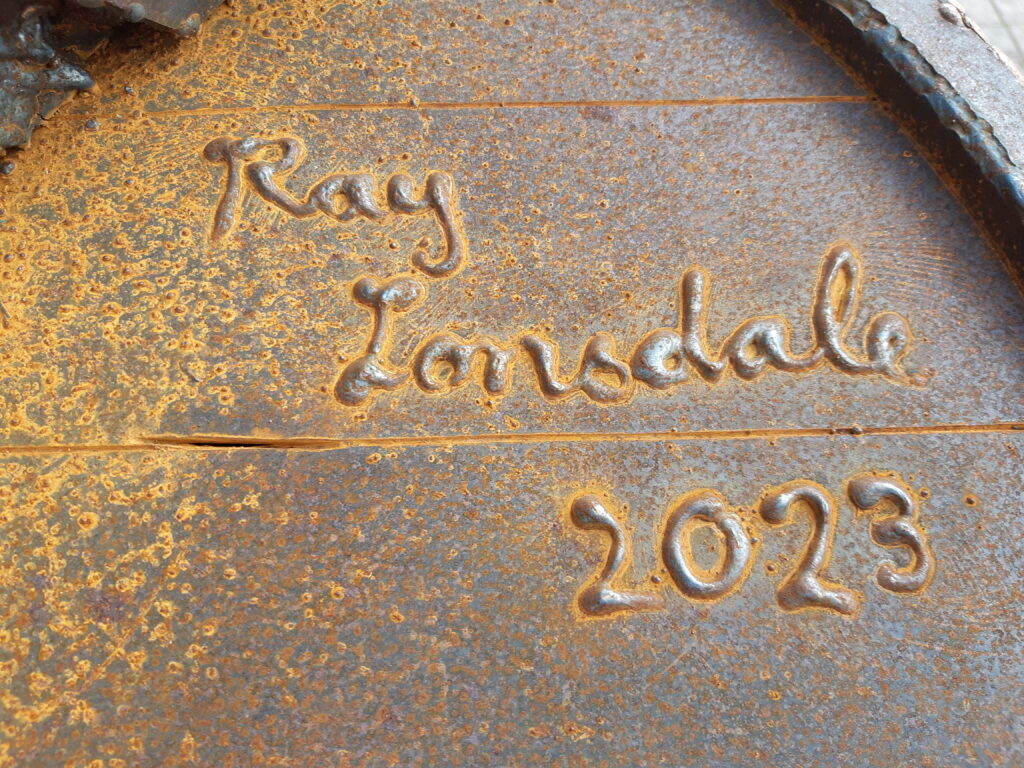

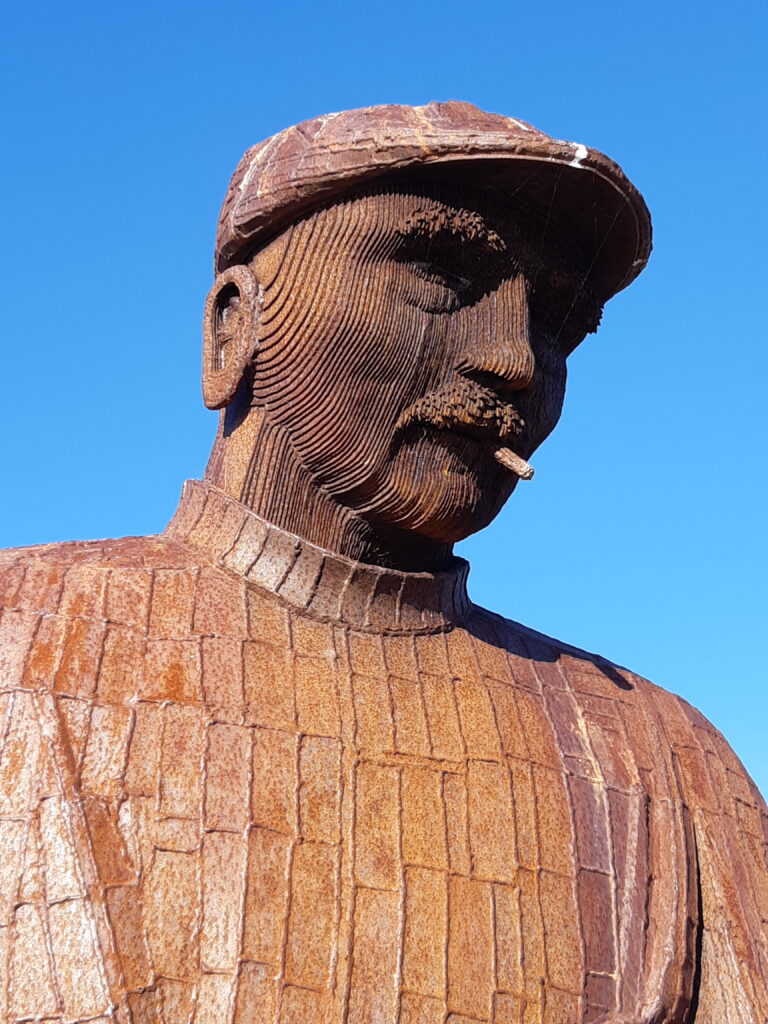
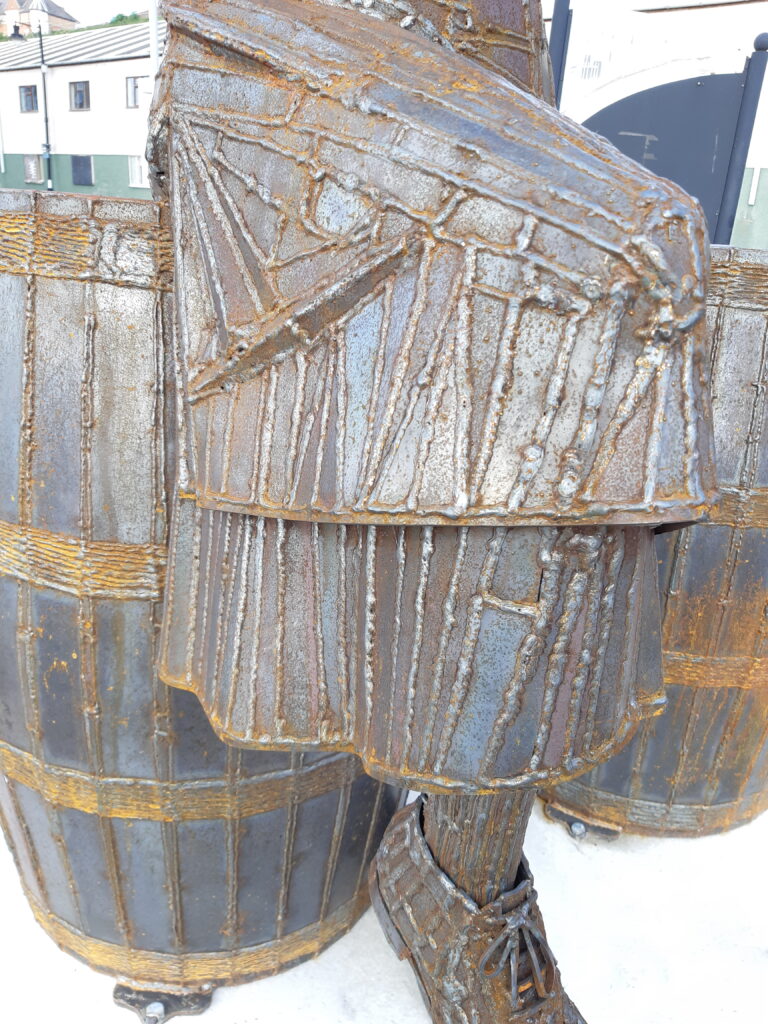
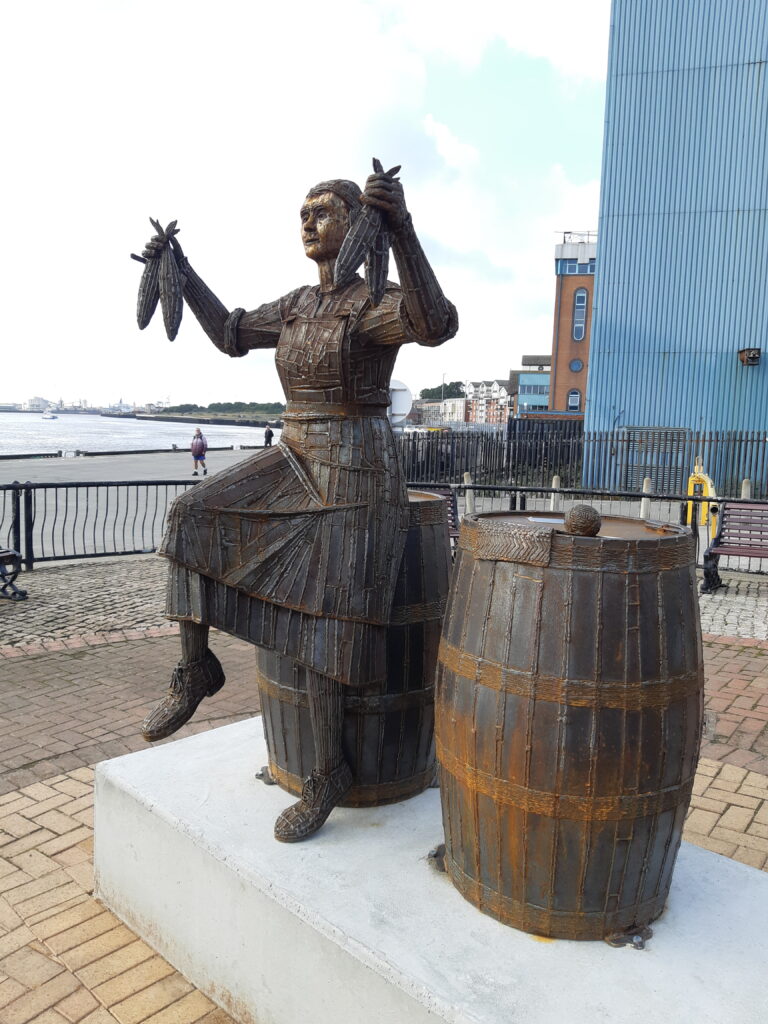
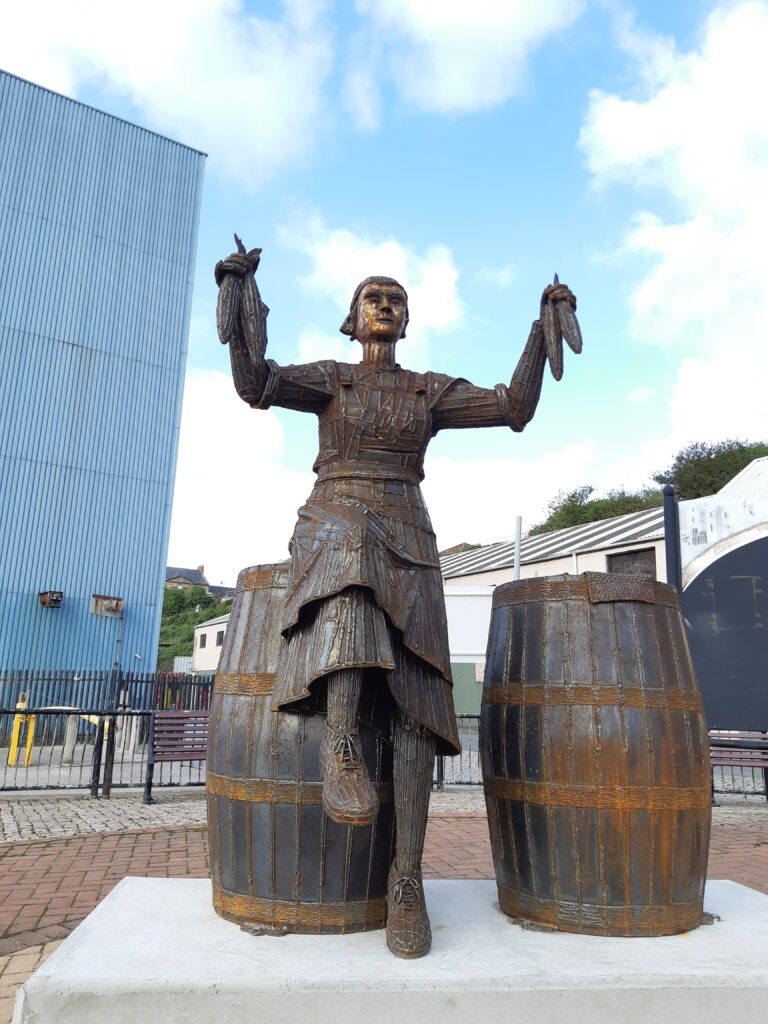
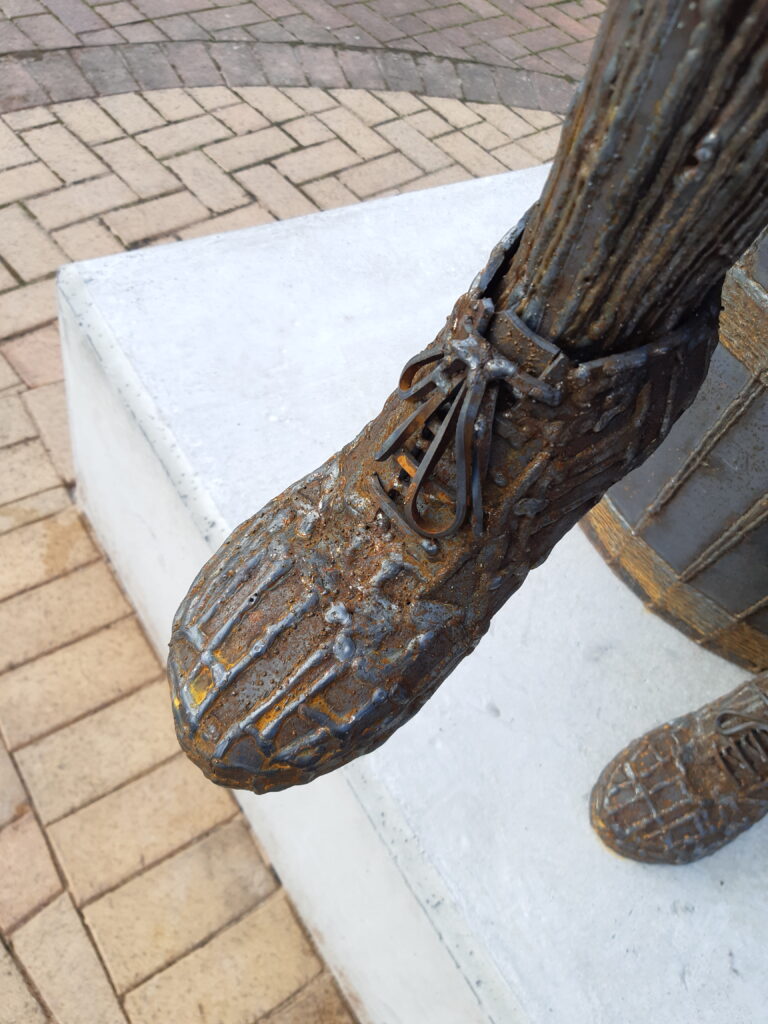
Critical Response
There was a wide array of techniques and themes in the metal projects. These included a monstrous invasive plant that was made from steel, which was laser cut and welded. The sharp edges were echoed on the unfriendly faces that reminded me of jack-o-lanterns. The leaves were exaggerated to suggest weapons. This is symbolic of the many invasive or introduced plants in our gardens. We can see these plants as enemies of native species- such as the brambles that choke out the salmon-berry bushes on local trails. But it is interesting that most of the invasive species are there because a human chose to bring them from another region- effectively colonizing the plants.
Another striking sculpture is the baby monkey that is pieced together from metal and fabrics that have a sentimental meaning to the maker. For example the fur is from her grandmother’s stole. This caged primate is representative of the cruelty that scientists have shown in the name of learning about animal behaviour. The face is haunting and shows the relation between monkey and human features. The particular experiments were about attachment to mothers and so the ‘monster’ is presented in a crib with toys around it in the final installation. It’s a very powerful comment on how we perceive other species. This monkey could be in a horror movie- it’s so spooky! In this regard,I believe the brief was fully achieved!
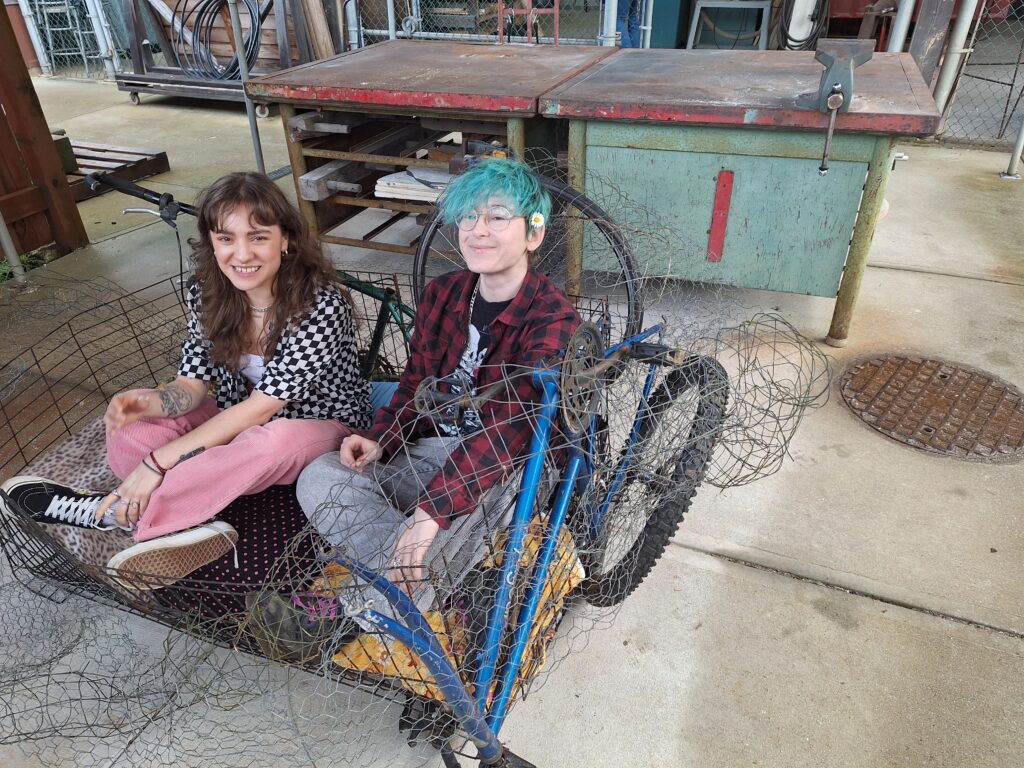
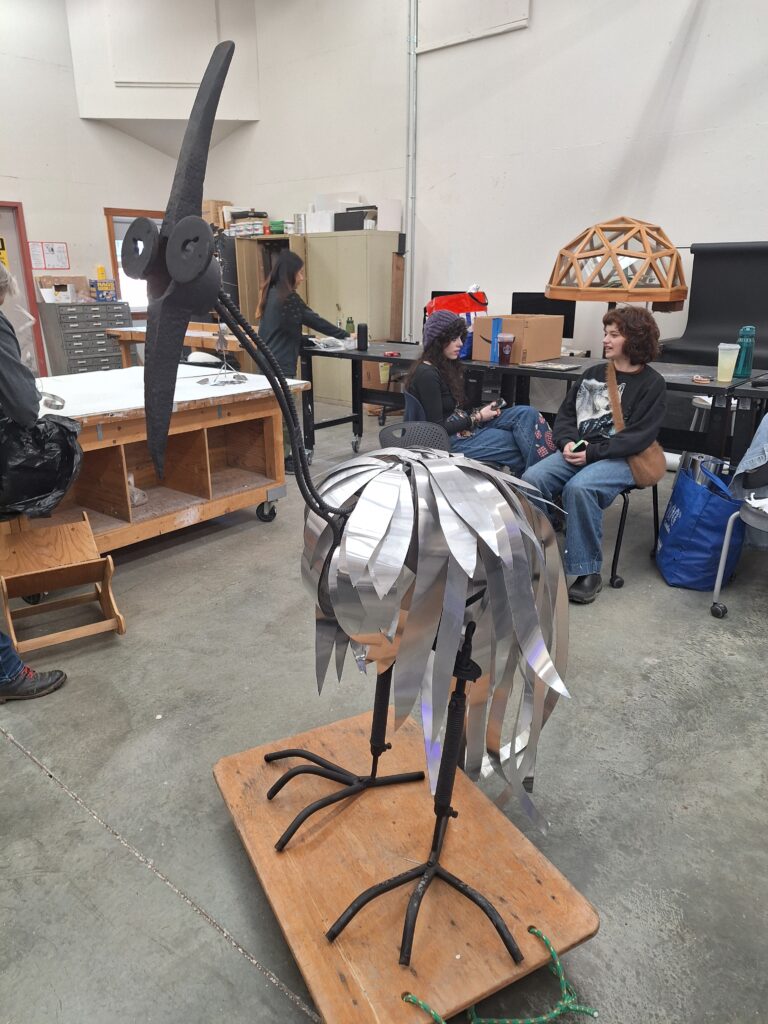
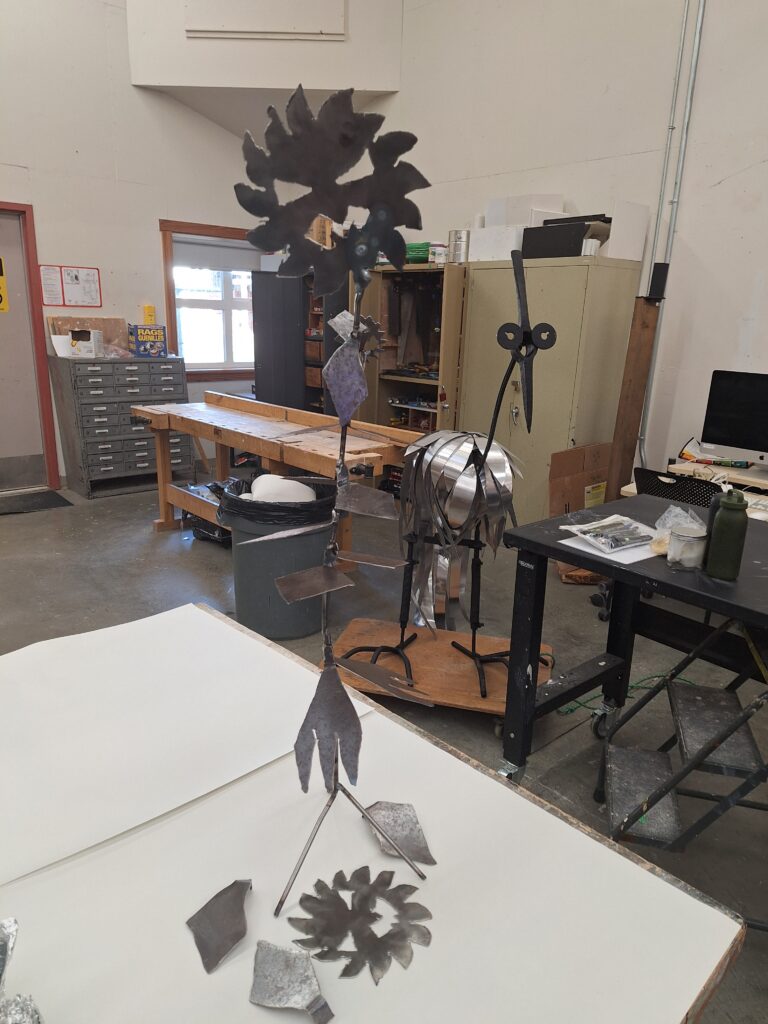
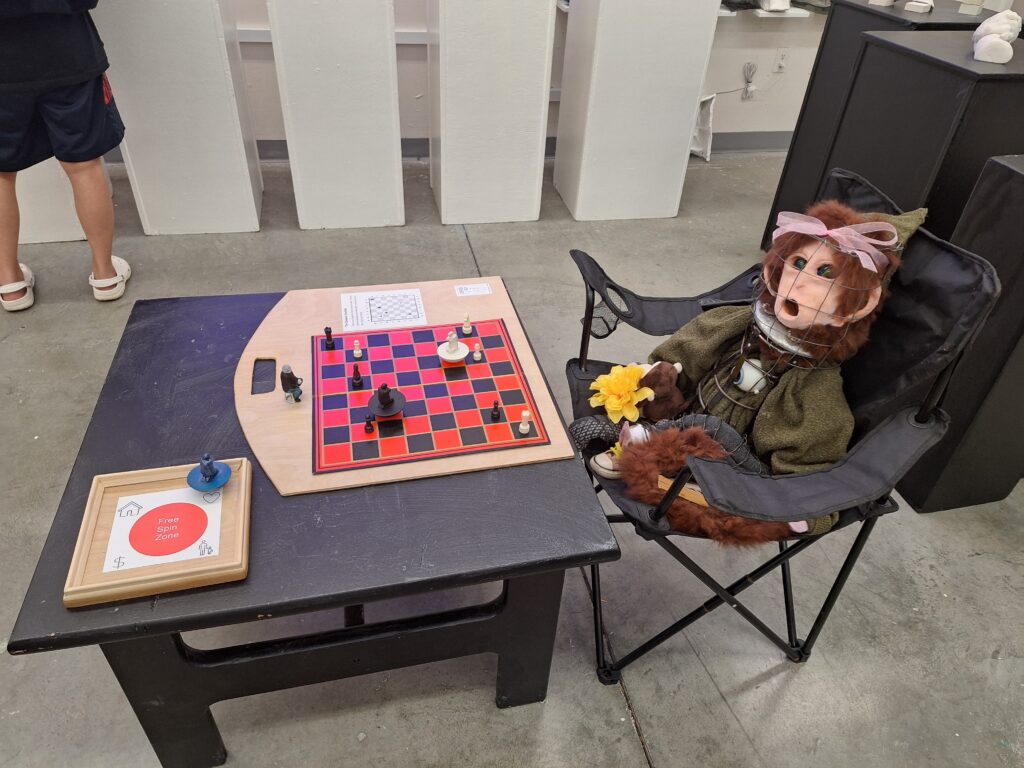
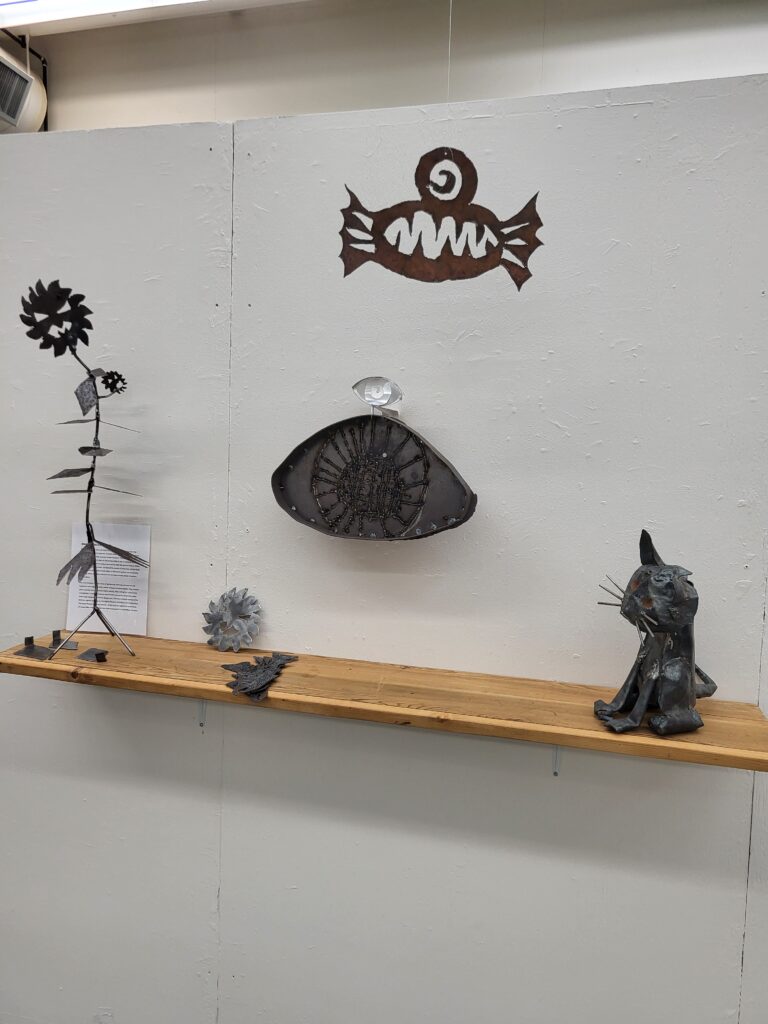
This is the final installation of my fish, along with some other sculptures. The plan is to direct some of the track lights on the plants and the fish to create a background of shadows. There is a clear relationship between the materials and shapes of the various sculptures- the teeth and spikes of the fish and plants mirror each other; the overall shape of the eye and the fish are similar and the fish eye in particular connects the two visually. The rays of the eye are reflected in the whiskers of the cat, which also appears to be recoiling from the other pieces. It is intriguing how a considered arrangement of the monsters can enhance each model and create something pleasing that is greater than the parts.
FIN 131 Unit 1
Research Artists Working With Casting and Multiples
Yuki Nakamura- Drifting Bottles
http://yukinakamura.com/drifting-bottles/
I was really moved by Yuki Nakamura’s installation- Drifting Bottles- as it had multiple layers of meaning. On the surface it is a beautiful collection of elegant bottles and looking beyond we are asked to imagine the bottles drifting in the Pacific Ocean. The art work invites us to picture the waves coming in and out with the bottles floating with the tides. I felt a close connection as a person who lives on the other side of the Pacific from Japan and who witnessed degris washing up on the west coast of Vancouver Island after the 2011 Earthquake and Tsunami in Japan. Yuki Nukumura speaks of the great loss of life and the tragedy of the event. The multiple bottles might also suggest some of the many lives lost in that time- lives at the mercy of the ocean. It amazes me how an installation of multiples can have such far reaching impact.
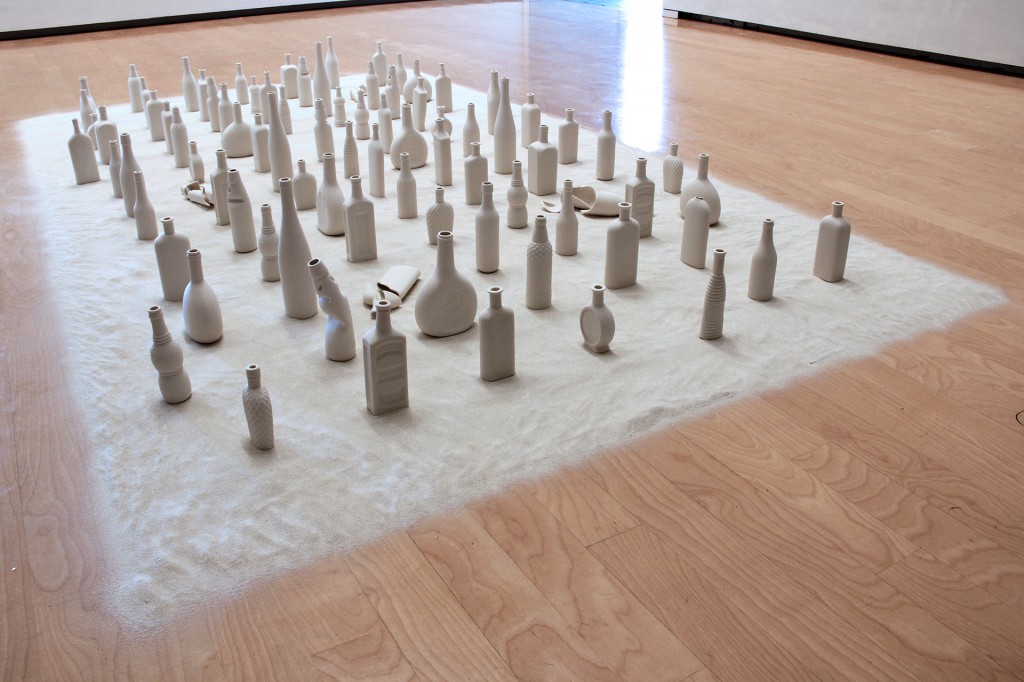
Wolfgang Stiller
Wolfgang Stiller describes how he had multiple head moulds in his studio following a film project. He also had multiple bamboo sticks. When he combined the two he realised they resembled matchsticks. It’s beautiful to hear of someone’s creative process and how they arrive at a creation. The matchsticks are burnt and displayed at different angles- some in match boxes. When I see the images, I think of the demands of our current society that lead so easily to burnout and how this affects most people. Rather than address the disfuntion of society, recgarding the demands on individuals, the individual is targeted with advice and/ or criticism of how to cope, how to be more efficient, how to provide ‘self care’. This speaks strongly to me as someone who was diagnosed with mental health challenges late in life- I previously spent so much time and energy trying to adapt to an unhealthy situation and feeling like I was failing. It’s a relief to now know that it wasn’t/ isn’t a failing in me and that I am now able to receive some appropriate support. It’s a long road to rebuilding self esteem after having been told I’m/we’re at fault.
Wolfgang is clear in his message that we can read his installation in whatever way it strikes us (match pun, get it ?). So it could be a playground of matches or a cemetary of matches or something else. I love this free and open approach to art and respect that Wolfgang may have had his own odeas and interpretation but is most interested in everyone experiencing it in their own way. It’s very fitting as burnout often comes from people being forced or coerced into doing something a certain way regardless of their strengths and personality.
Again, I was impressed with how an installation of multiples could be so powerful. Like the bottles, they look similar but are not identical, which enriches and elevates the experience.
FIN 130 Unit 3
Research Assignment
Research reflections:
I have started to think about what I will scan for this project. After watching Neri Oxman’s Ted Talk and having some conversations about it, I have decided to use a scan of myself in a meditation pose for my final project. It reflects my state of mind these days- being in a thoughtful space- and brings the organic together with computer technology and back to organic materials again via handmade and digital processes. In this way I will be exploring the relationship between nature and technology at this point of intersection.
For my research I am taking you to Yorkshire, UK where I love to visit The Yorkshire Sculpture Park near Wakefield, Yorkshire whenever I am visiting my family nearby. The exhibits are both indoors and outdoors, some are visiting and others are part of a permanent collection. So it’s always a treat to go and see what’s new and also visit old favourites.
Artists- 1 Erwin Wurm
These photos are from a visit to The Yorkshire Sculpture Park in October 2023. Edwin Wurm was featured in the gallery and adjoining outdoor space. I was especially impressed by the reshaping of the Mercedes truck to occupy space in a different way. Offering curves to the structure creates a softening and an excitement to the metal structure. It really engages the imagination- wondering what might happen if the truck drives away- perhaps picturing a loop-the-loop track. I love the playfulness of his sculptures and the way they invite interaction.
In his quotation Wurm says: ‘Art is quite simply part of everyday life for me. Art is also my everyday life. That means when you let something become everyday, it loses its special quality and it’s not a luxury or something extraordinary anymore. But that doesn’t mean artwork itself no longer has anything special or extraordinary about it, only the way we deal with it. That means that it becomes something I spend time on every day, and that is perfectly possible.’
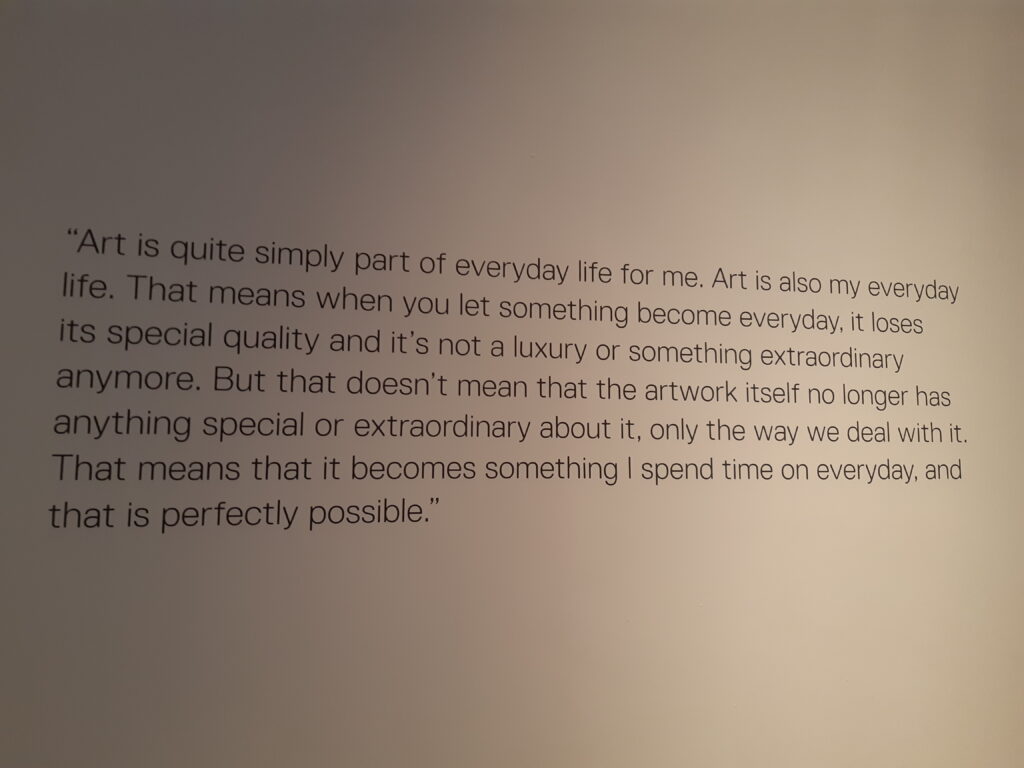
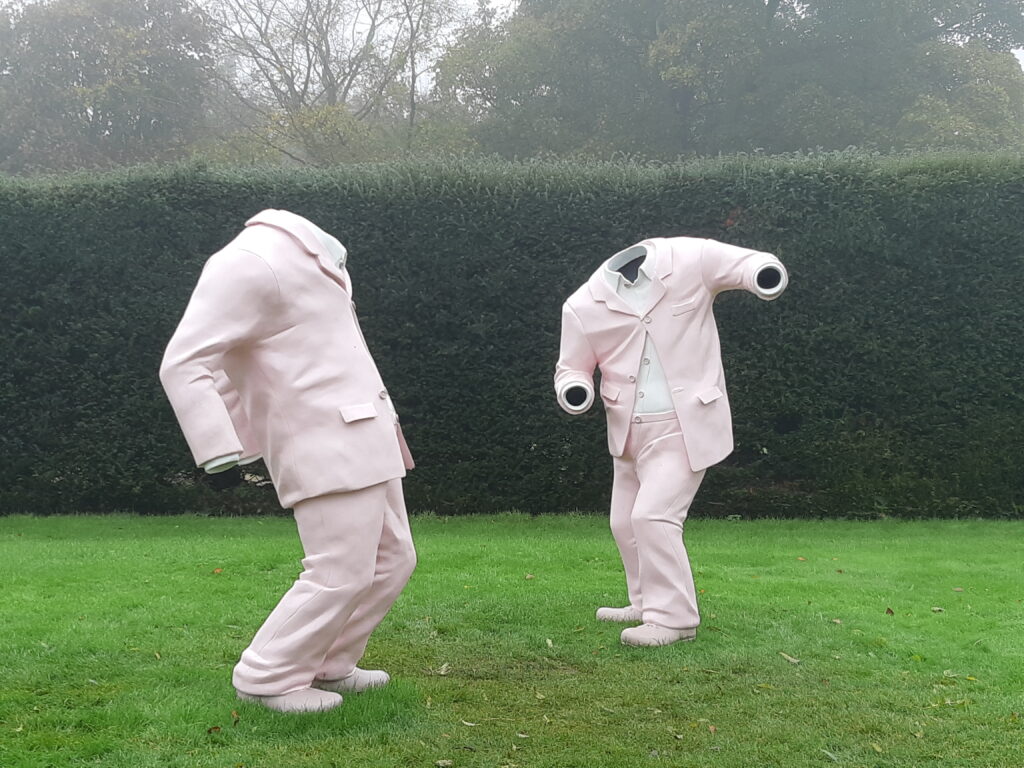
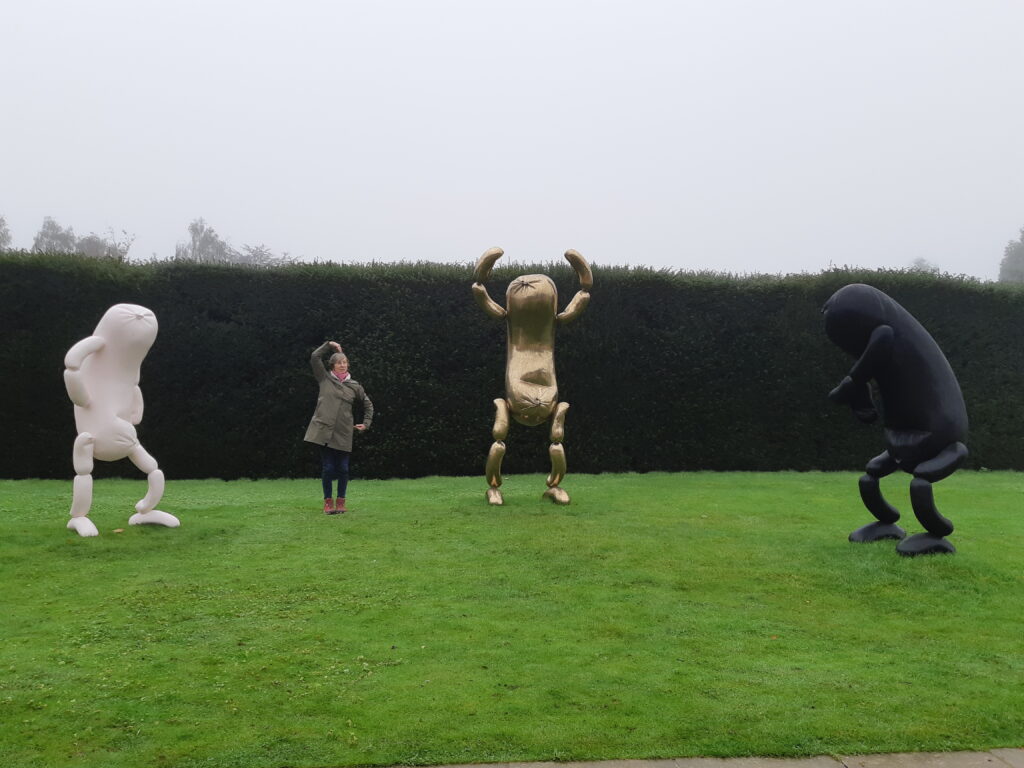
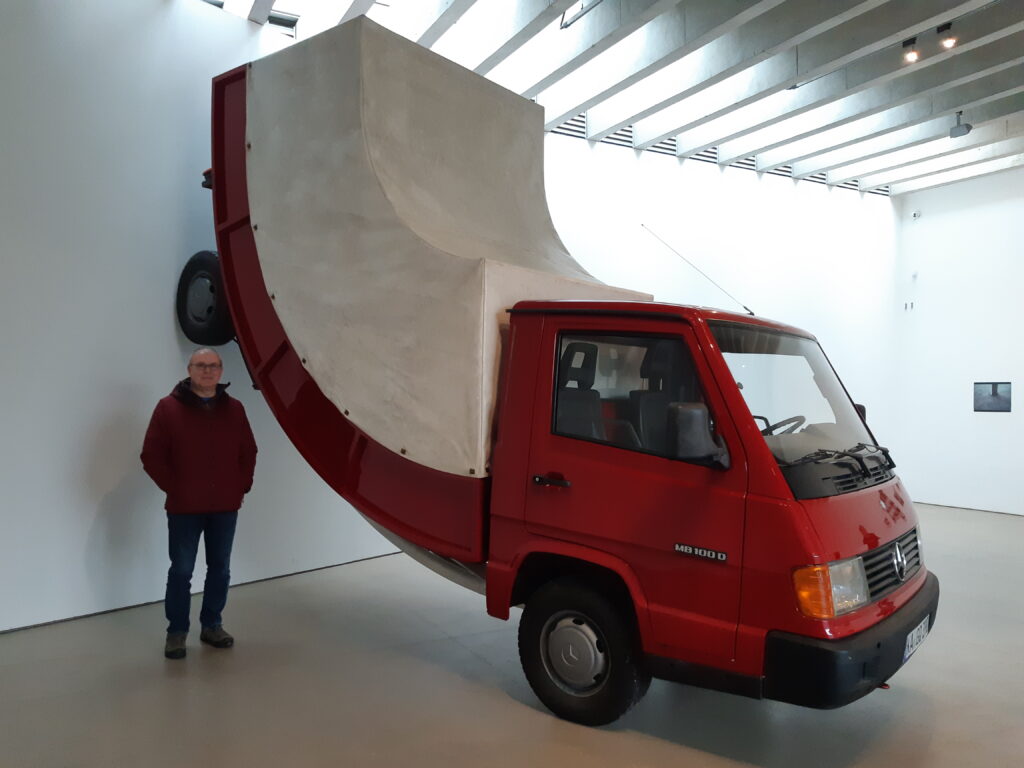
https://ysp.org.uk/whats-on/exhibitions/past-exhibitions/erwin-wurm
2. Peter Randall-Page ‘Mind Walk’
This continuous line engraving/sculpture explores the way that a line can traverse a 3-D object. Something that speaks to me is that I am reminded of the structure of a brain, although I can see it’s not a realistic interpretation but more of a suggestive one. The rock is enormous- probably 1.5 metres by 1m and the weight of it is evident without even trying to move is. I loved this sculpture as I was able to touch it…my hands becoming part of the natural erosion process. Being outside, exposed to the elements, nature will continue to shape this beautiful form for thousands or millions of years to come. That is quite amazing and plays with concepts of time and the human place on the timeline of history. This is a testament to the ability and power of art to bring us into reflective and philosophical spaces.
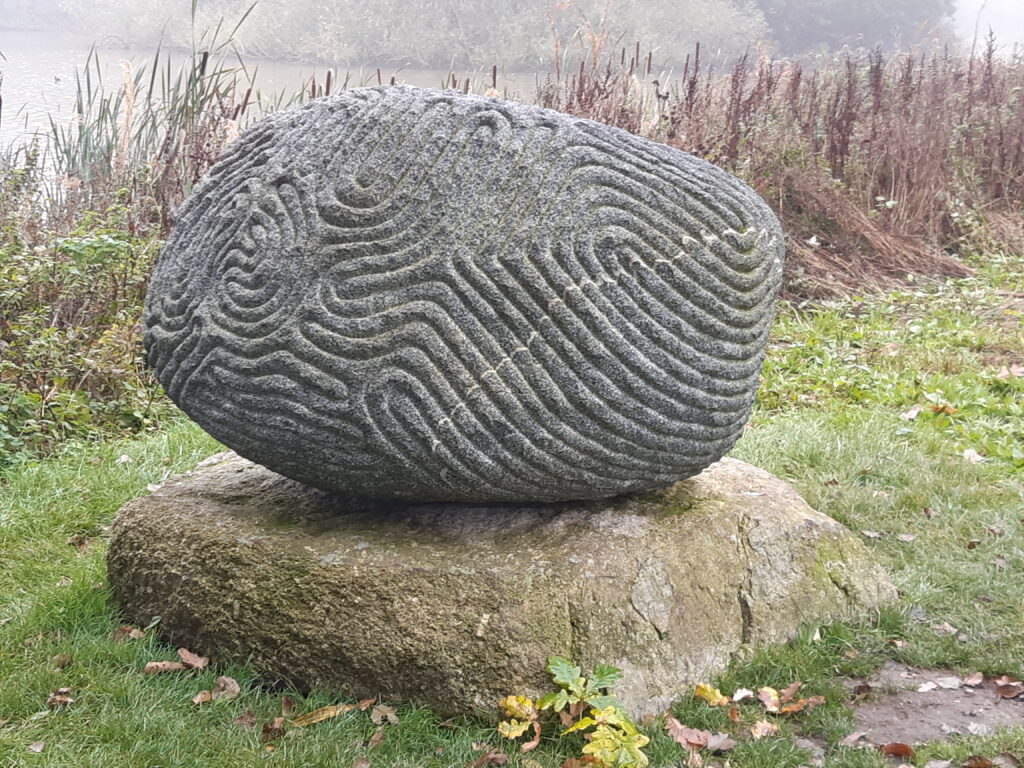
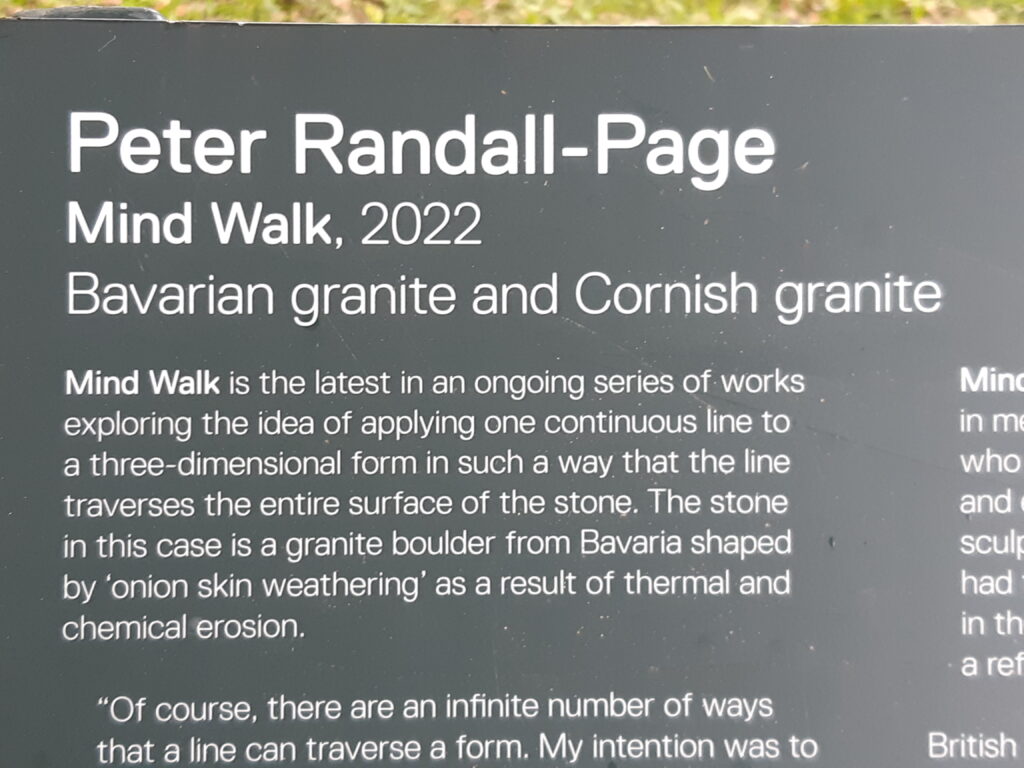
https://ysp.org.uk/art-outdoors/peter-randall-page-mind-walk
3. Damian Hurst- it was an eerie experience walking towards these giant sculptures on a misty day, not realising quite how tall they are and finding them just getting bigger and bigger as I walked across the open field towards them. Suddenly I realised that the specks were people standing at the base. Right away I can say that one significant aspect here is the effect that scaling a familiar form up or down can have on the onlooker. In this case it was scaling up and the result was jaw-dropping and thought provoking. Within this experience was also the stark contrast of the mother’s skull being revealed next to the baby within her uterus- like a scientific dissection and also a story of life and death existing within each of us.
Hirst cast this 10m high sculpture- The Virgin Mother- in bronze and then painted it to look like plastic. The finish is reminiscent of those models of body parts we see at the doctor or physio’s office. It was interesting to walk around and see only the left side (fully covered) followed by the right side (peeled back)- almost like the childhood experiment of looking at something with one eye while covering the other and then switching to the other eye.
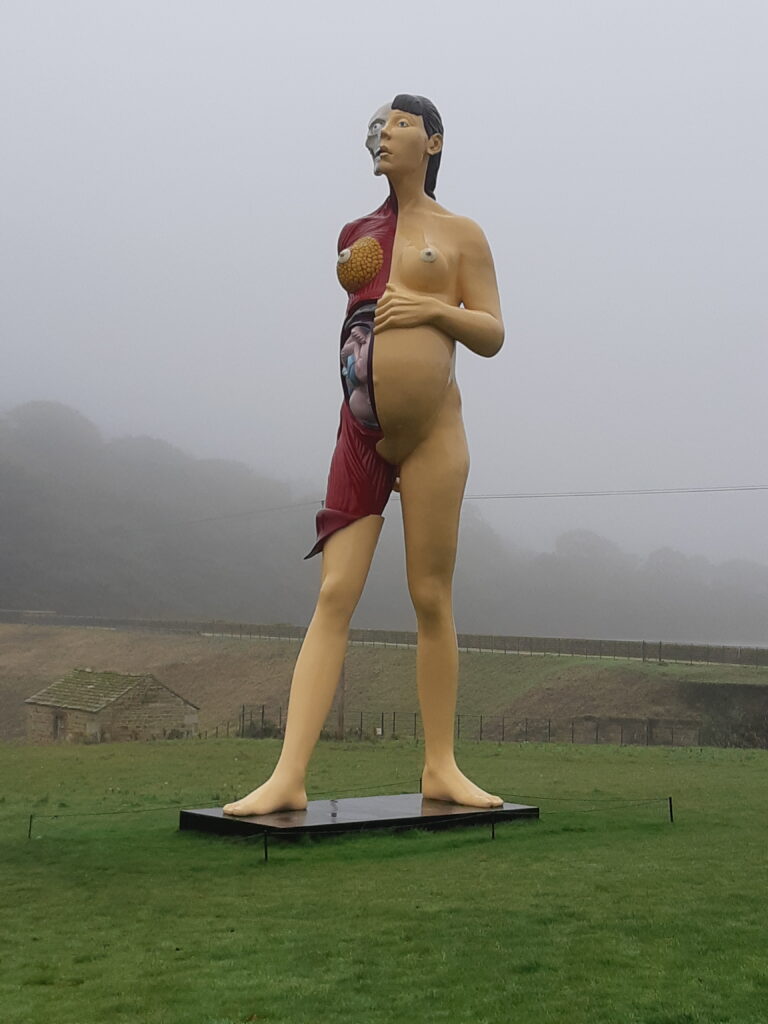
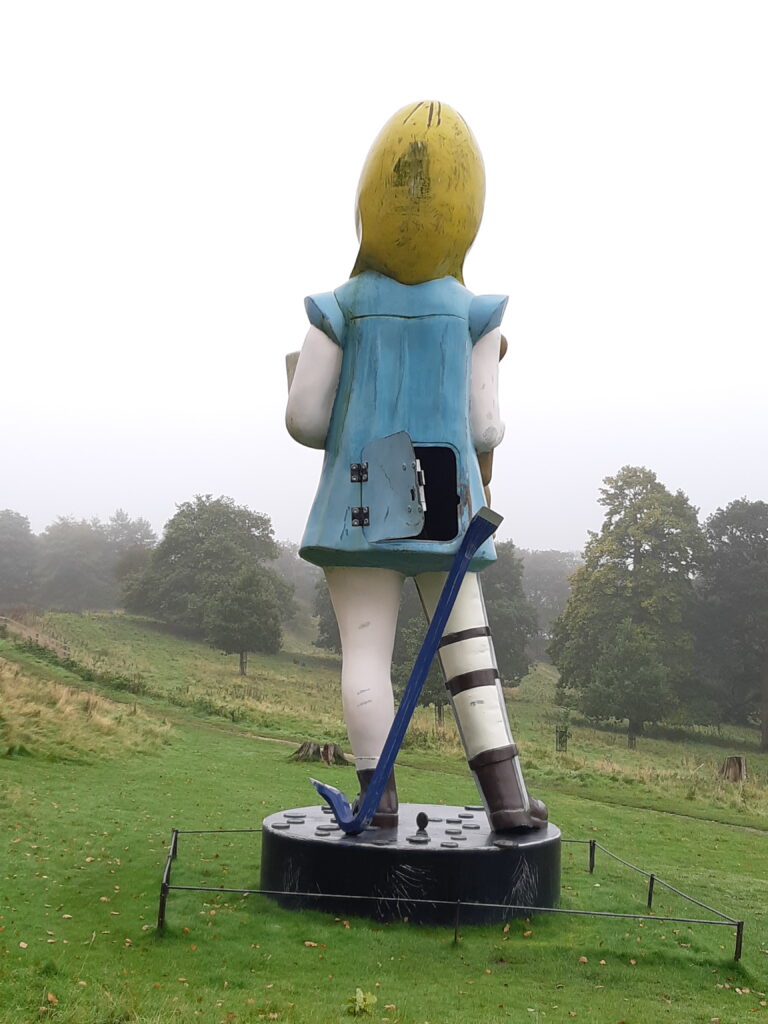
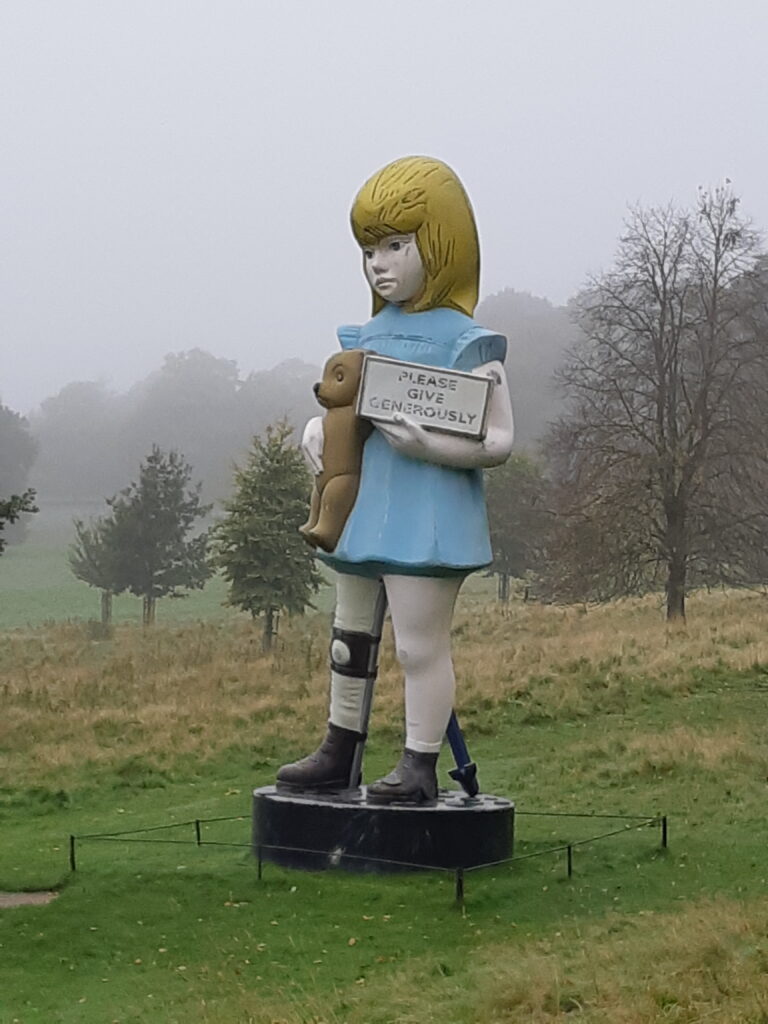
Charity, Damian Hirst, Bronze, 7m tall
This sculpture had a nostalgic connection for me as it is based on collection boxes that were very common on British high streets in my youth. Though it isn’t a warm and fuzzy nostalgia as I see now how disrespectful this depiction is to people who are differently able. In the write up it is said that Hirst was questioning not only the outdated ways of depicting disability but also how we seek charity. It makes me think of my relationship with charity and how I see the opportunities I have to offer money or help as a natural part of sharing resources and not something to be announced or forced. Again this sculpture is in bronze and painted to look like the roughly painted collection boxes of their day (possibly cast iron).
https://ysp.org.uk/art-outdoors/damien-hirst-the-virgin-mother
https://ysp.org.uk/art-outdoors/damien-hirst-charity
Having revisited these 3D works of art, I am inspired to consider the use of materials- whether to change the appearance, for example. It has also set me thinking about scale and how going smaller or bigger can have an impact on the viewer. Finally, all of these artists remind me of the importance of our relationship with place and interplay of art with science, technology and nature/ the organic world.
FIN 130 Unit 2
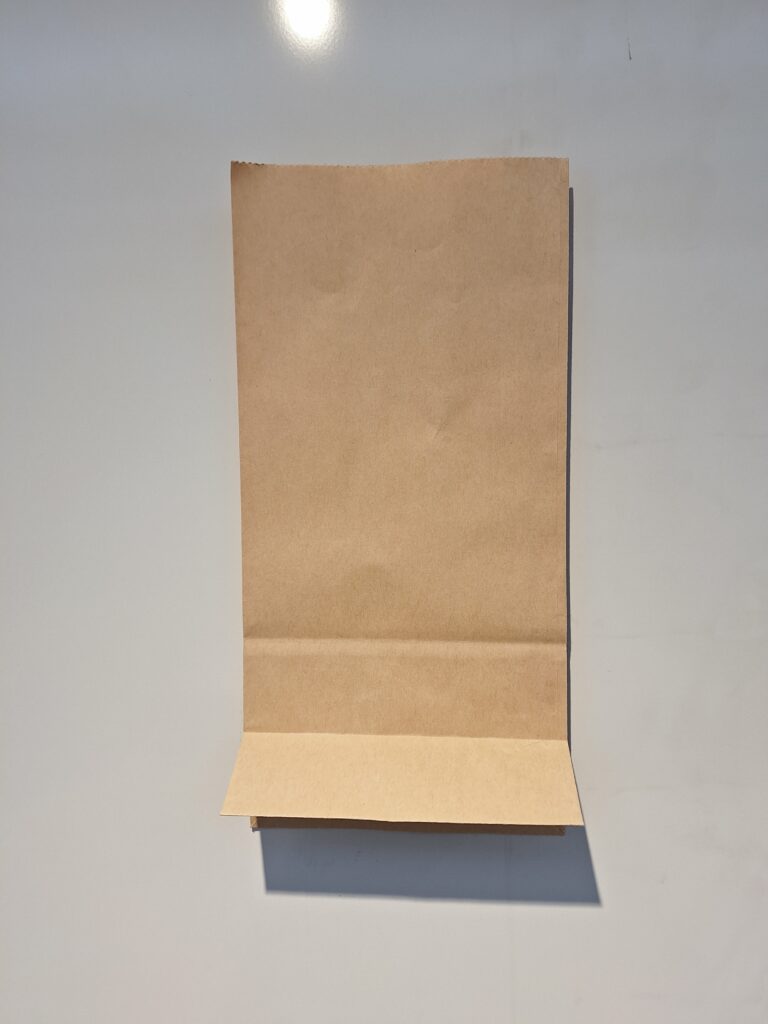
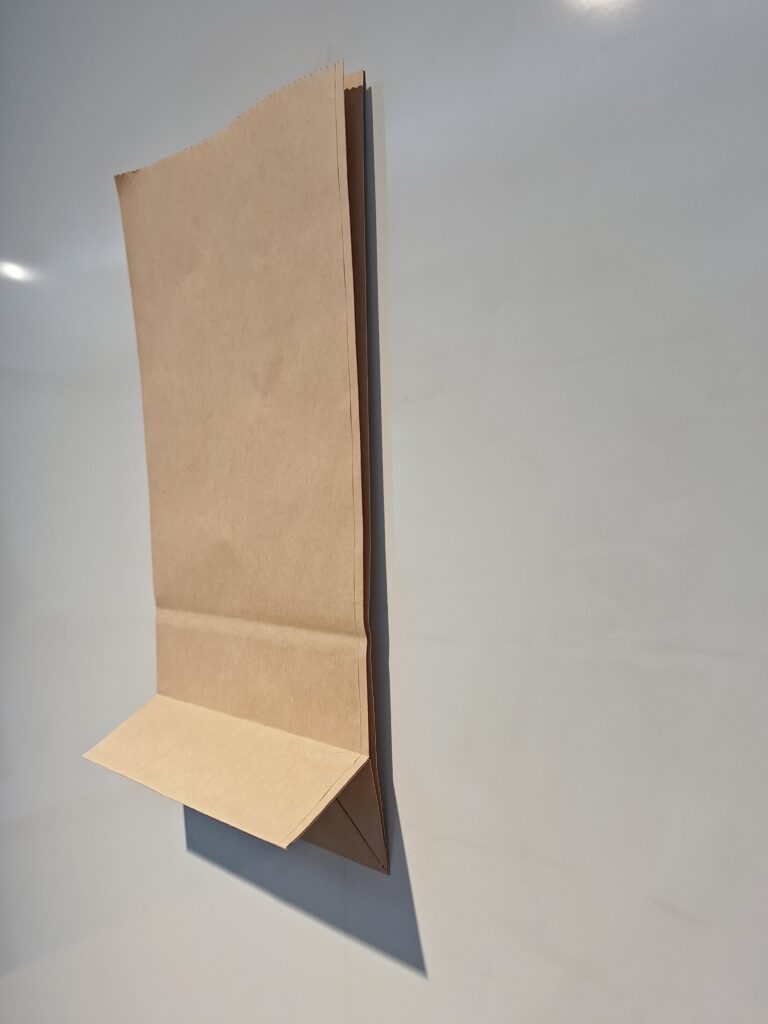
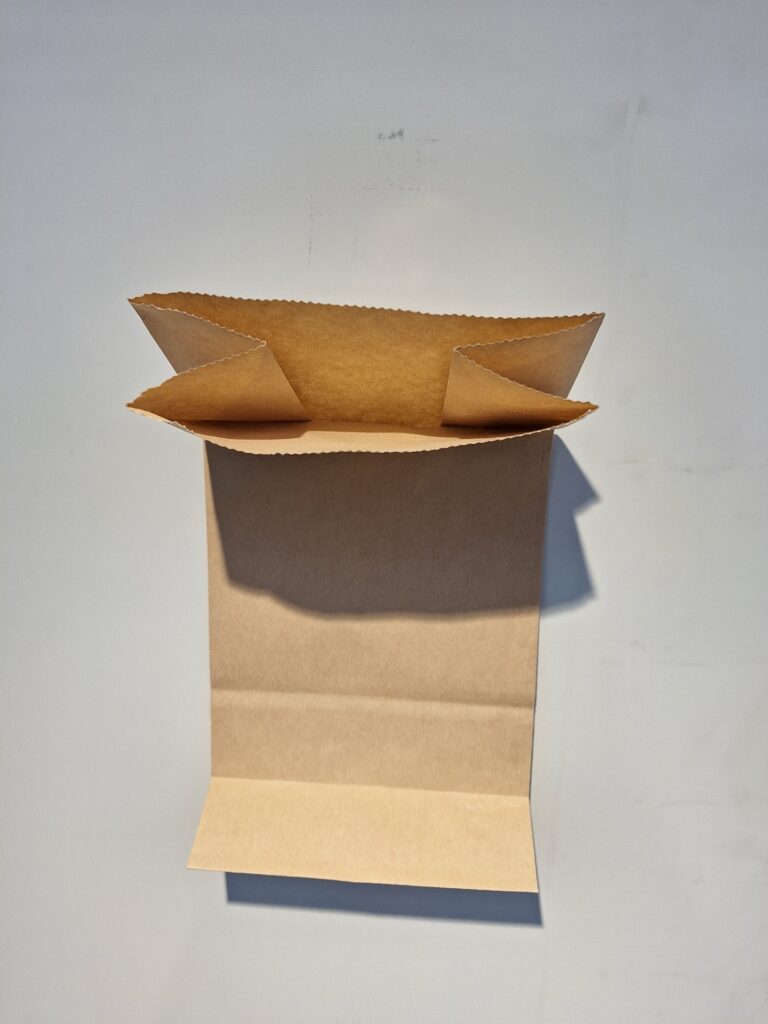
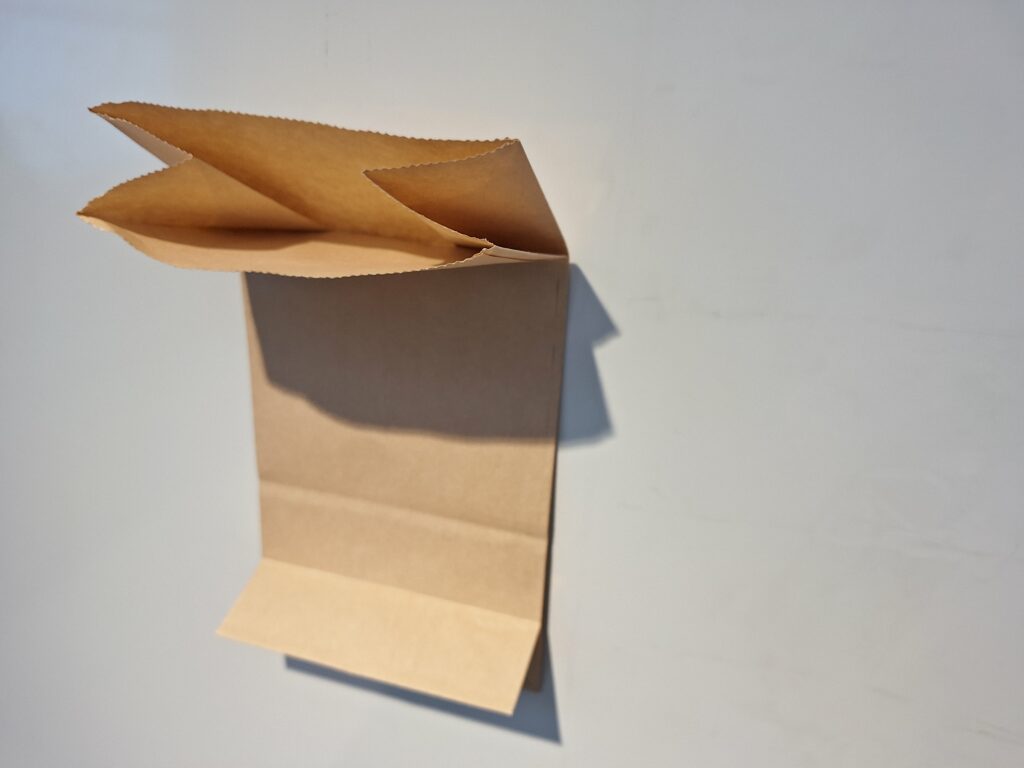
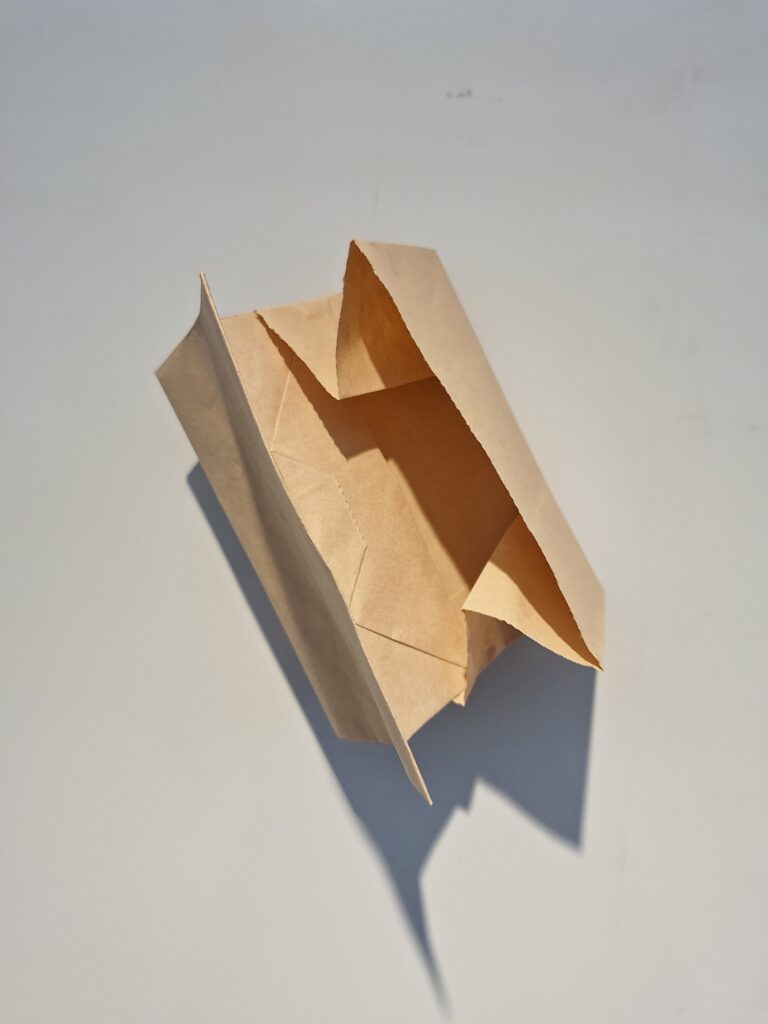
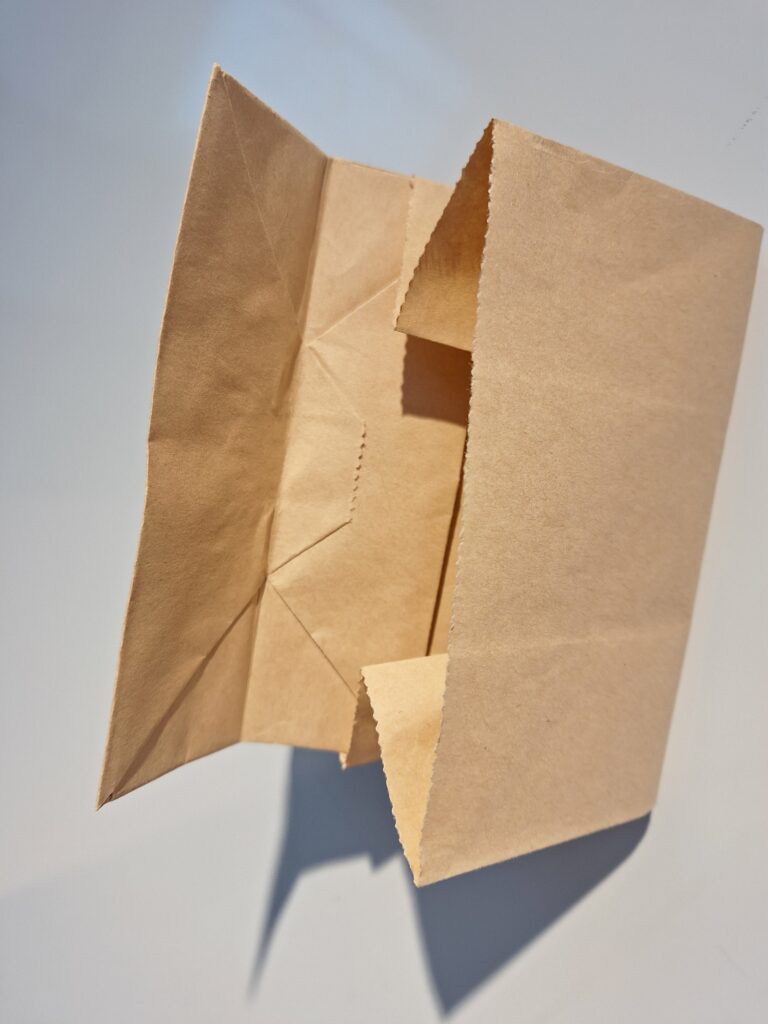
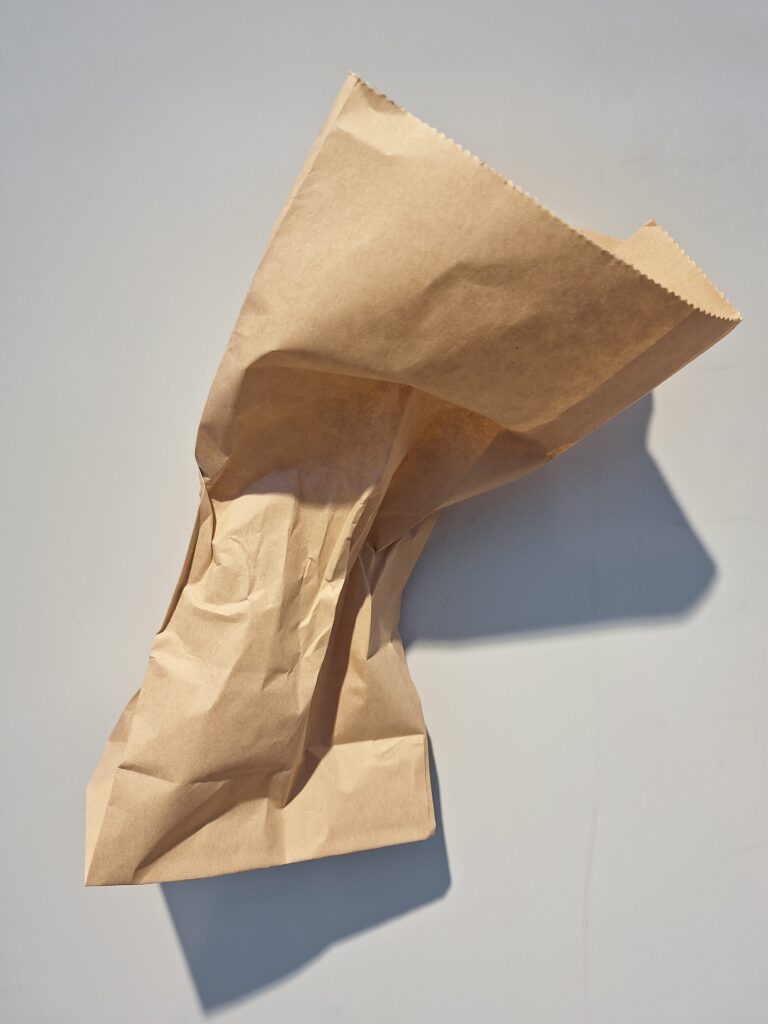
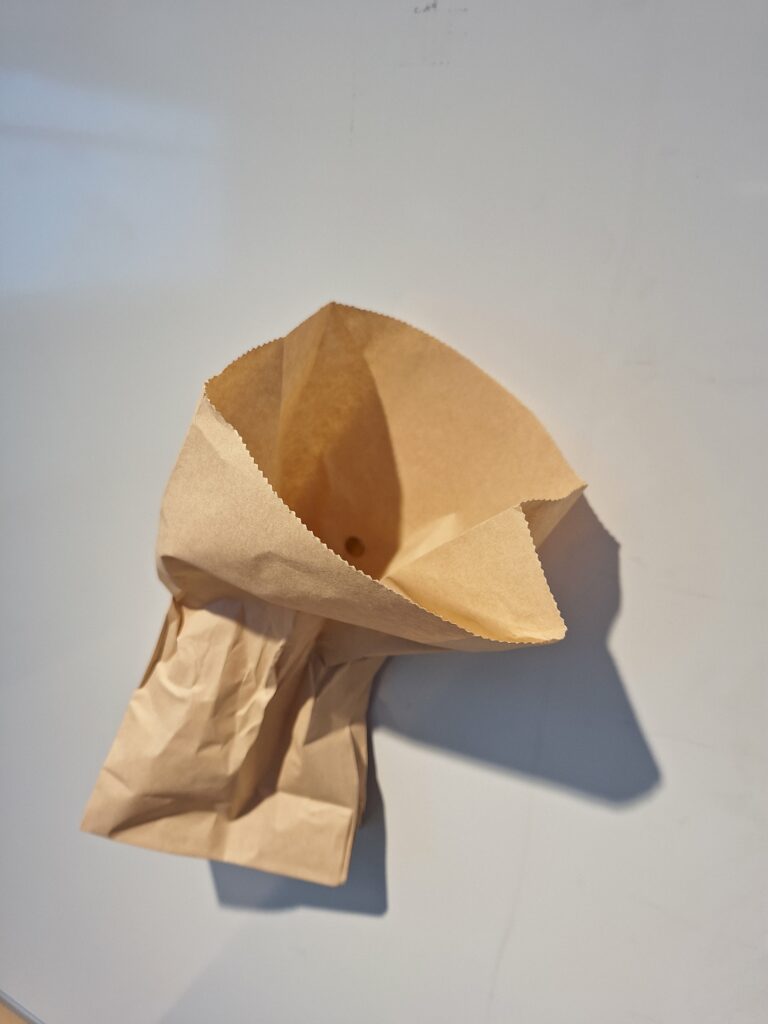
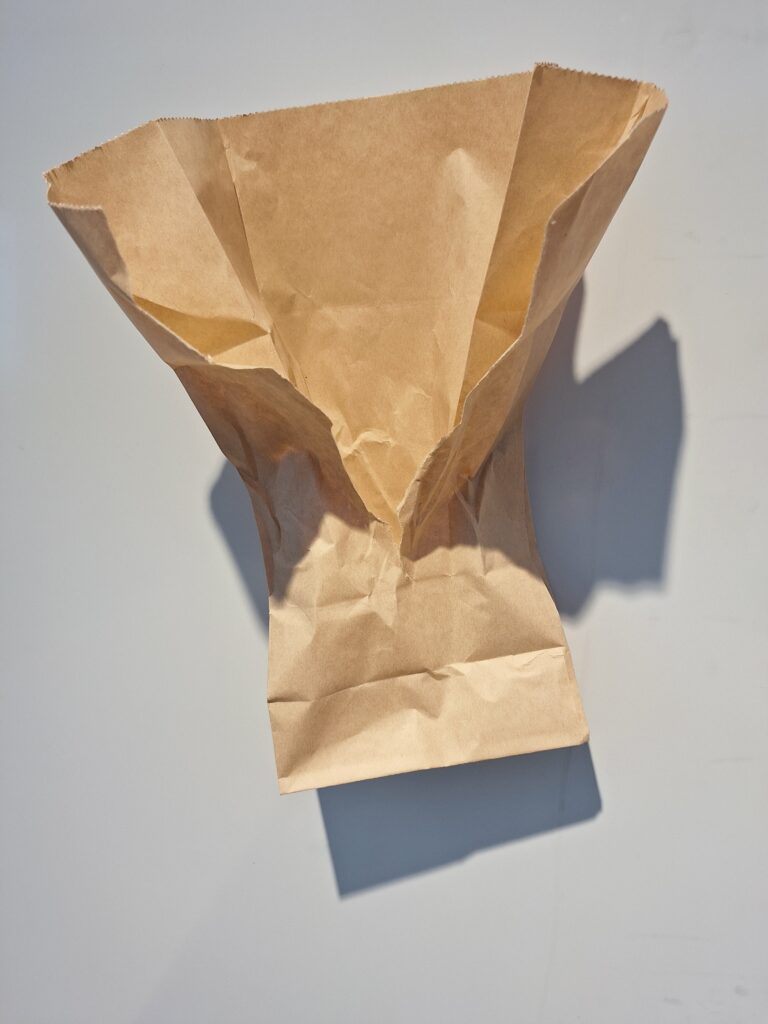
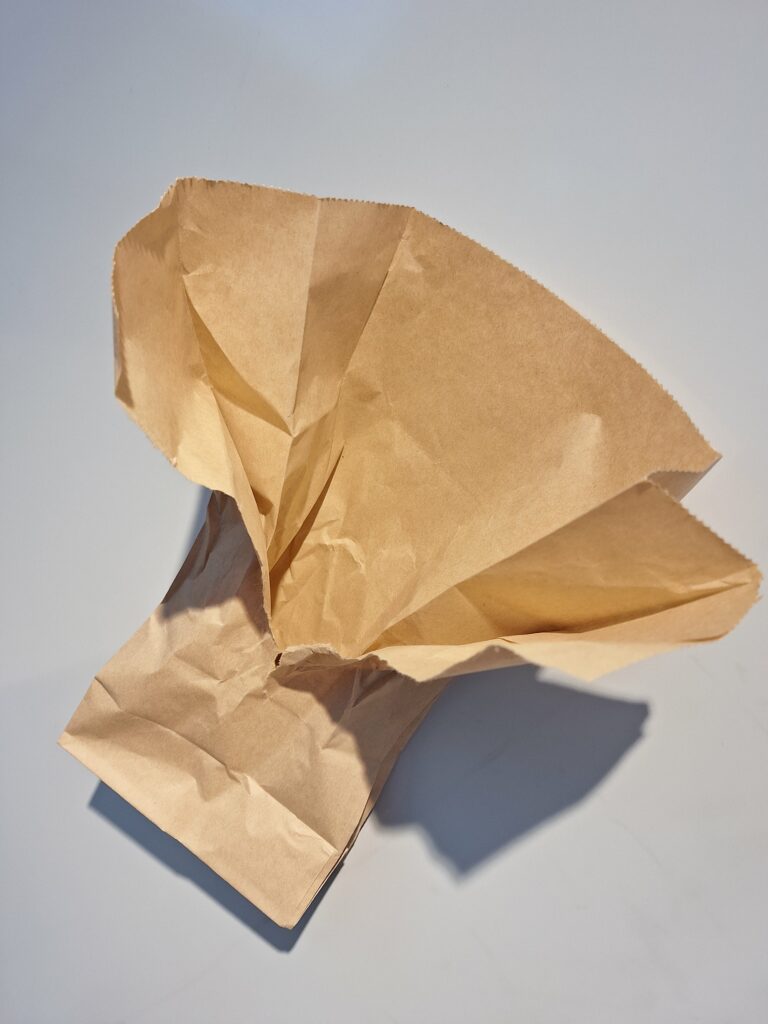
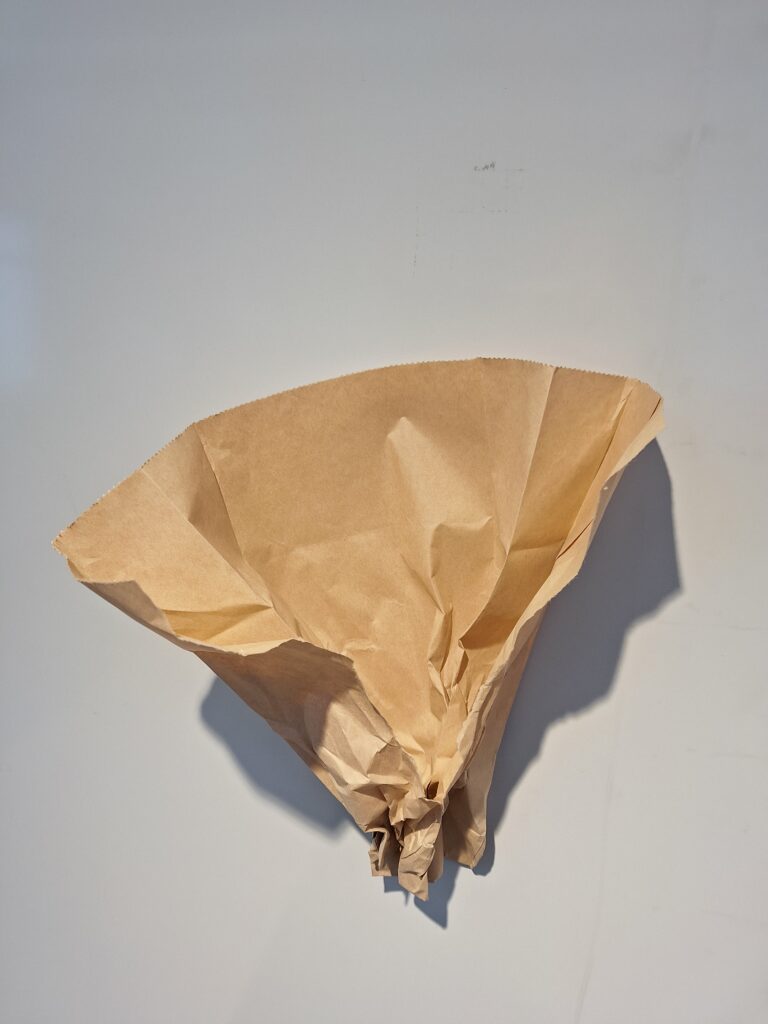
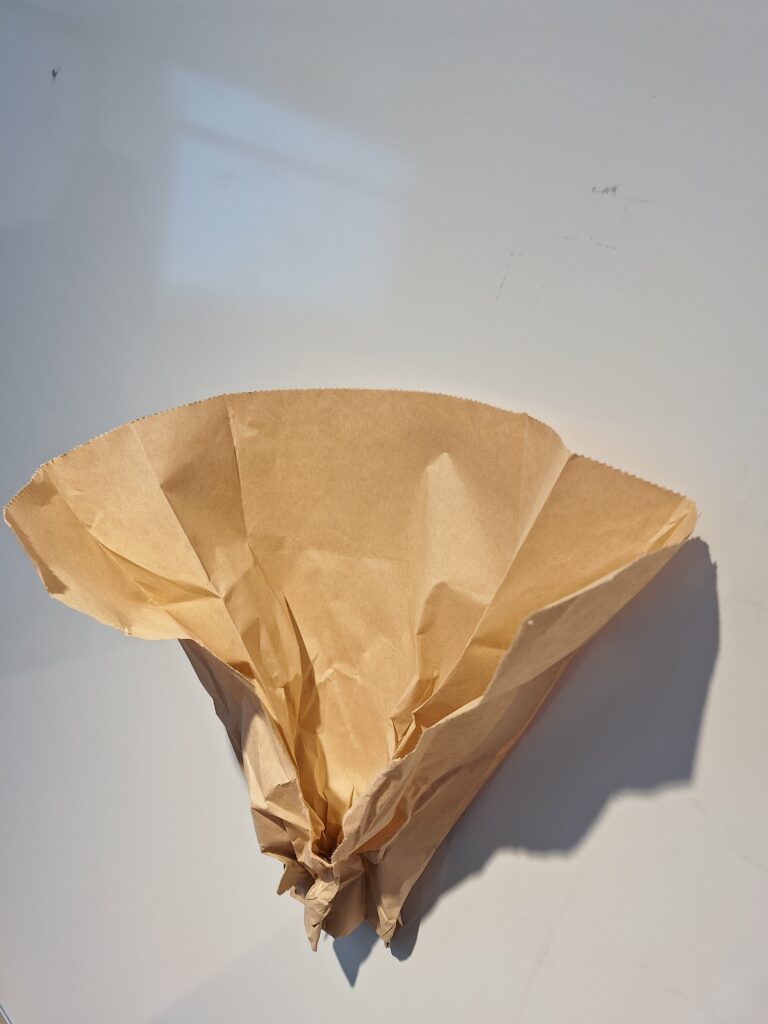
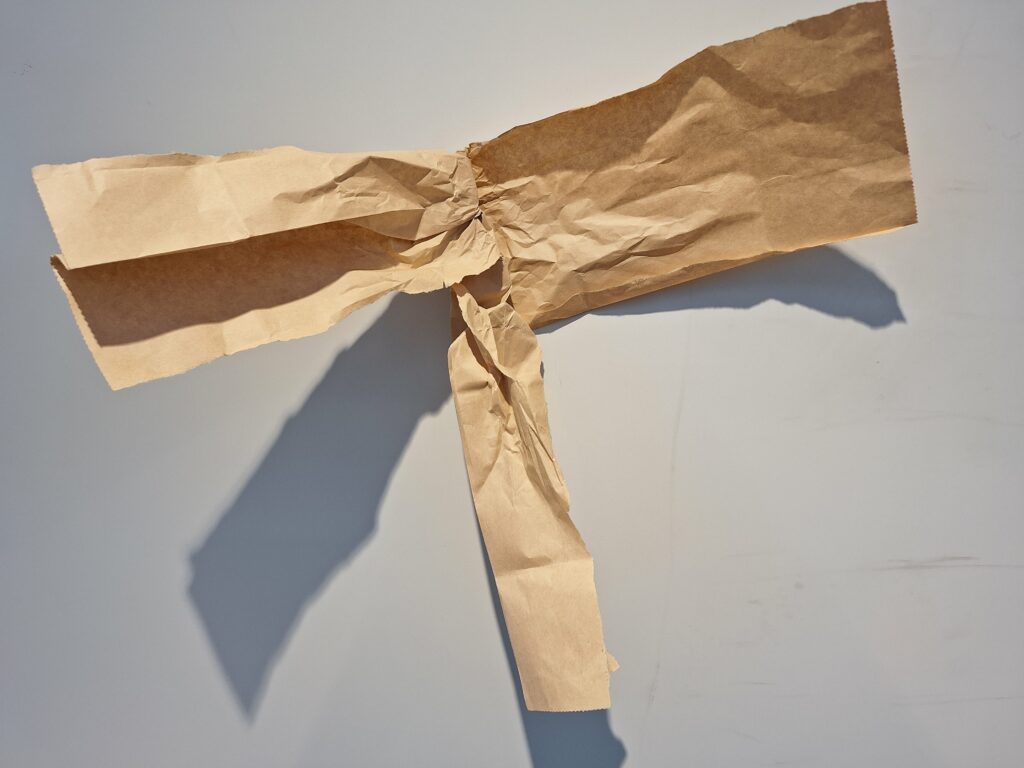
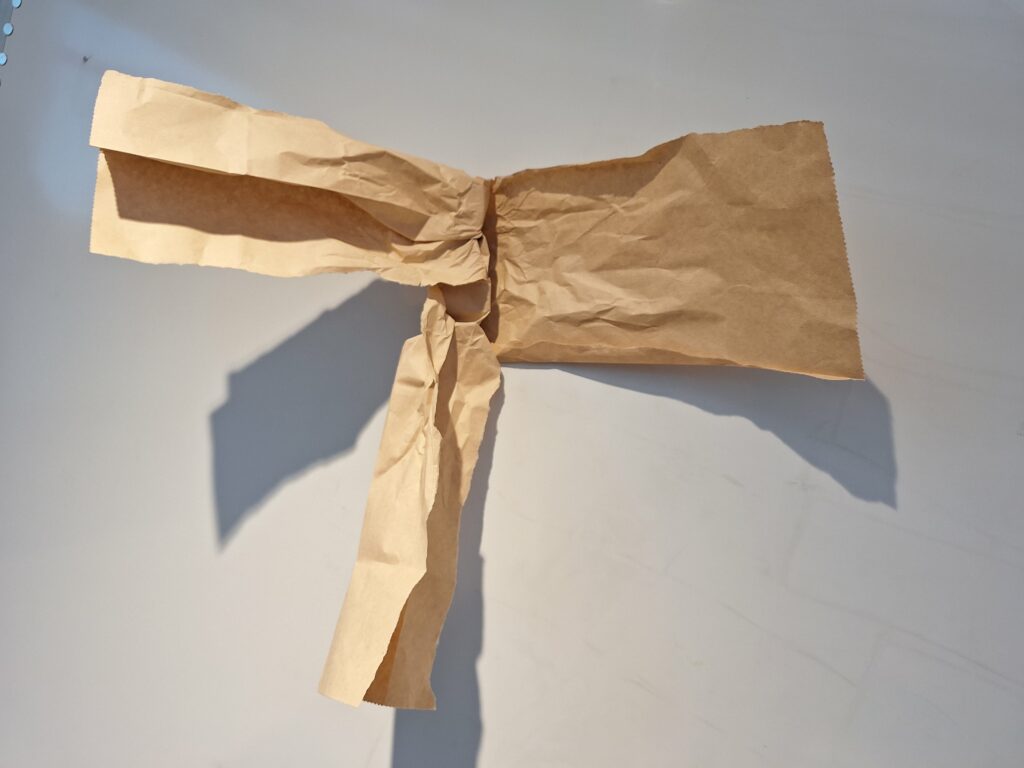
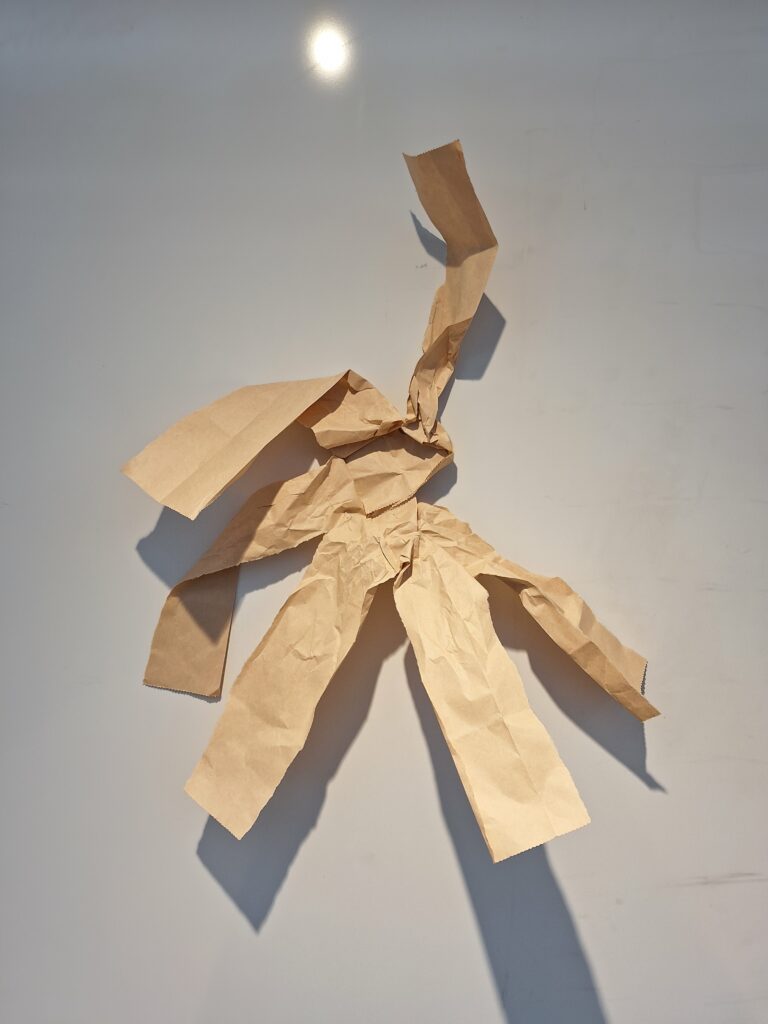
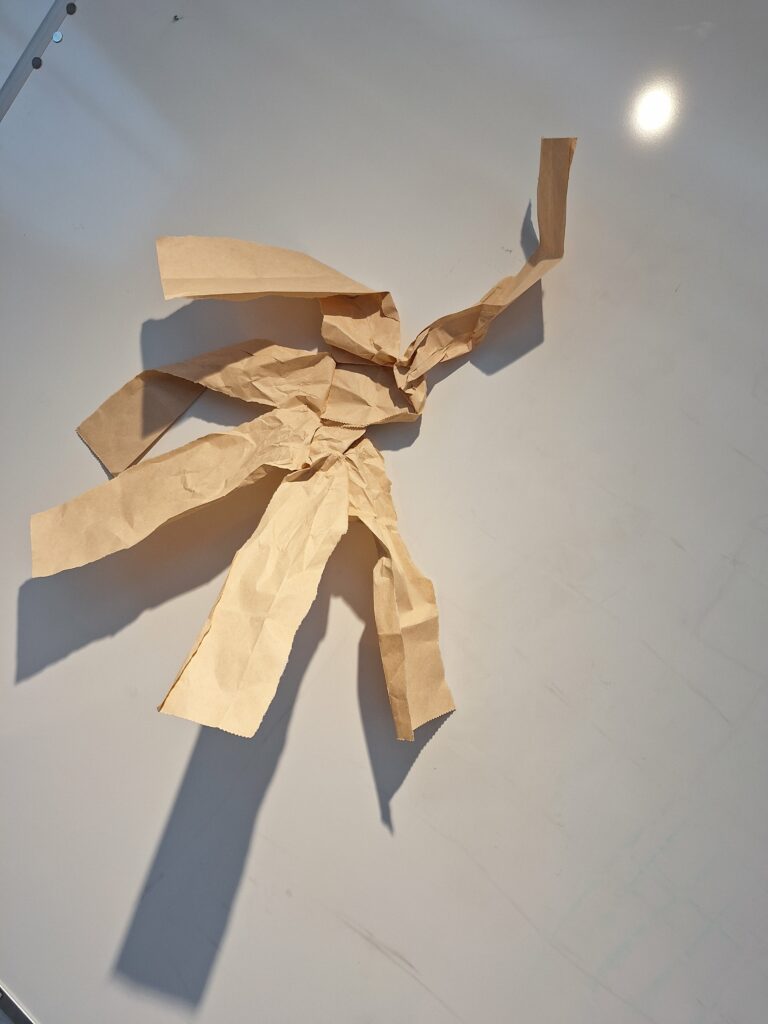
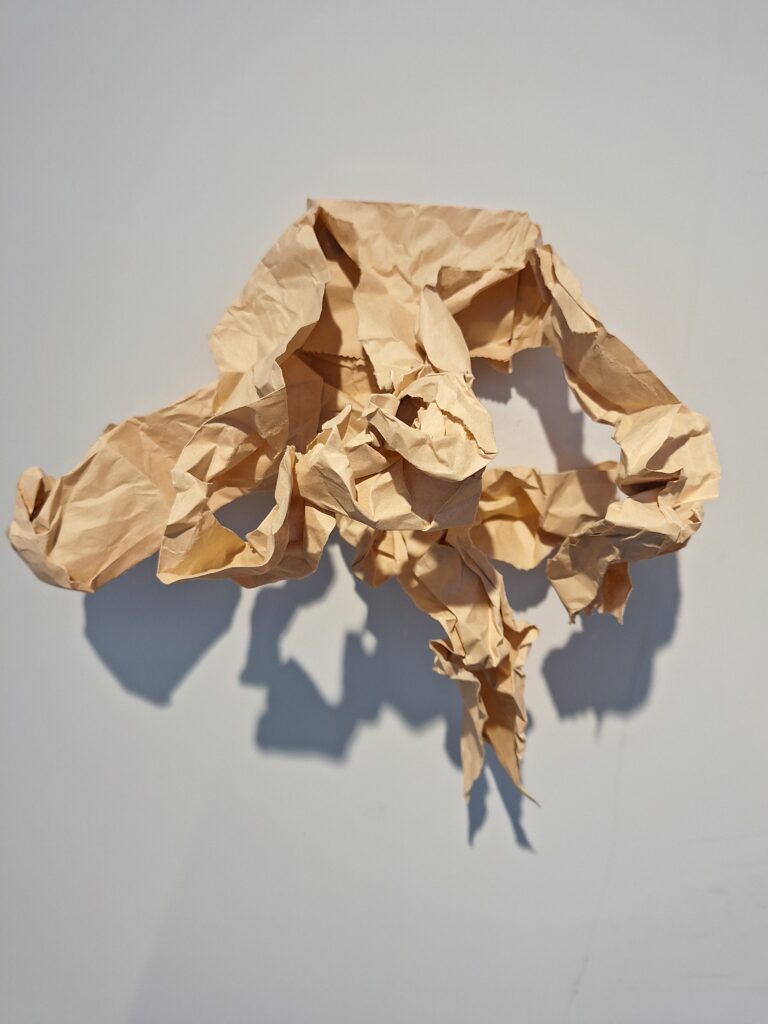
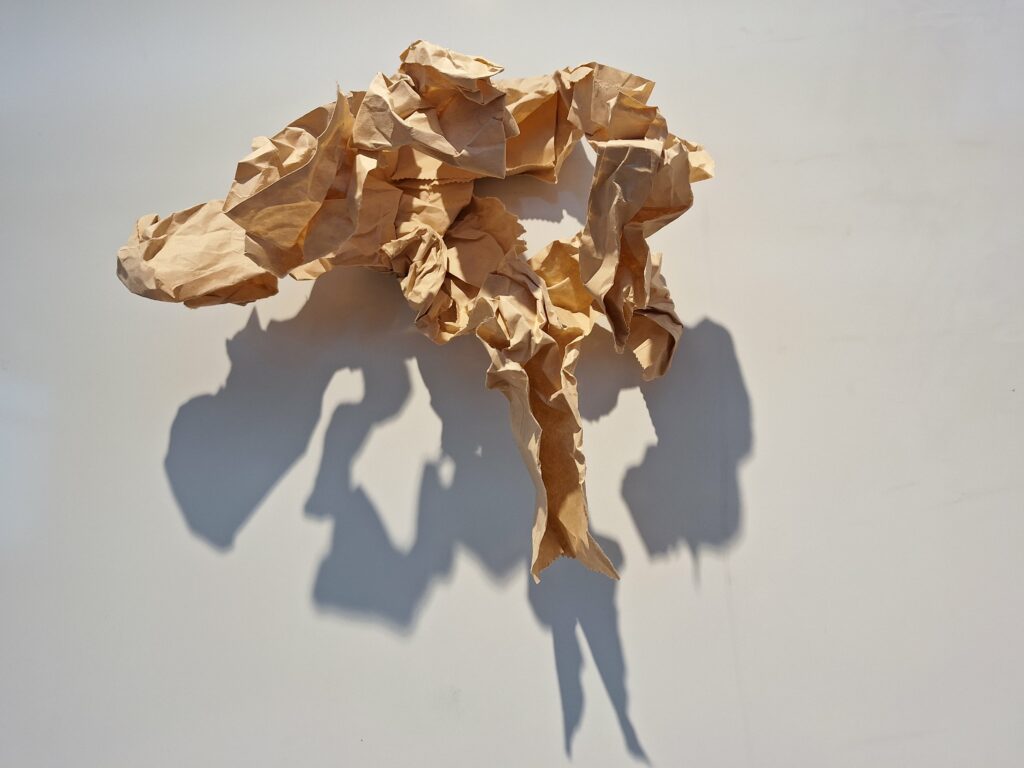
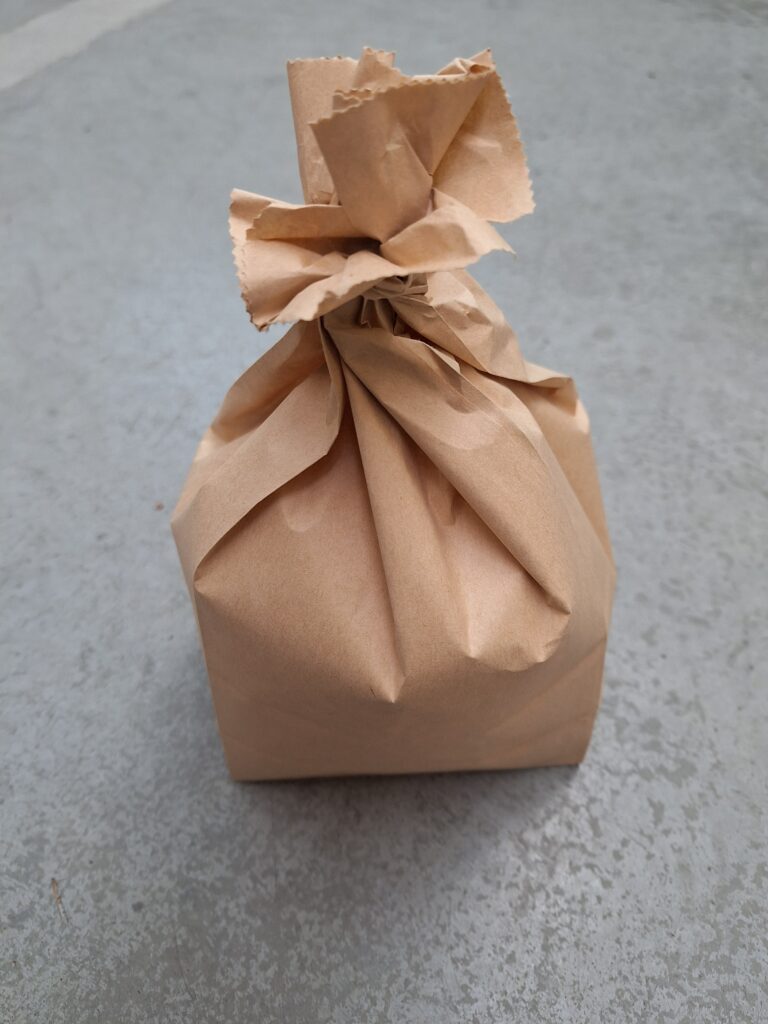
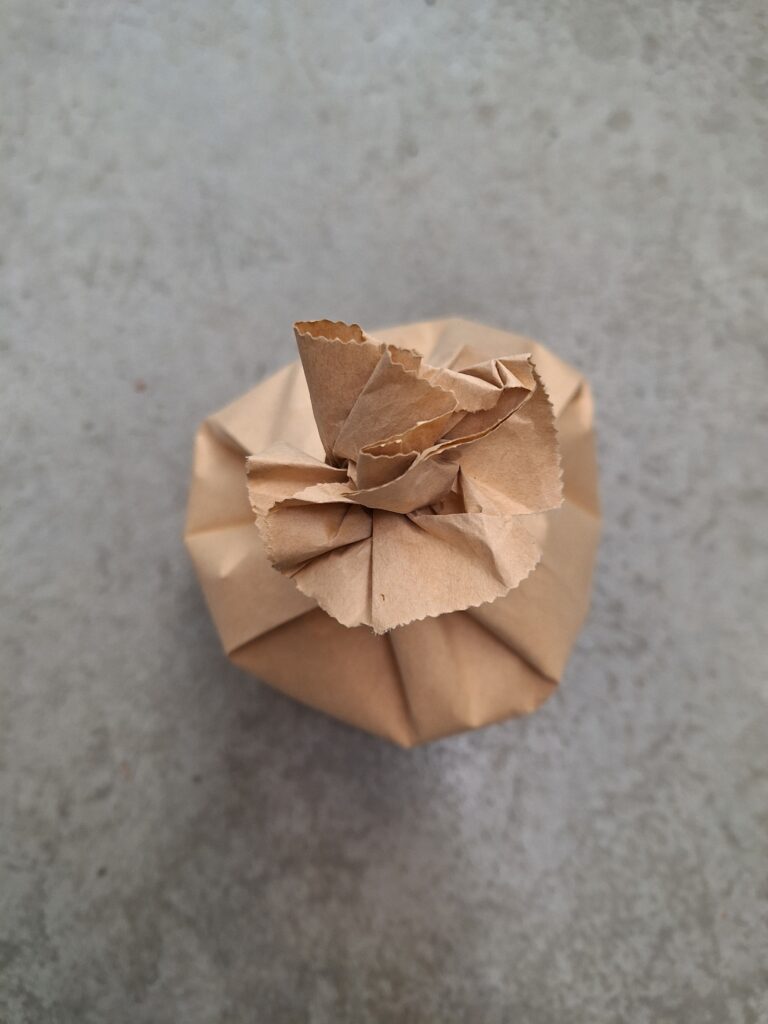
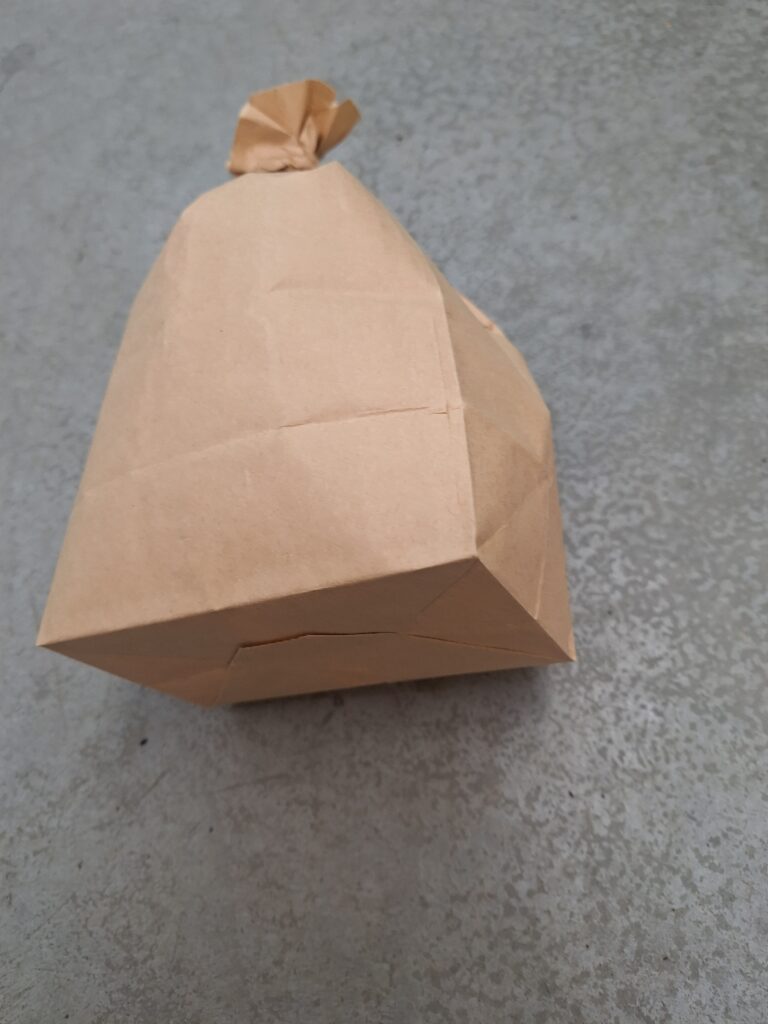
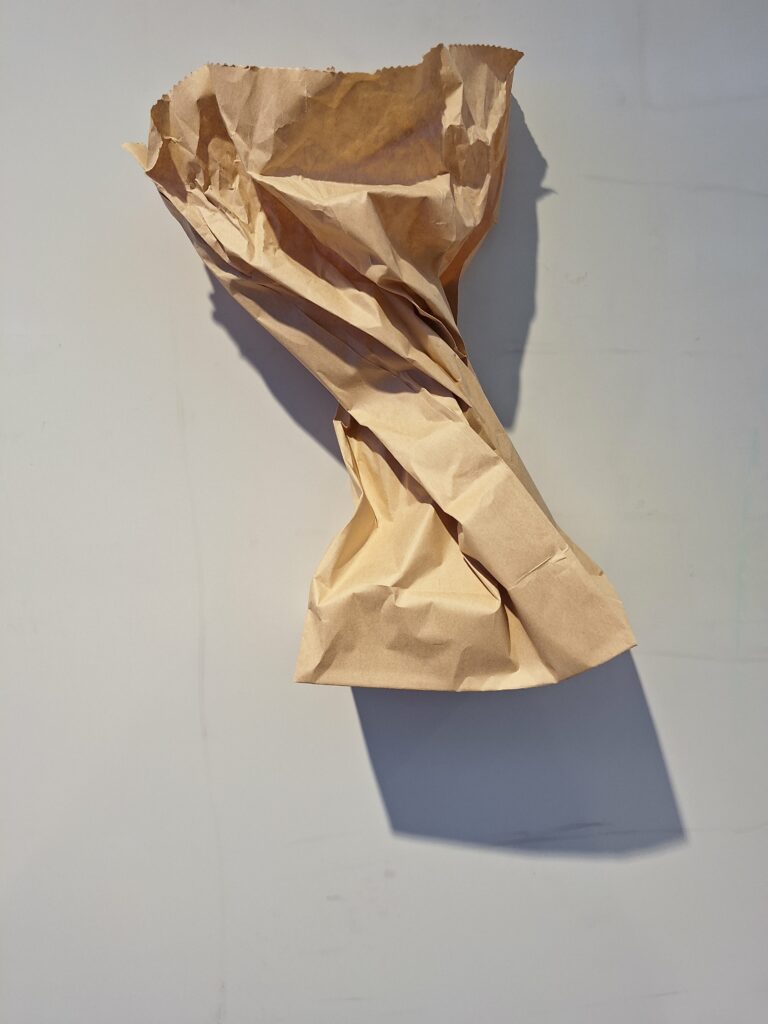
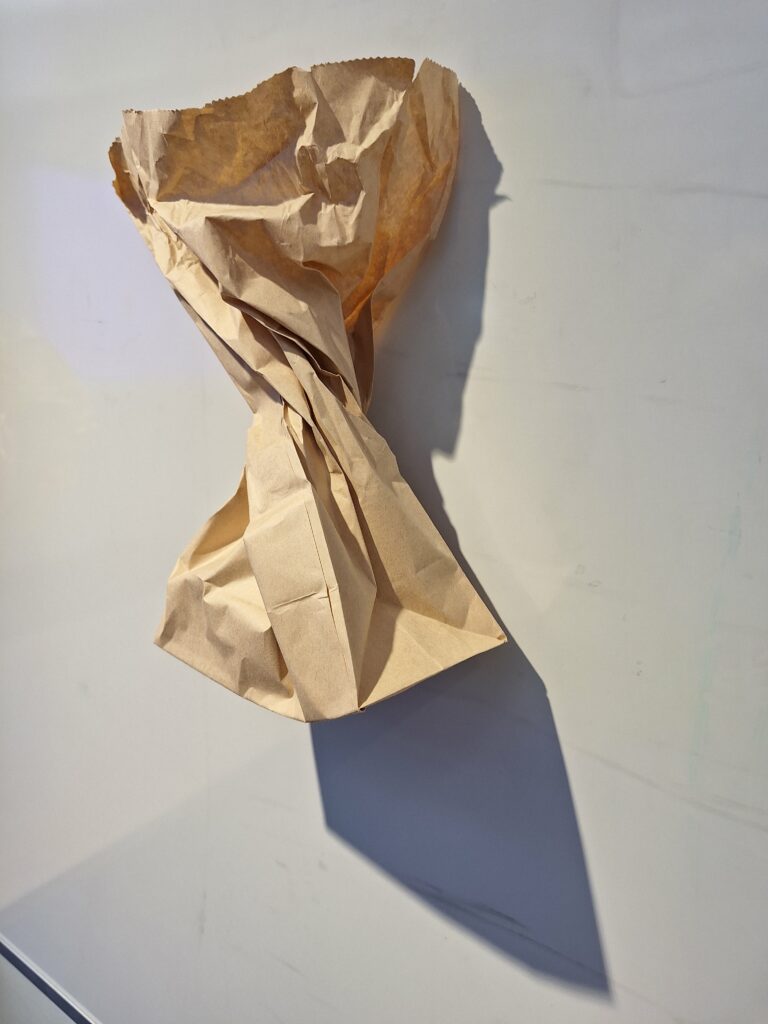
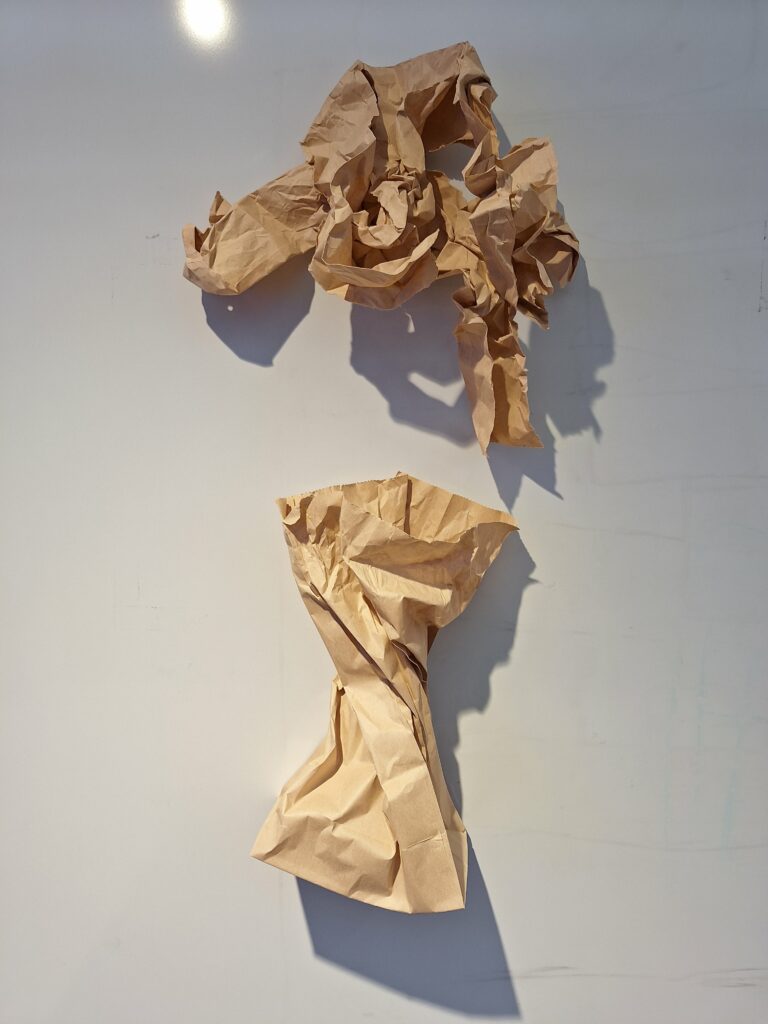
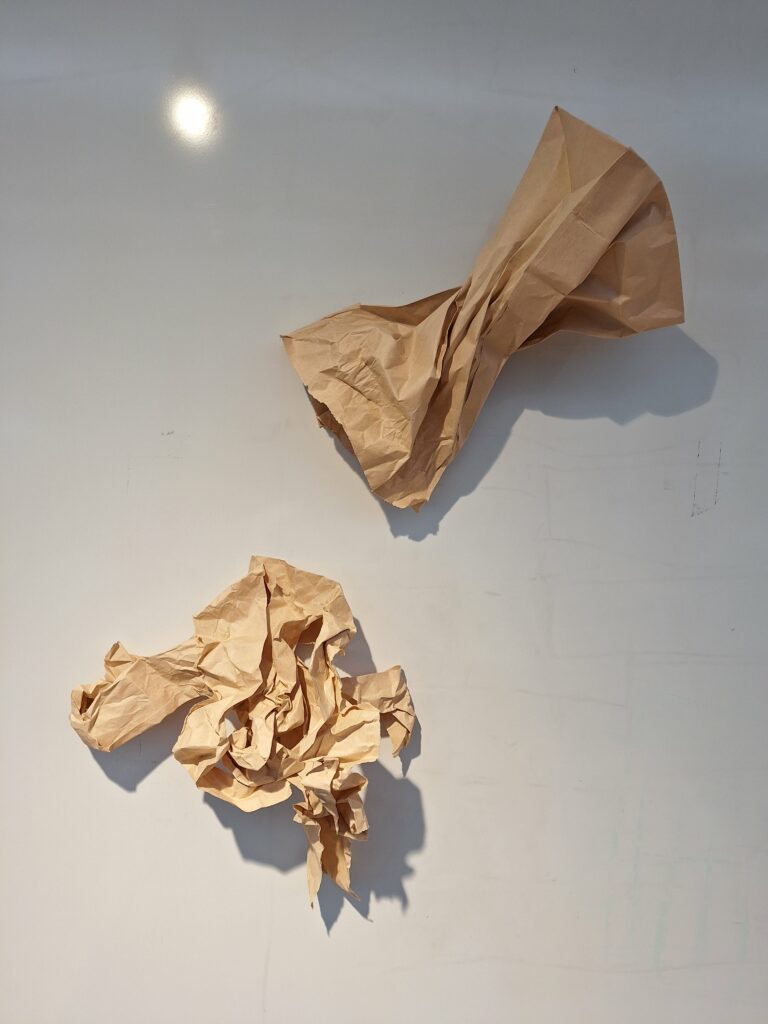
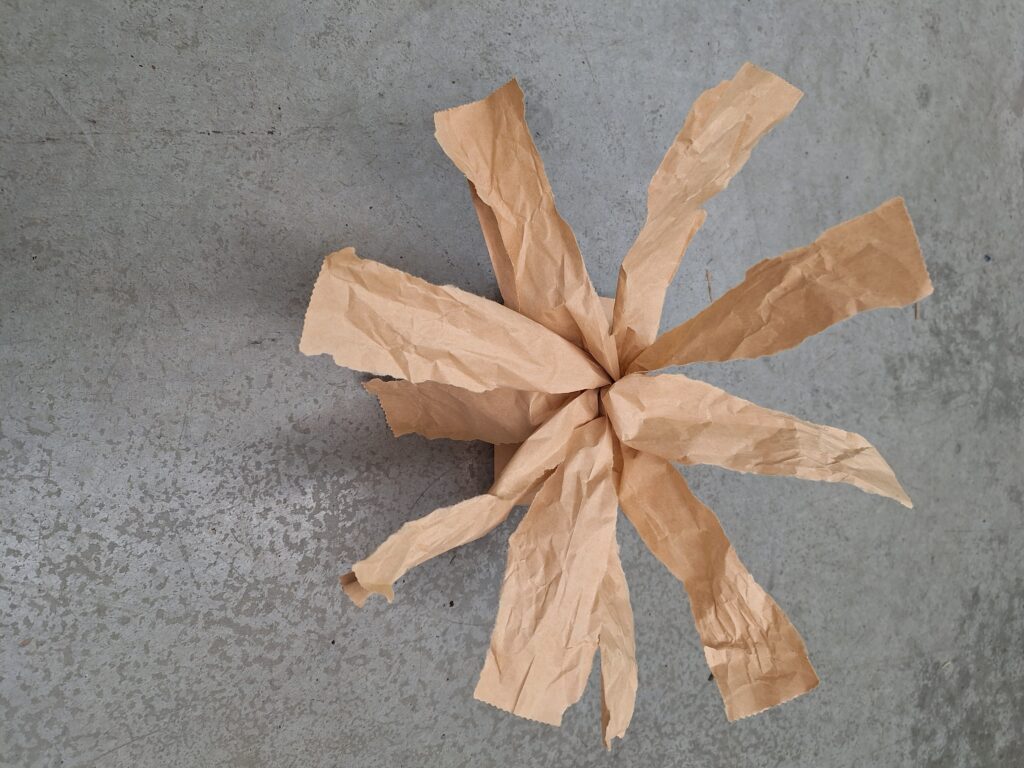
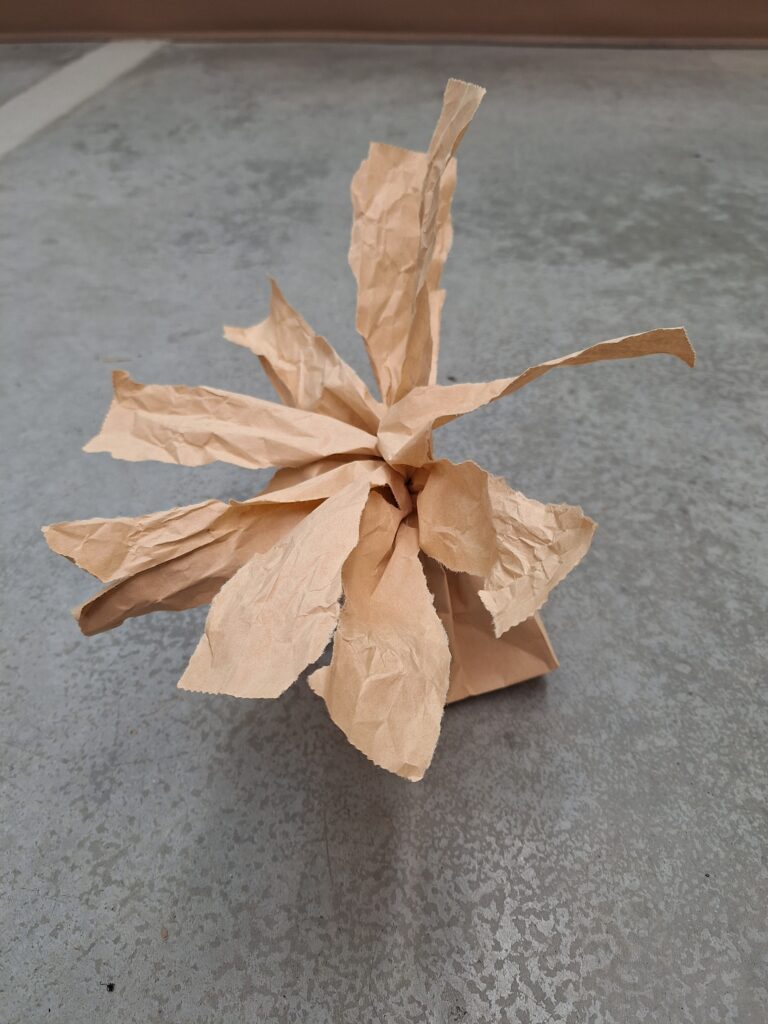
I started out looking at the bag from different angles and found it somewhat difficult to imagine creating different shapes. So I started to twist and tear the bag(s) and really got into a zone. There is so much movement possible with this one simple shape. The familiarity of it may have been what made it hard to imagine it differently but once I got started it was easy to play and have fun. This experiment was done in a group setting and the sound of crinkling and ripping paper was like a soundtrack to the activity. It was as if the paperbags were coming to life with movement and sound.
I thought I might make my project a flower or other organic shape, perhaps a fungus. But I sat with it for a few days and considered my thematic idea, which was to tell a story about Lush Valley Food Action Society. I collected my veggie bag on the day of the experiment and left it to one side as I let my ideas percolate. I thought of the idea of plenty and generosity versus selfishness and greed I also tought of the idea of abundance and generosity meeting hunger and need. So I am considering making 2 different shapes that express this latter idea.
With Thanksgiving approaching, the imagery of a conrucopia came to mind so I might try to create one shape to express this. I am still deciding what the other shape will be- either curled up into a ball or twisted around and bending over.
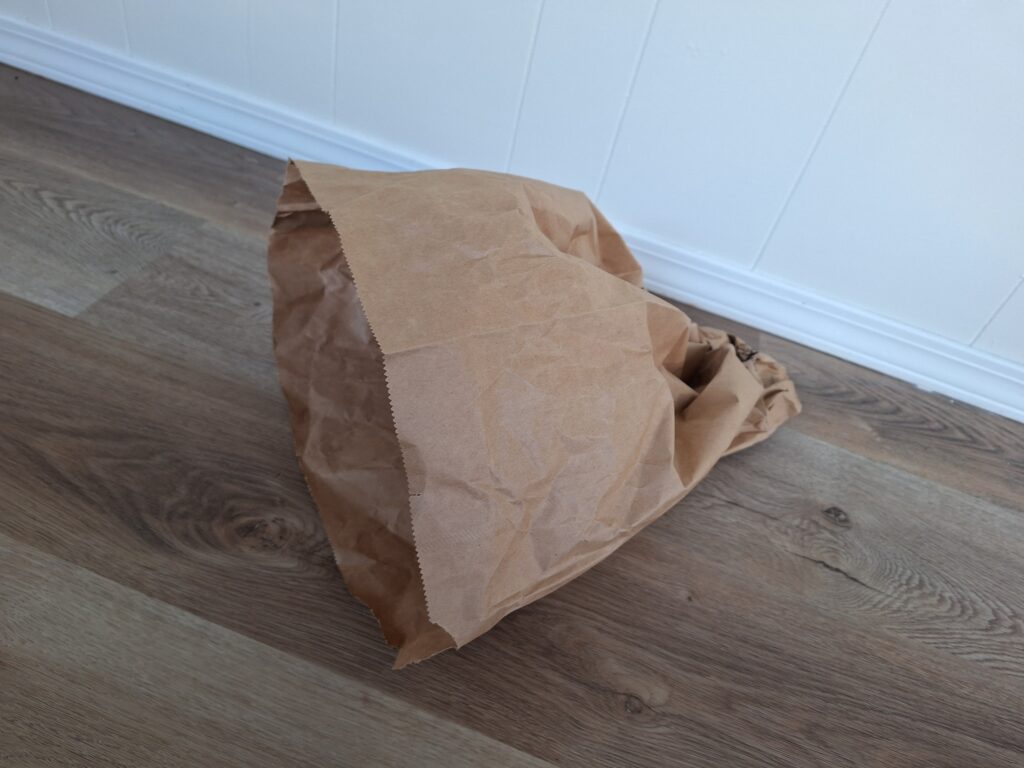
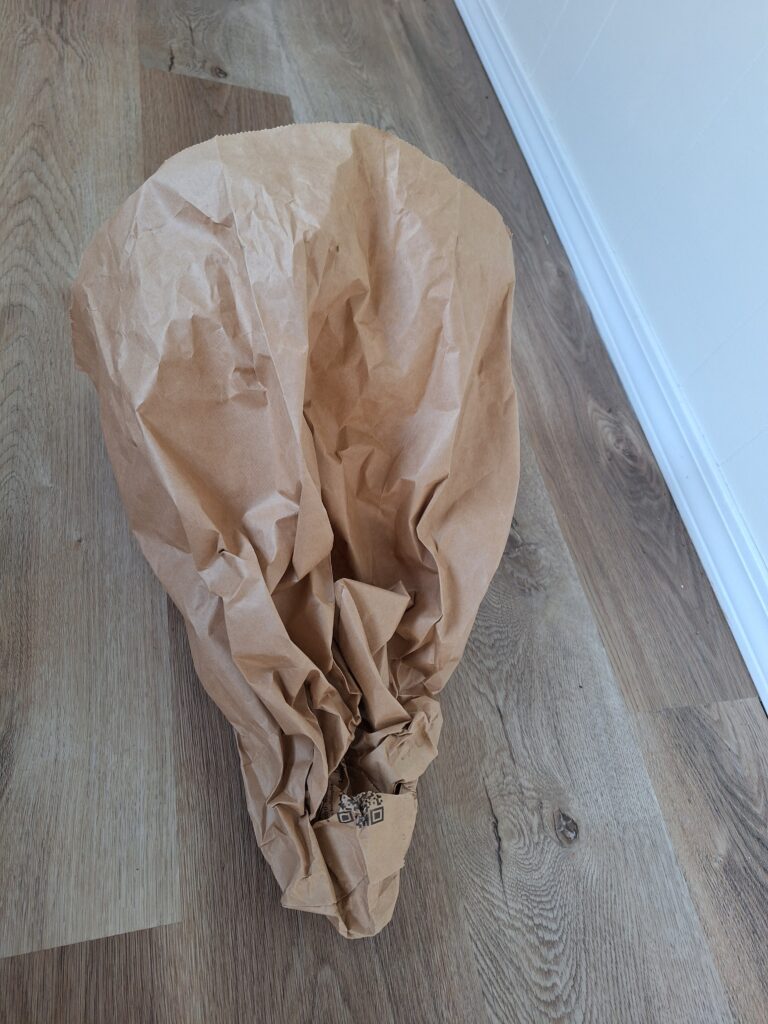
I took my Lush Valley Good Food Bag and shaped it into a cornucopia inspired form. Then I went about constructing my two mesh bags. I used a discrete colour of thread and a simple over-stitch as the seams will be a subtle part of my design.
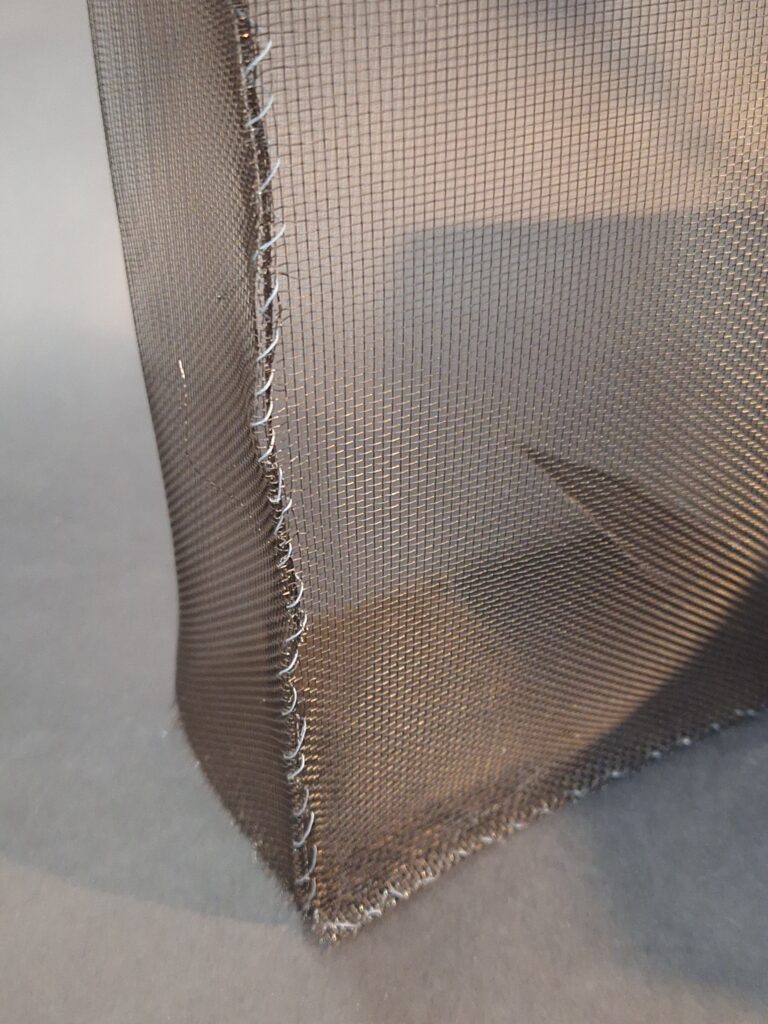
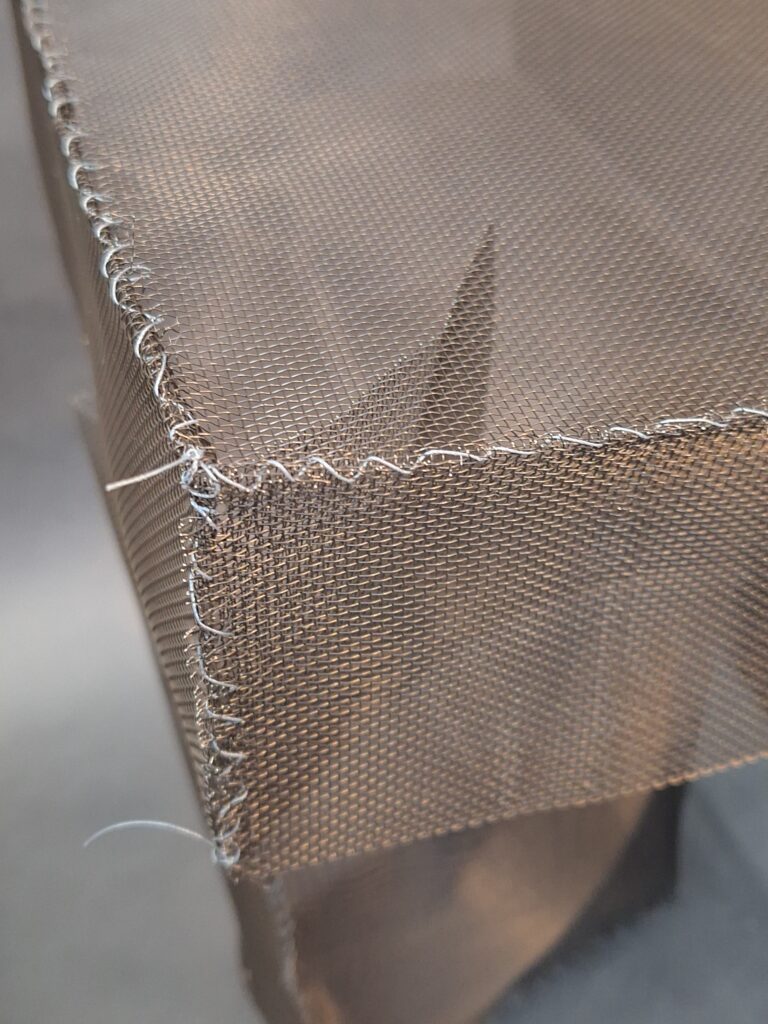
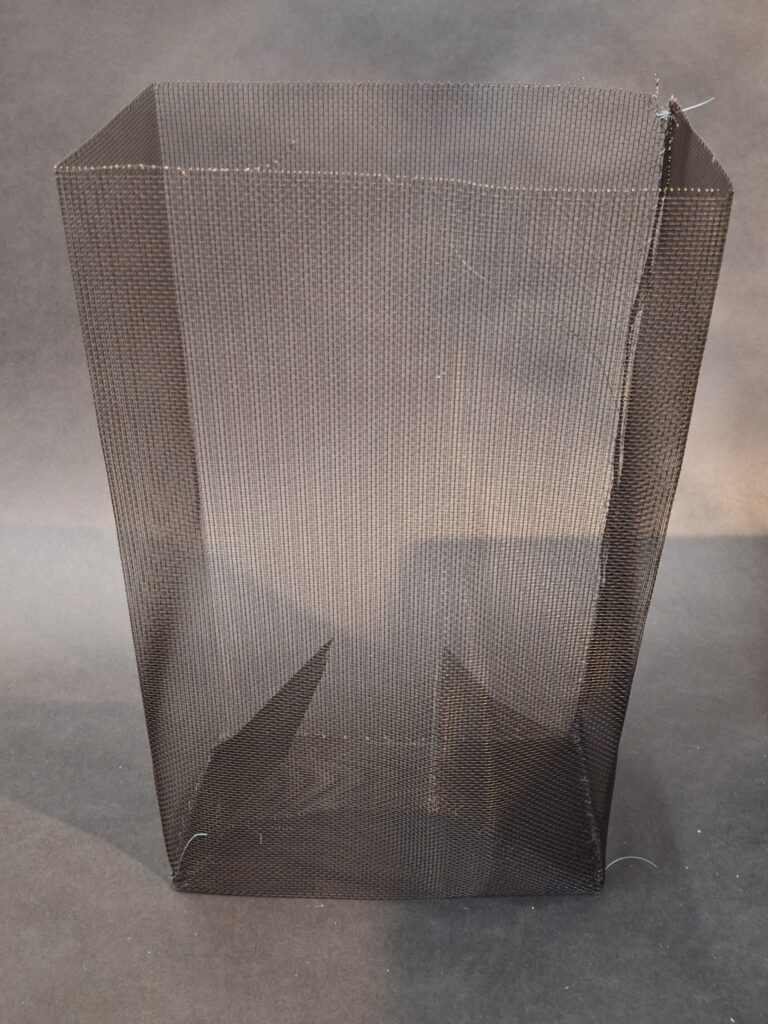
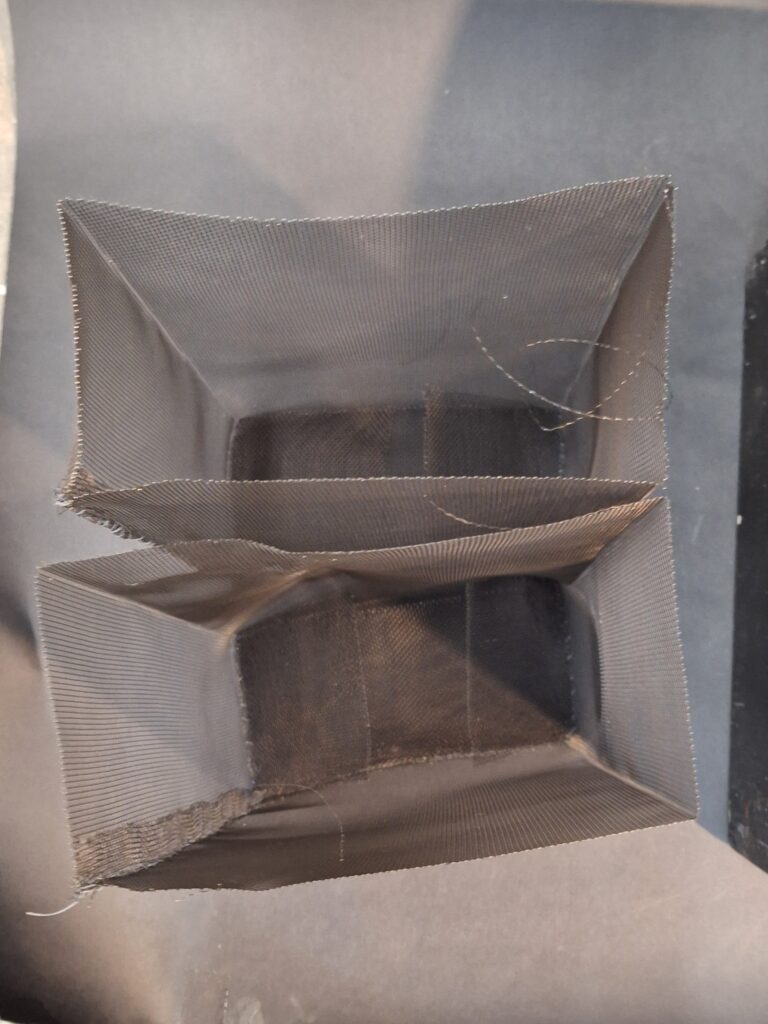
I then took one of the mesh bags and scrunched it to mirror the shape of my brown paper bag. The opening wasn’t wide enough so I was advised to put an extra panel in the bag, which I did. My experience of sewing fabric helped me to figure out how to insert a piece of the right size and shape.
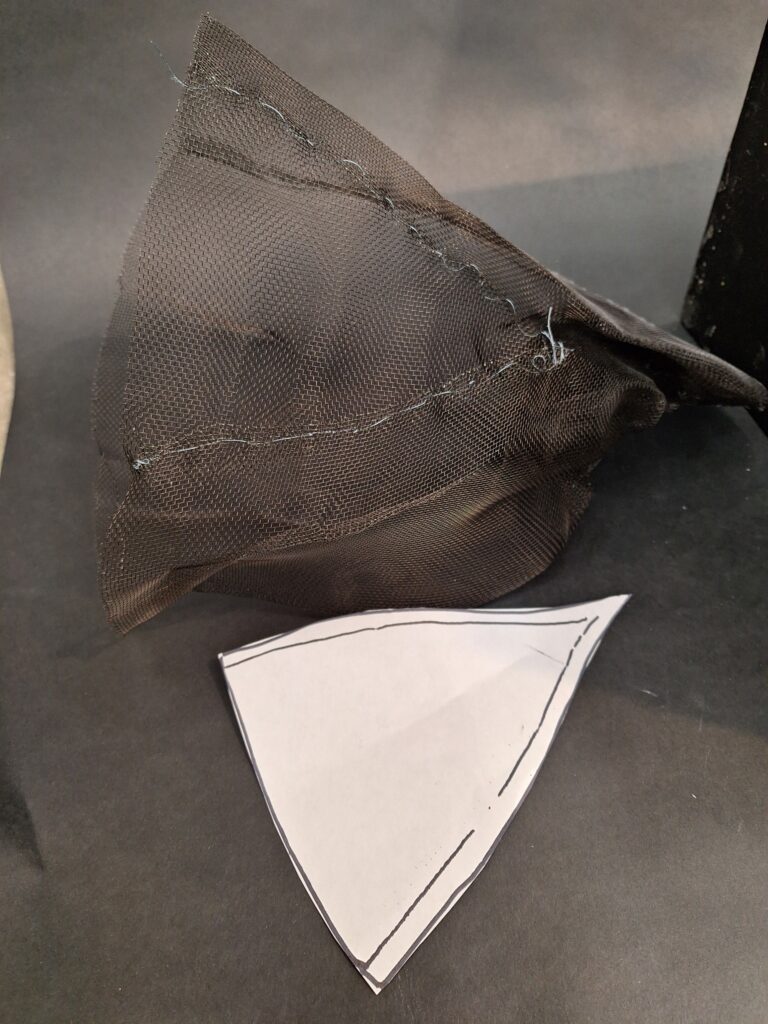
I applied plaster bandage to the outside of my sculpture and since it’s so wide open, I decided to do the same inside. I laid the bandages length-wise along the creases of the ‘bag’ and the contours were so pleasing I decided not to apply a layer of plaster. The process was rather messy and I kept my phone in my pocket- so here are some pics of the finished sculpture:
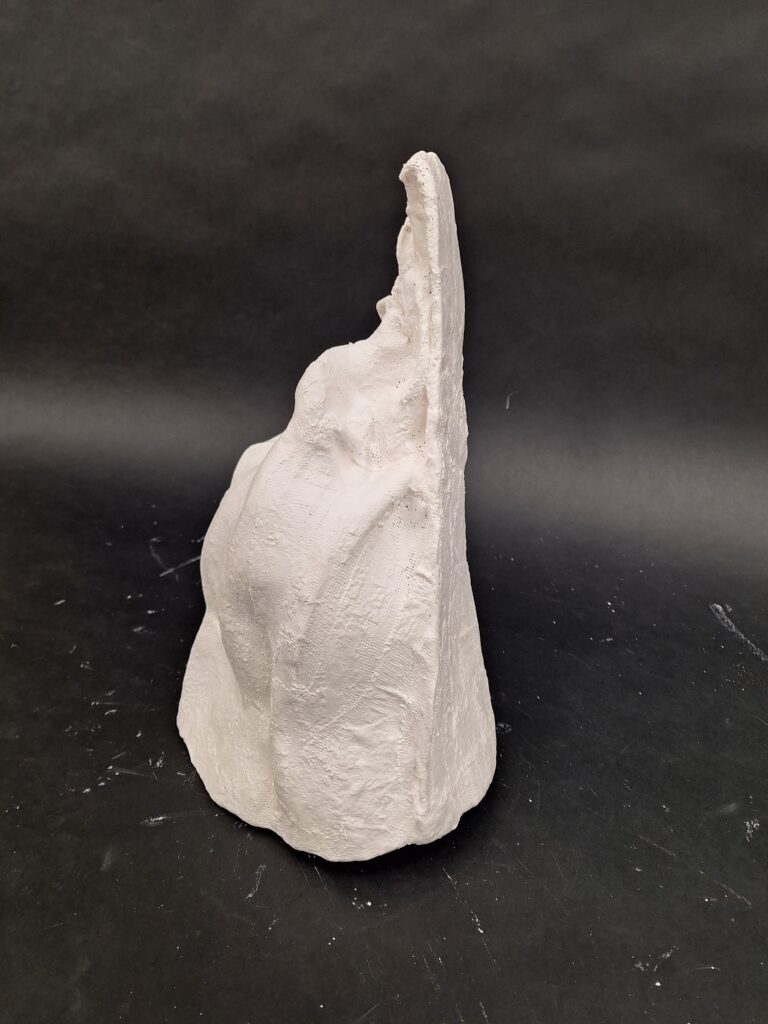
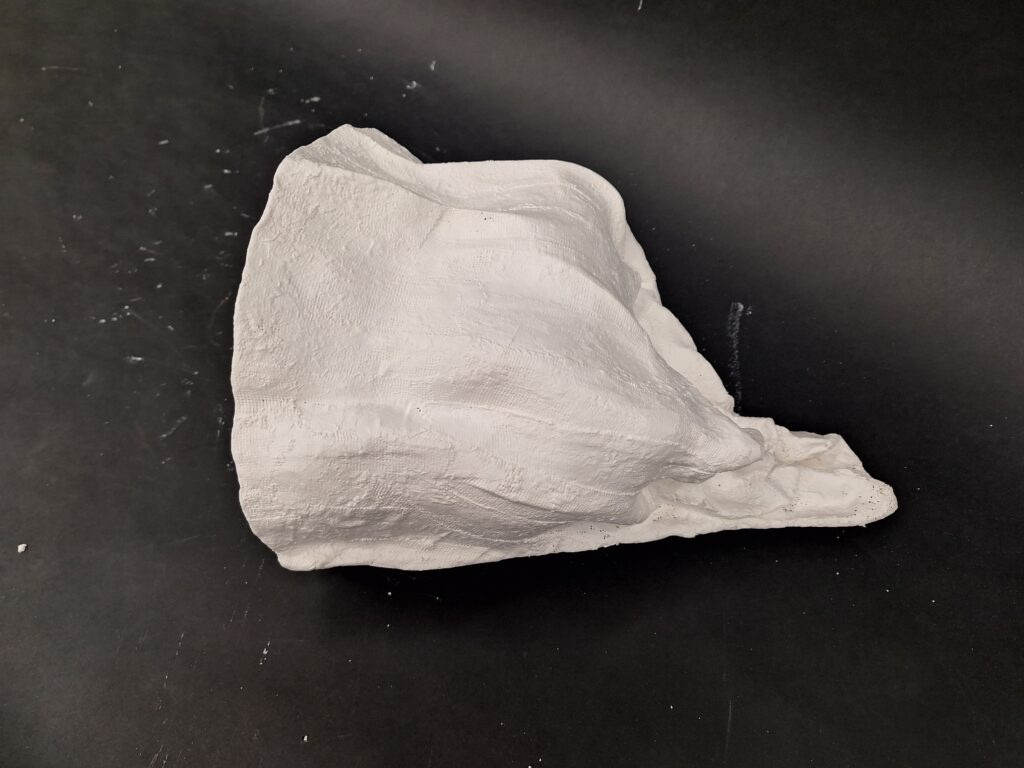
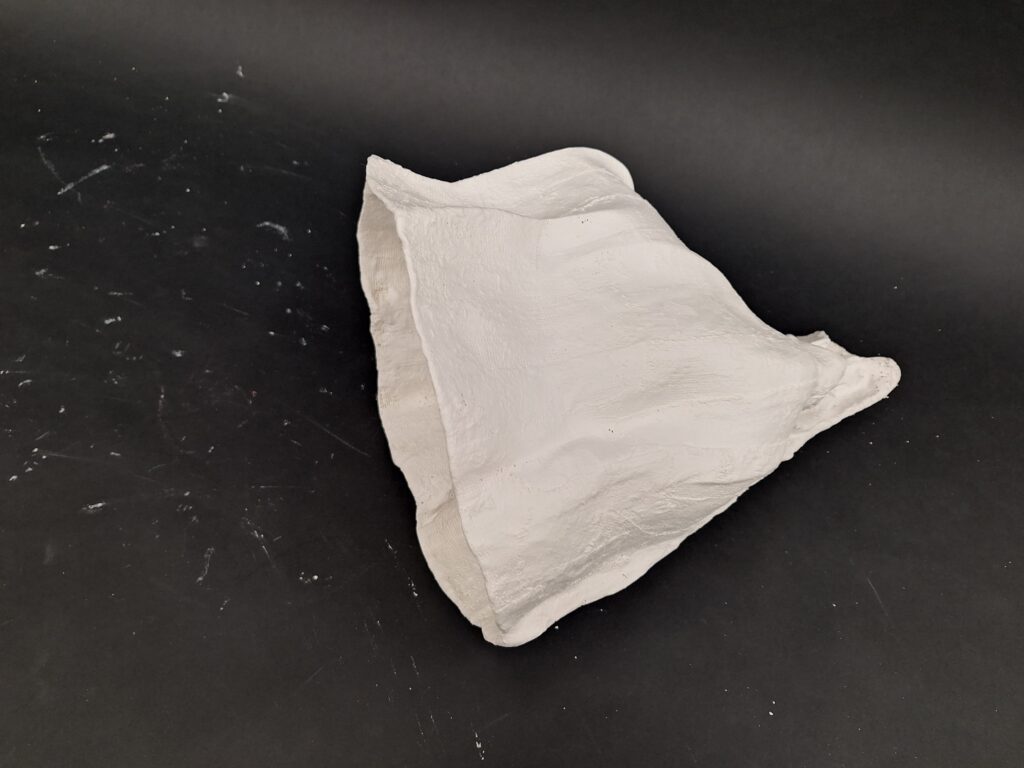
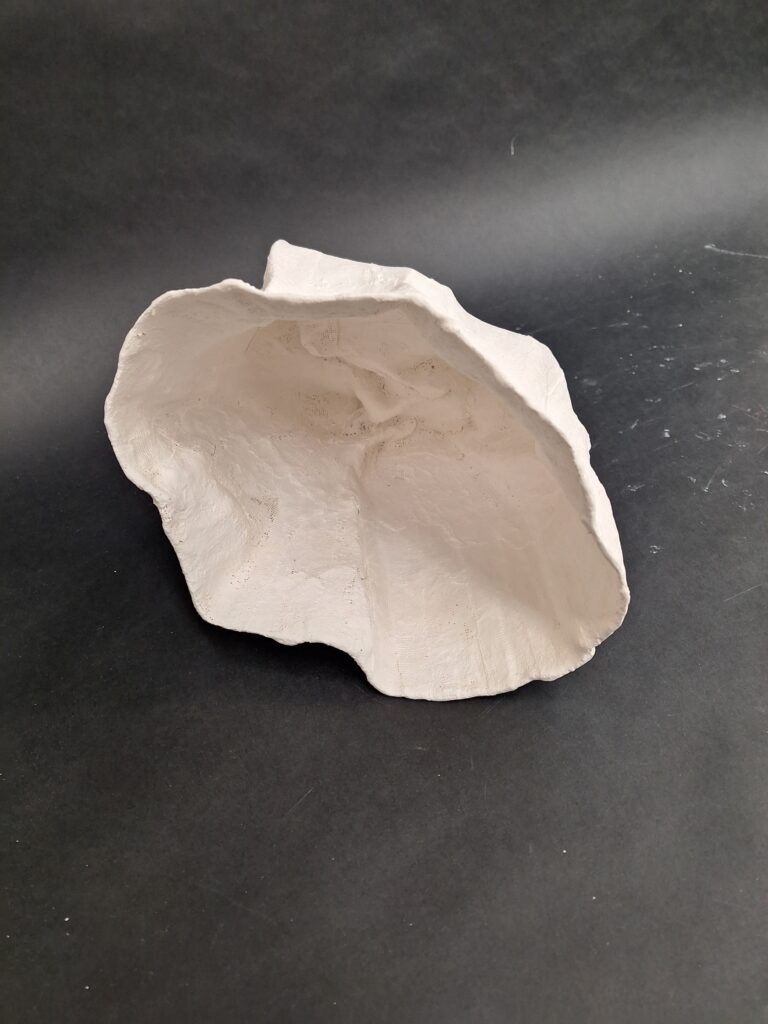
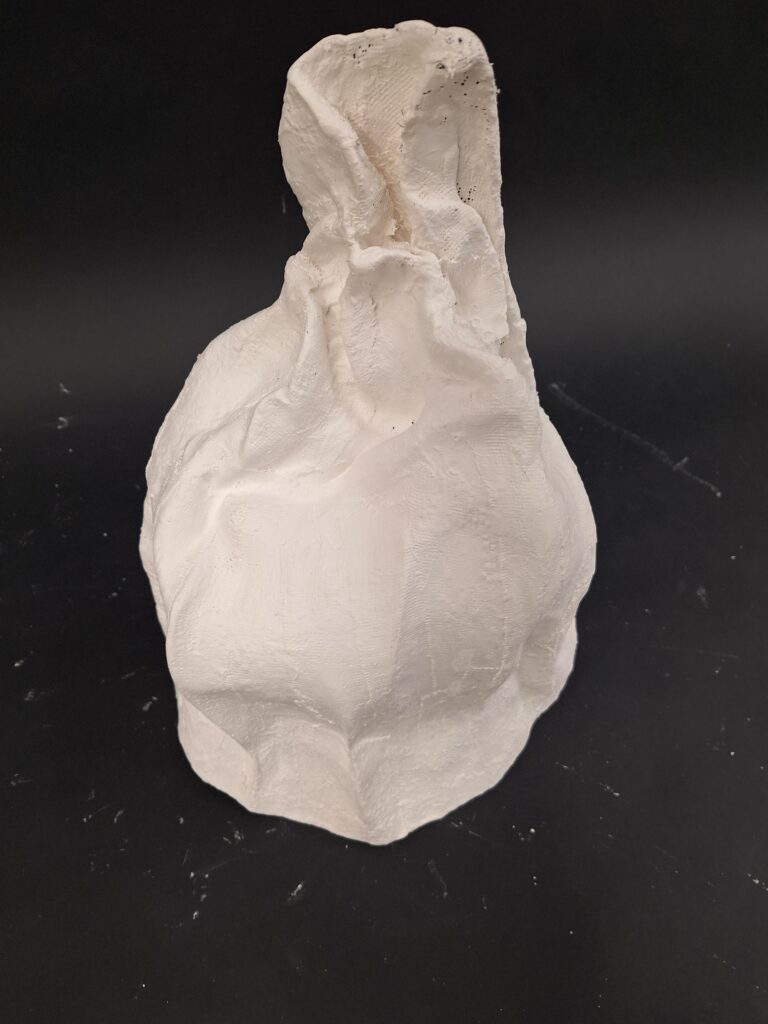
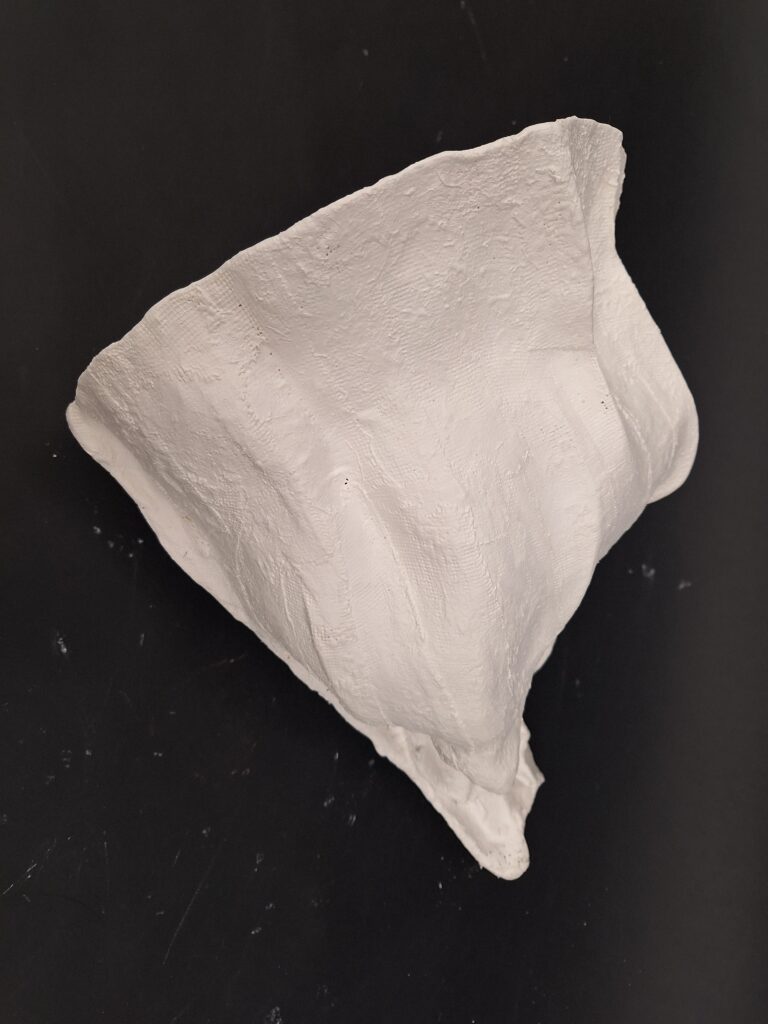
I thought about how to respond to the ‘cornucopia’ with the partner bag. I had the idea of creating a ‘giving and receiving’ relationship. So I twisted the mesh bag at the bottom, leaving a big open ‘mouth’ that I stitched in place to create an incline towards the partner sculpture. I plan to set the ‘cornucopia on a small box so it is slightly higher than the mesh ‘cup’ or ‘mouth’ to suggest pouring out nourishment.
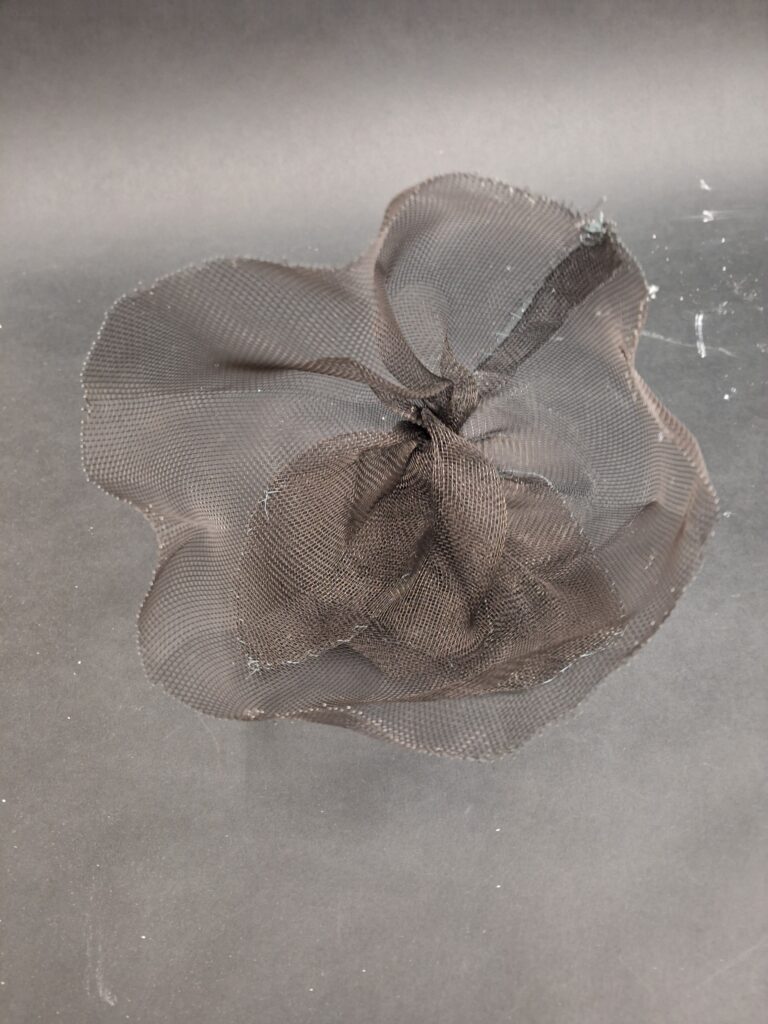
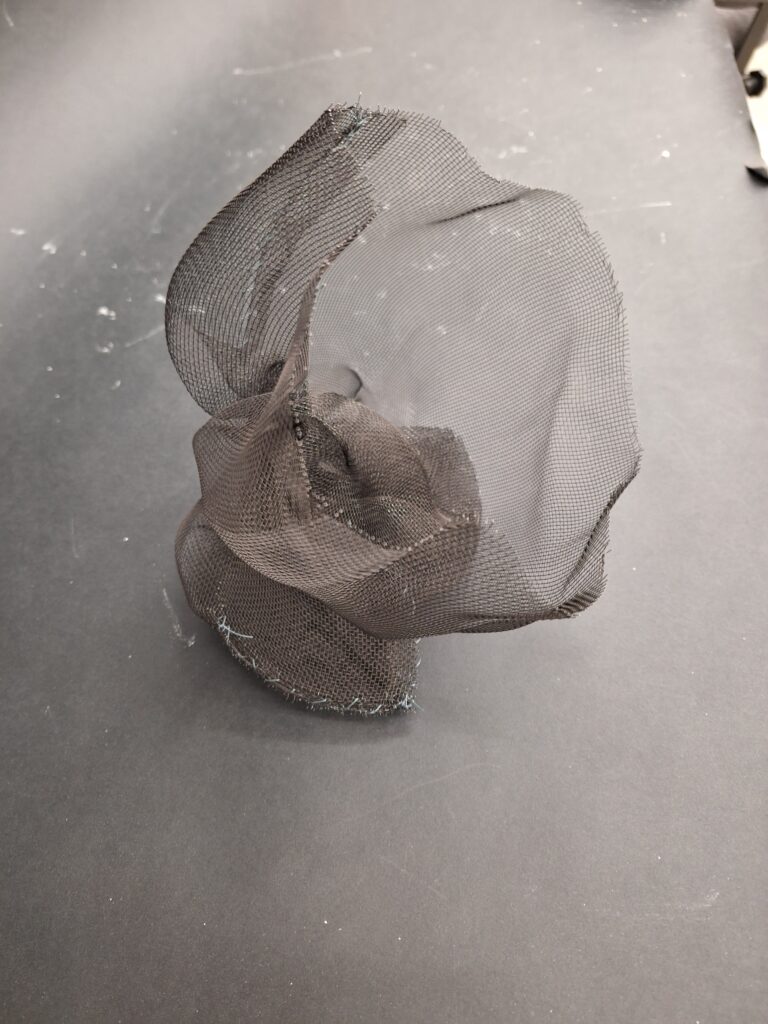
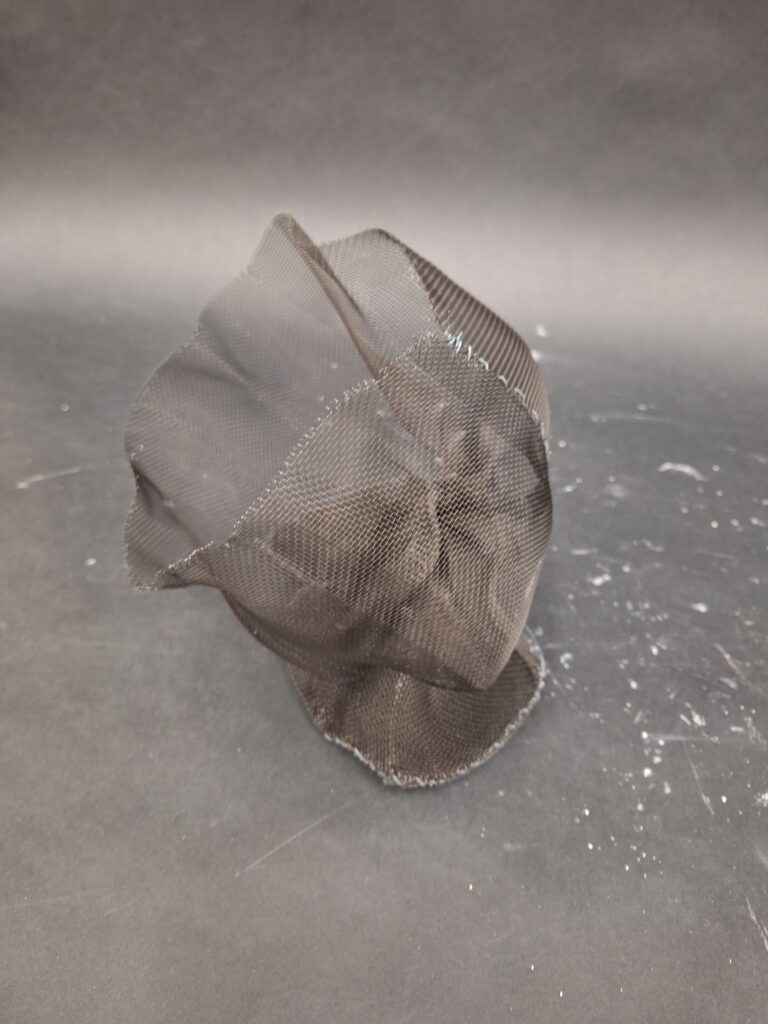
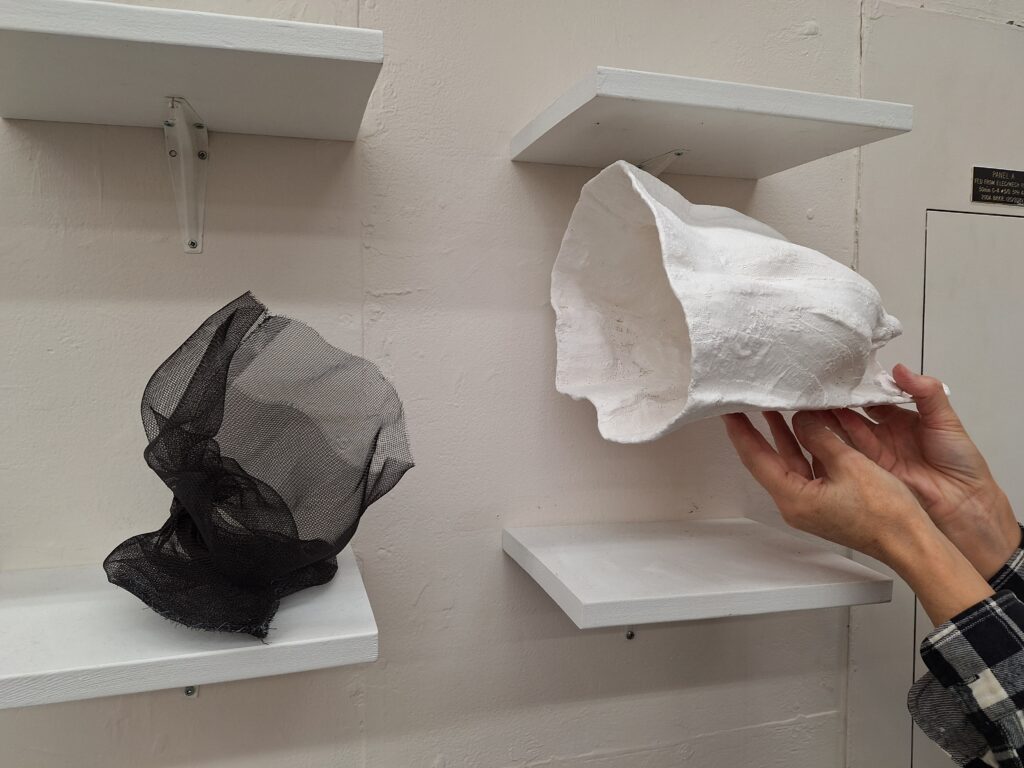
Companion poem. I wrote this poem a few years ago when Lush Valley first started providing me with a ‘Good Food Box’. I gave the poem to Lush Valley and they used it to share with community groups who were/are interested in the impact of their amazing programs:
Can’t Quite
.
I can’t quite put
my finger on it
why my heart feels
lighter and calmer
who’d think a box
of fresh delicious veg
could fill me up like this
but it does
.
Every day I open
my fridge and see
yet another perfect
surprise- an eggplant
spring onions, potatoes
apples and pears
the list goes on and on
.
Already I’ve made
a hearty soup
and a spicy curry
~ the chard became a
bright green smoothie ~
my body feels better
for eating this tasty fare
.
I am gradually sensing
a secret ingredient
which is the love that
follows each piece of fruit
and veg from seed
to farm to box to plate
and the passion for inclusion
that draws everyone in
and makes this incredible
Lush Valley Good Food Box
accessible to all
.
In a time when my means are small
as I choose to put health over money
I feel the community
I feel the pride and care
I finally put my finger on it
I feel a sense of well-being
that has been a long time coming
I feel a quiet gratitude
that allows me to hope
~ to believe in a bright today
and a healthy tomorrow
.
By Carys Owen
FIN 130 Unit 1
When we discussed the project, my mind went straight away to a crab shell that has travelled in my car with me for a couple of years. I often look at it and admire its form and colour. I was interested to explore this wonder of nature and the engineering of a crab’s armour.
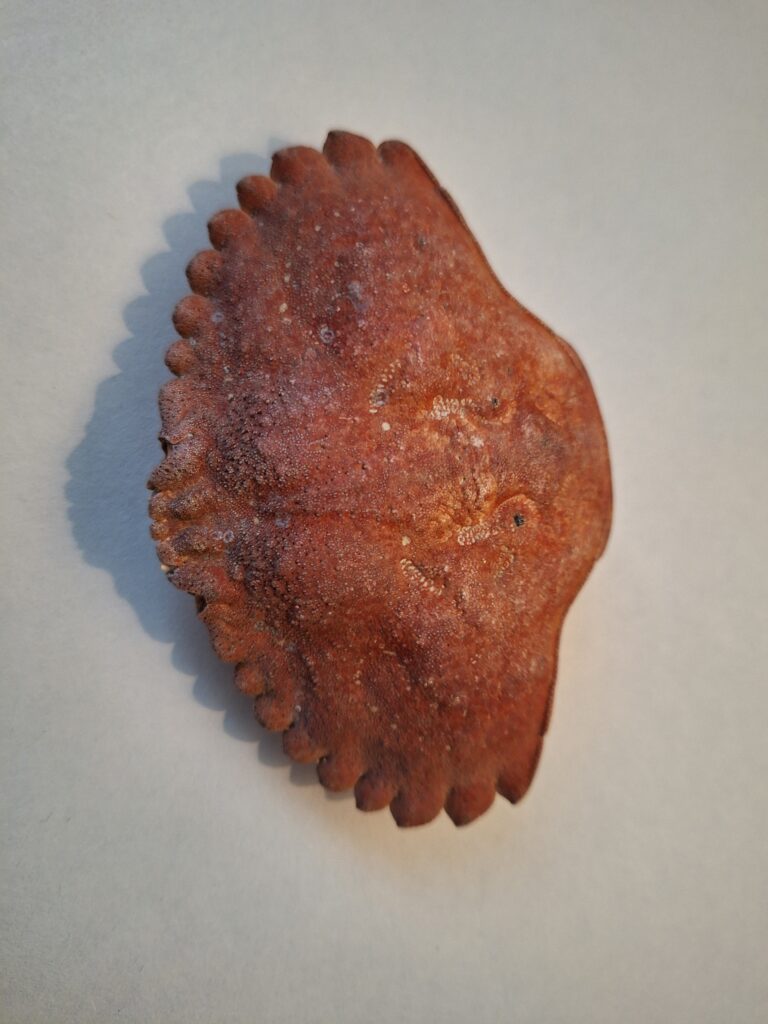
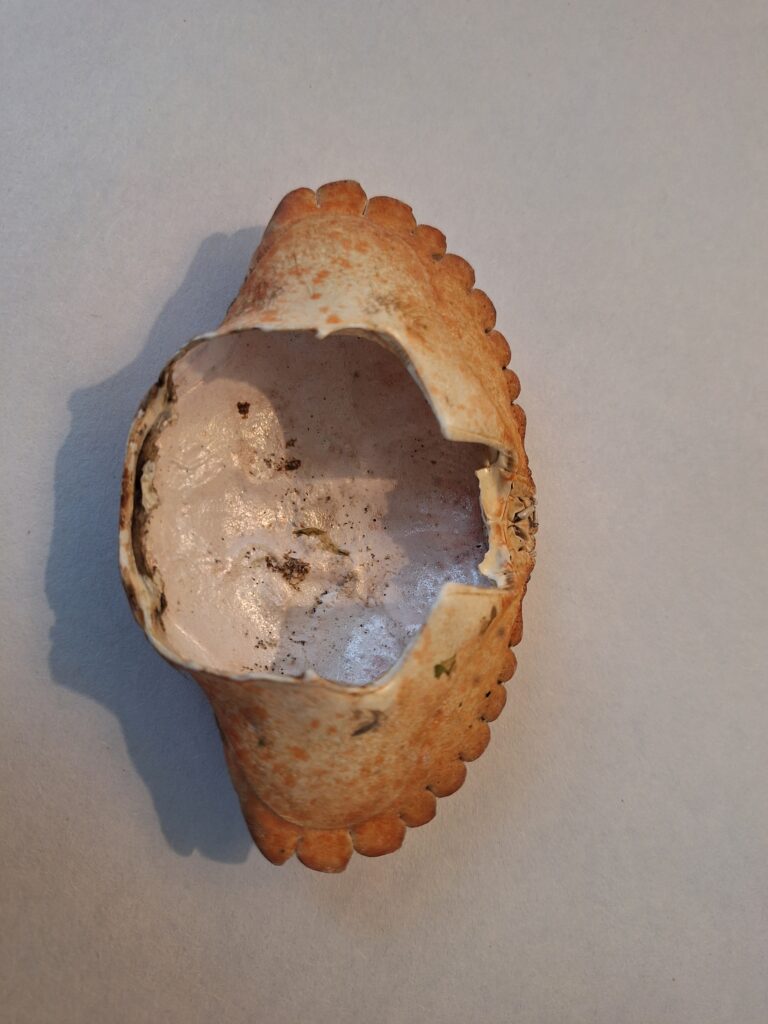
As I drew the shell from several perspectives I was struck by several details that I hadn’t noticed before- especially a couple of gorgeous curving lines. I was also struck by the symmetry of the shell and was reminded again of the incredible connections between nature and geometry.
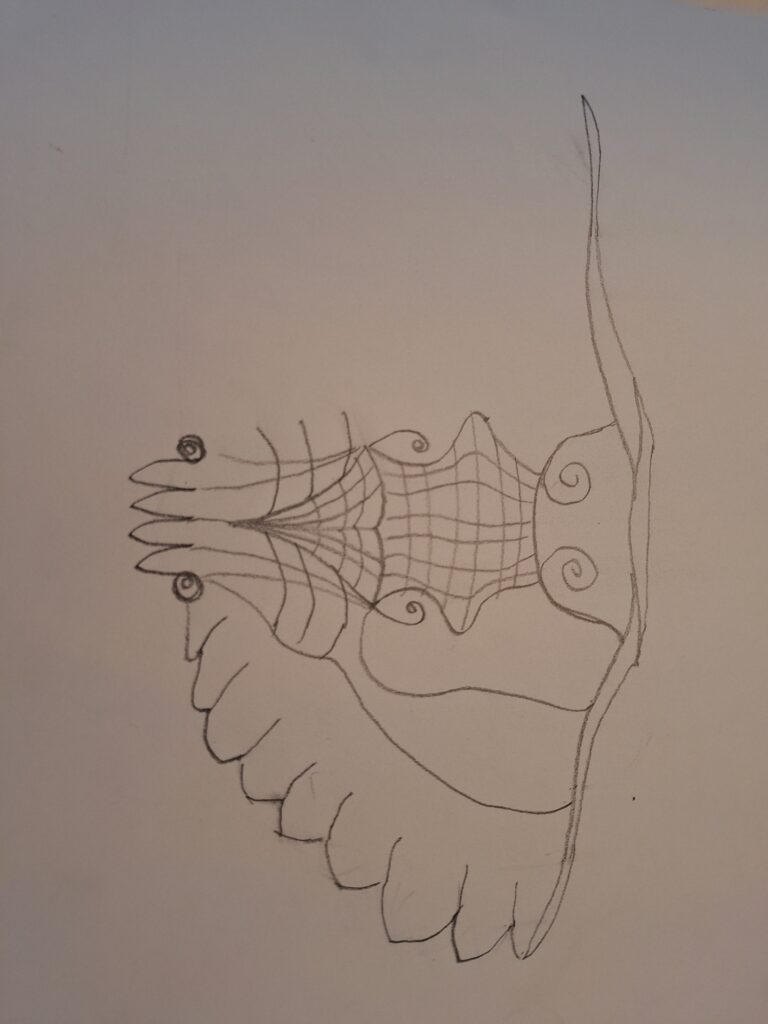

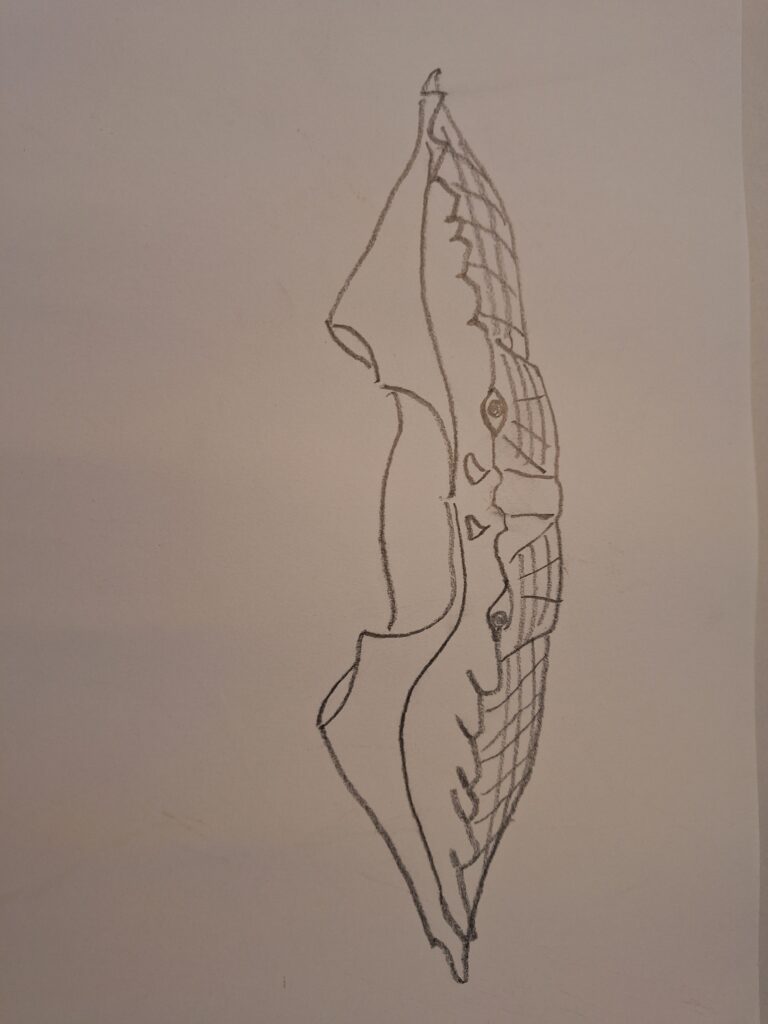
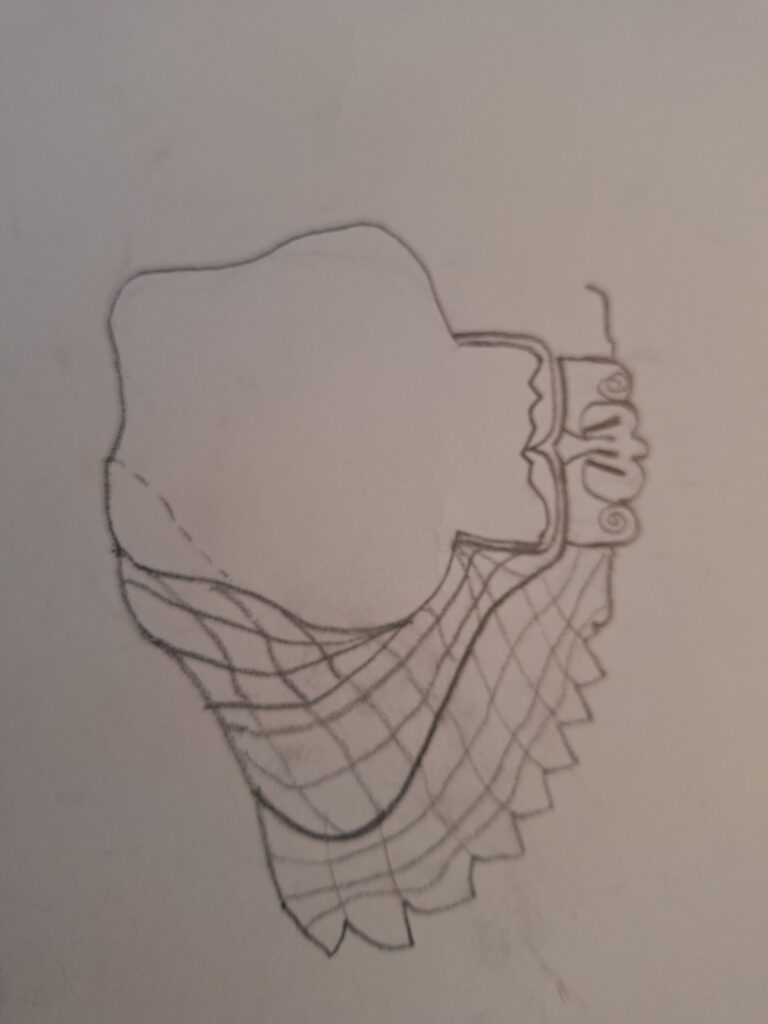
Once I started to create my 3D design, I was drawn to treat is as a continuous line drawing, which resulted in some expressive lines and also some focus on linear mass.

As my wire shell began to take shape, I was aware of the use of negative space and considered carefully what to show and what to leave out. Throughout the sculpting process I tried to imagine the insides of the crab filling this space and was mindful of creating a 3D representation.
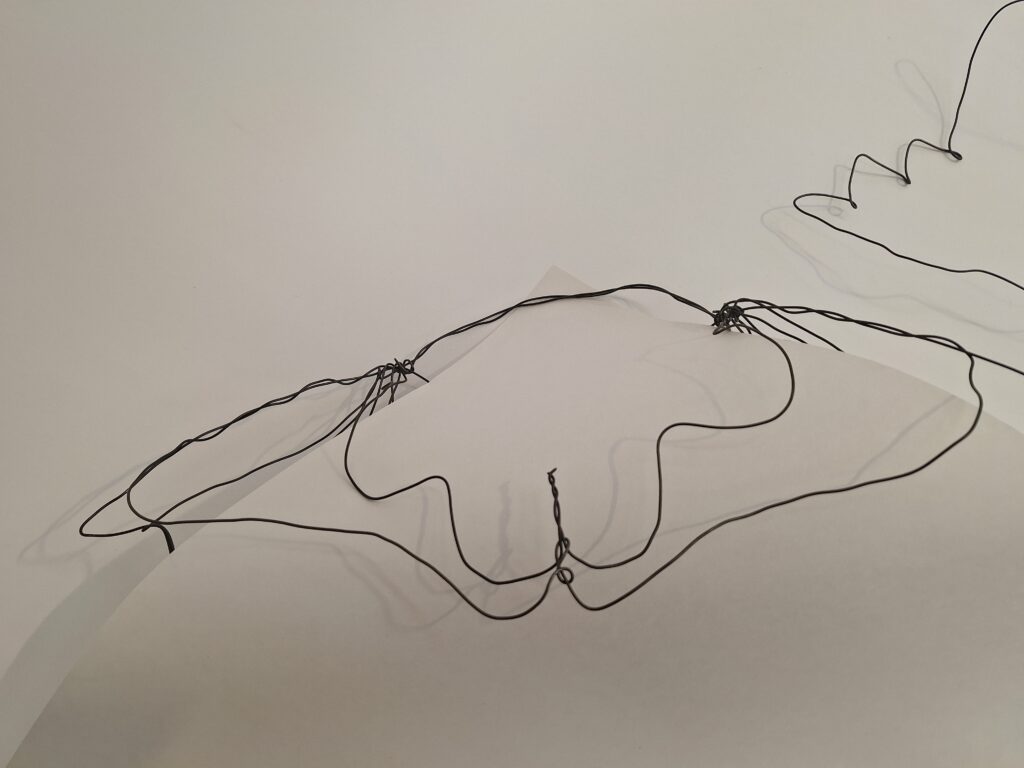
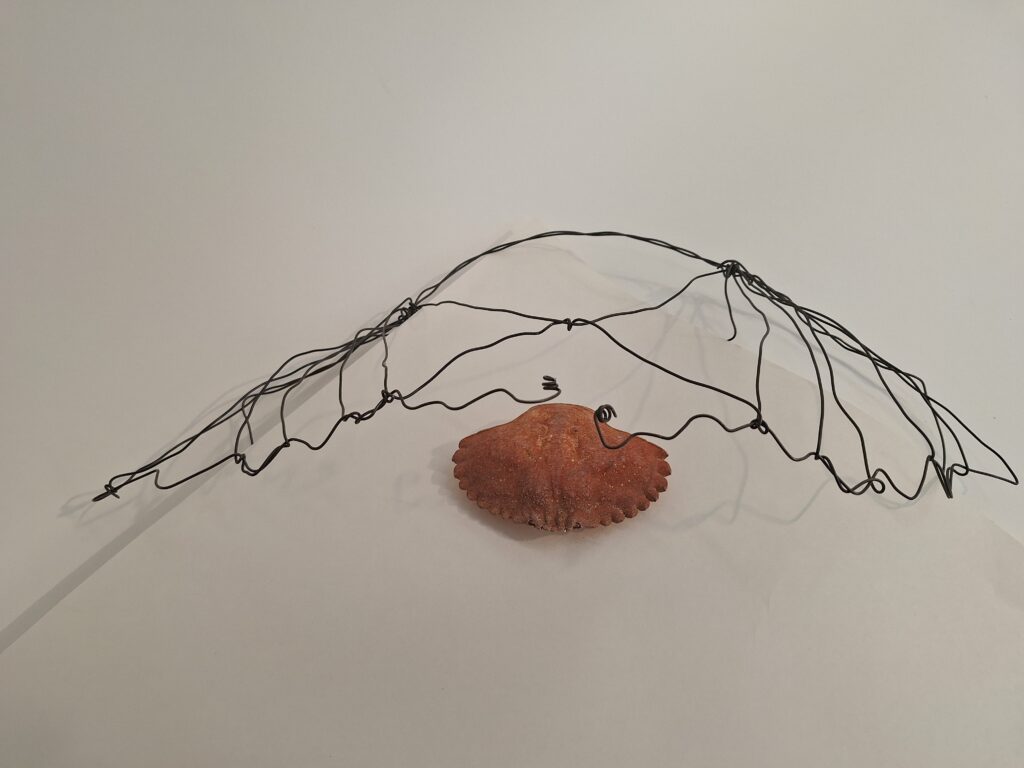
It felt really good to be bending the wire and watching the shape and form of the crab emerge. I built it in two stages- the top and then the bottom. The bottom is quite open, as it is in real life and I focused on the beautiful line that curves underneath the shell.
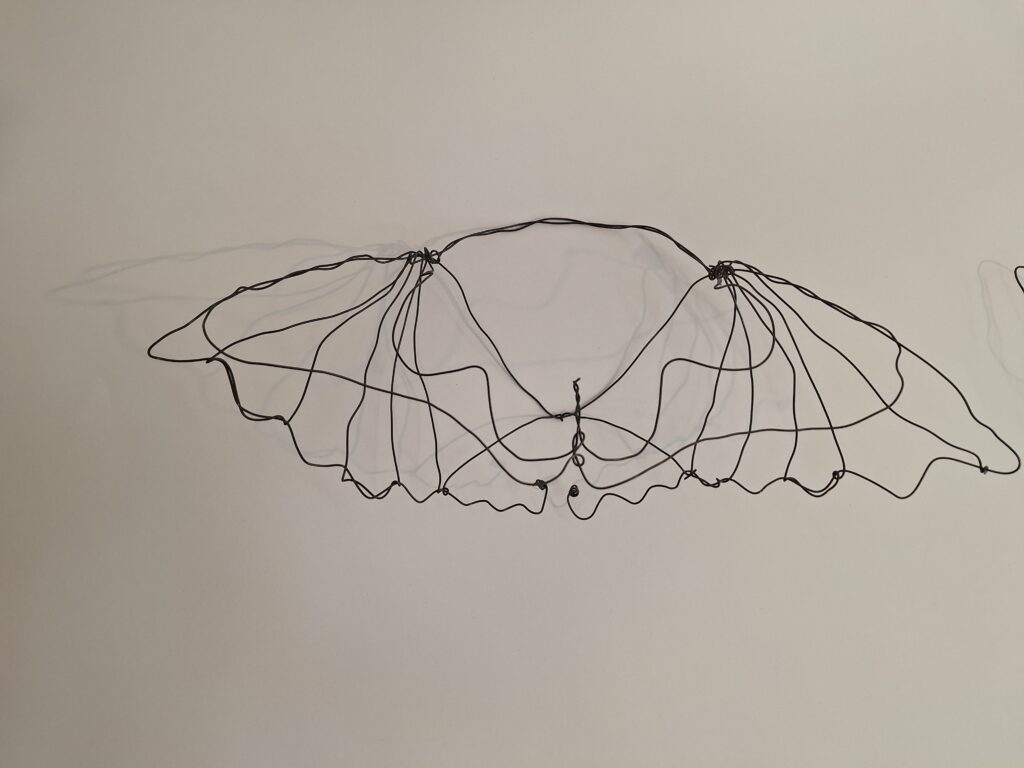
Reflecting on my artist research of David Oliveira, I see a relationship with my own exploration of negative space and also the way I explored varying the heaviness of line (linear mass) to emphasize certain areas.
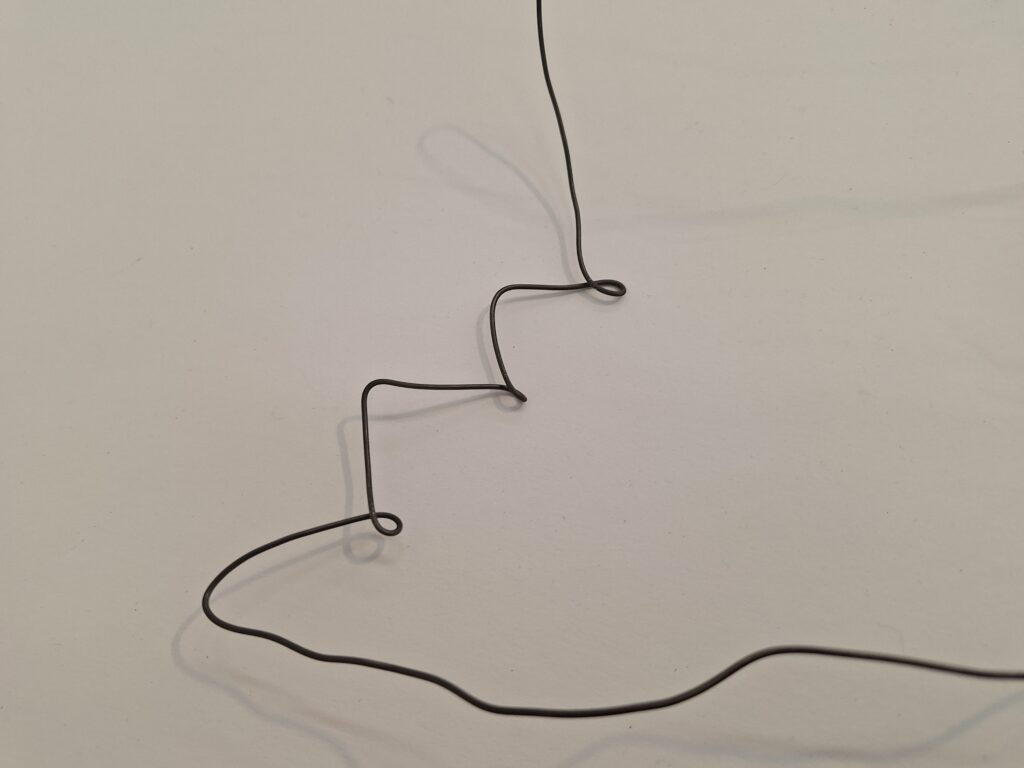
I also tried to imply the amazing spaces inside the crenellations/scallops of the edge by creating loops in the wire. This was a mimicking of the repetition I observed in the shell’s natural design.
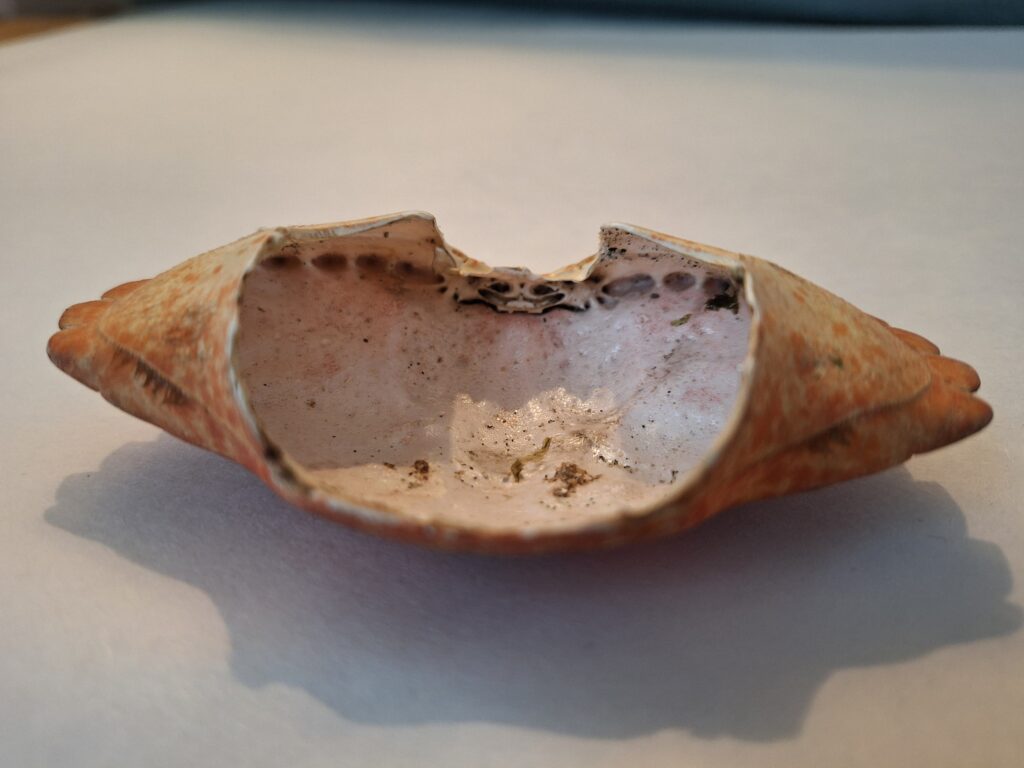
A challenge I encountered was figure out how to join the upper and lower parts of the shell. Version one was a separate piece that I hoped to hinge almost in the style of a suit of armour. But this proved unwieldy so I ended up mirroring the scalloped edge and just drawing it together in a few places- leaving the lines loose and expressive but also creating some depth from having the mirrored outlines.
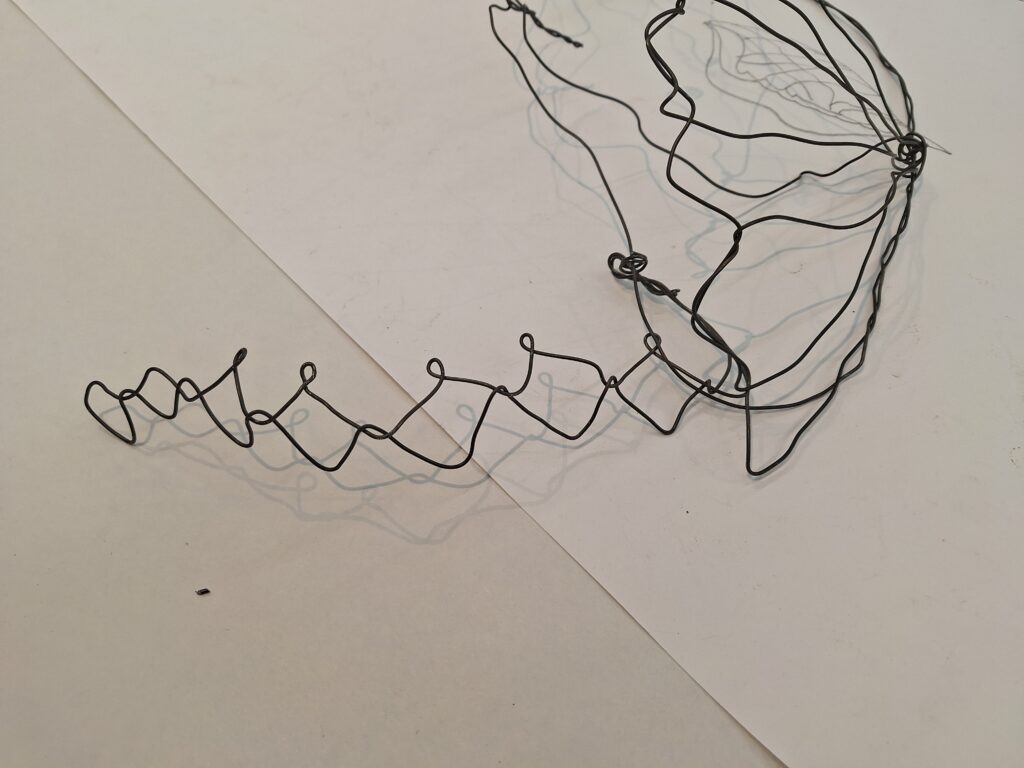
At one point it occurred to me that this shell has travelled thousands of kilometres with me in my car. It sat in a little tray, perhaps designed for loose change and such but which I filled with pebbles, shells, beach glass, a fir cone, my old dog’s collar and this beautiful crab shell. It also occurred to me that this shell has a story and that perhaps there is a poem to be written.
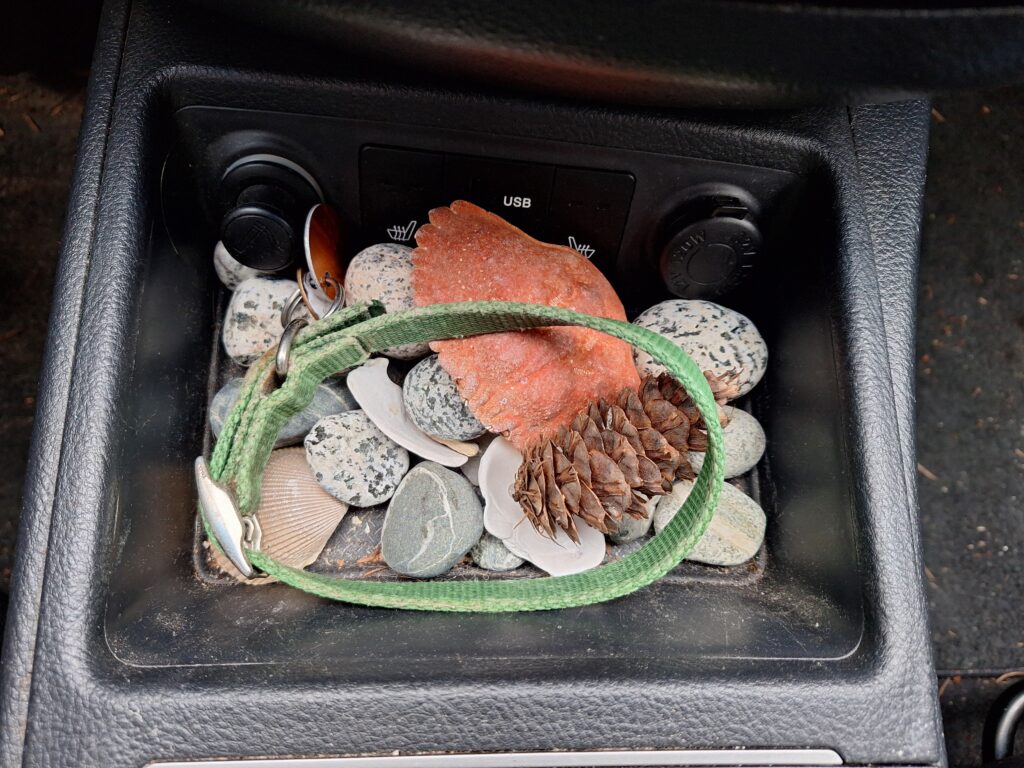
I thought this would be the finished shell but realised that I wanted to suggest the interesting shapes on the back of the shell. So I added another loop.
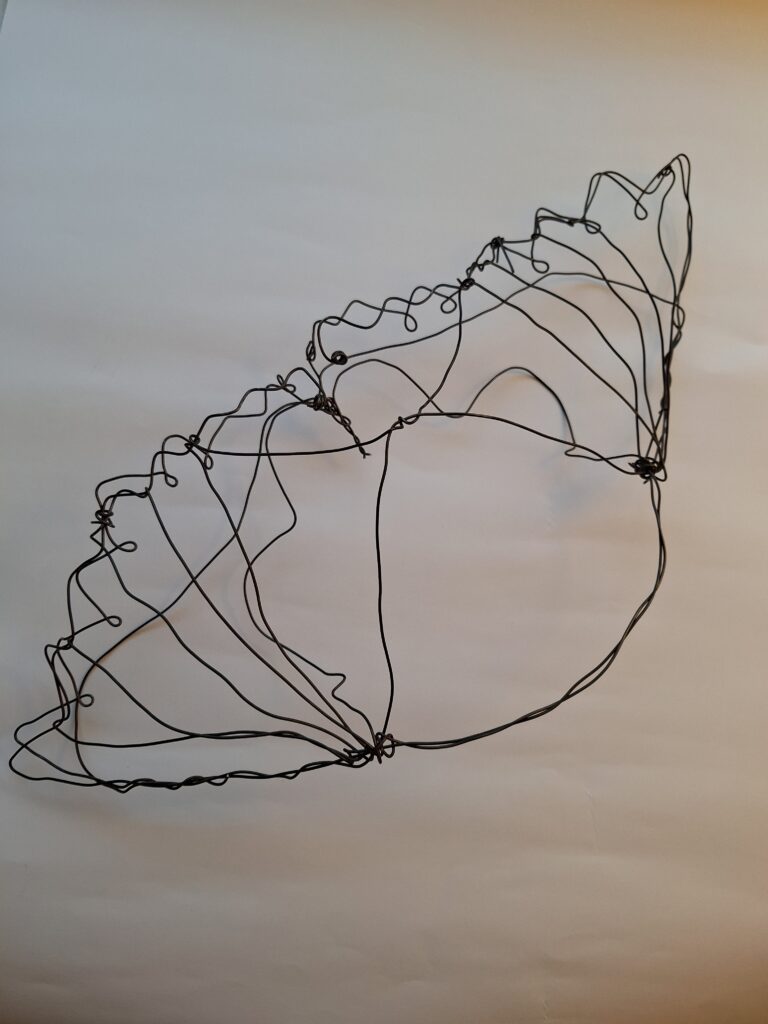
This is my finished crab shell. It’s my first wire sculpture ( not counting ones I made with pipe cleaners as a child). I’m amazed how the process helped me understand the intricacies of my object- the crab shell. It was a very enjoyable and enlightening experience.
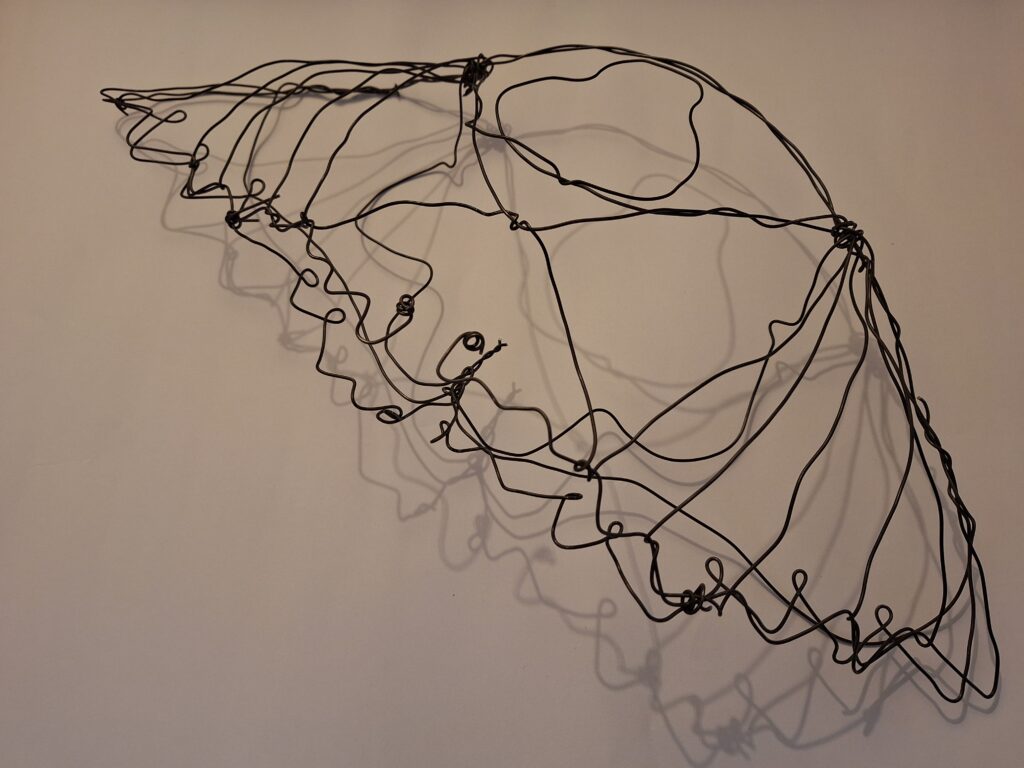
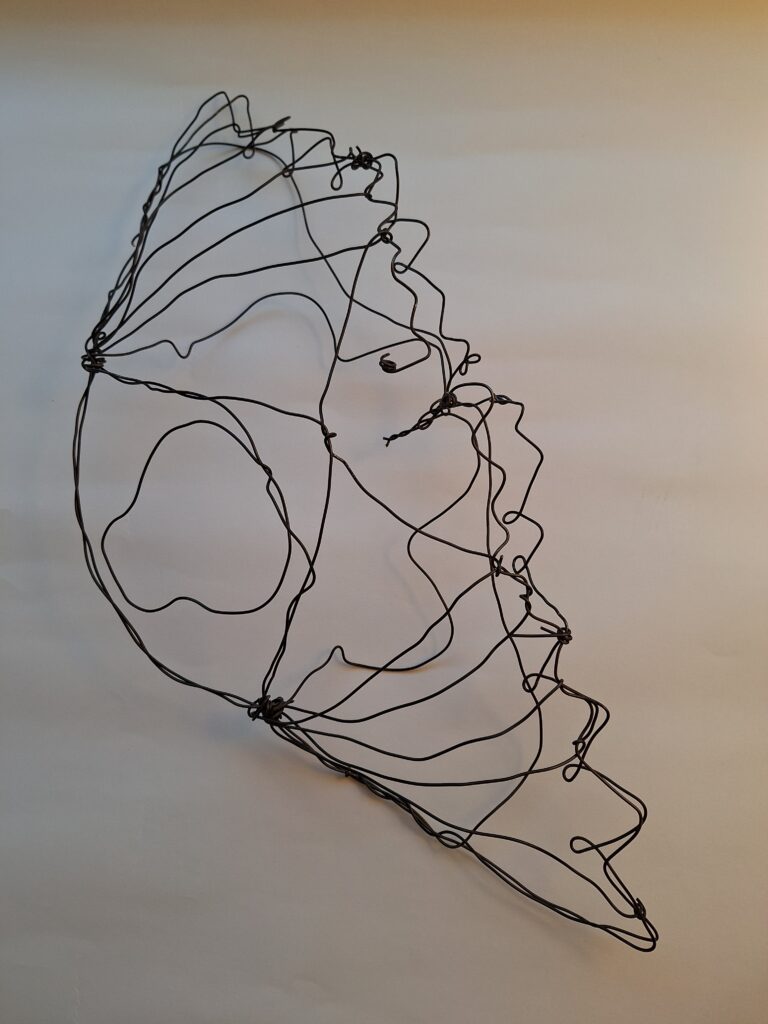
Crab (Crabster)
.
You’ve travelled with me
over mountains, through snow storms
to the grocery store, by the ocean shore
wedged in my car with rounded rocks
seashells, a fir cone
my old dog’s collar
.
You are a piece of a special place
I take with me on my journey
you speak of beauty and resilience
of armour and vulnerability
.
You bring the spirit of the Salish Sea
so strong I taste the brine
you bring the tides
the vast expanse of beach
the eternal circle of
life and death and life again
.
You sat there so long
I forgot how exquisite you are
and now I look closely
as I bend and twist wire
astonished to see sublime details
that were there all the time
.
I was born in July
never enthused to be a crab
– my mother a bull, my brother a lion-
I felt somehow ordinary
but in zooming in I see the wonder
of crustacean armoury
equal parts precise engineering
and fine design
.
In your lifetime you persisted
in the in-between land of sea and sky
scavenging on the seabed, finding safety under rocks
agile and vigilant, ancient and abundant
.
Perhaps after all this
I’ll take you back to your beach
leave to crumble and mingle with the sand
become one with salt water
.
Or perhaps I’ll settle you back in
amongst the pebbles and shells
next to Kenzie’s old collar
and we’ll drive off into the sunset
.
By Carys Owen
